Kiwi households ti fo wasting less food
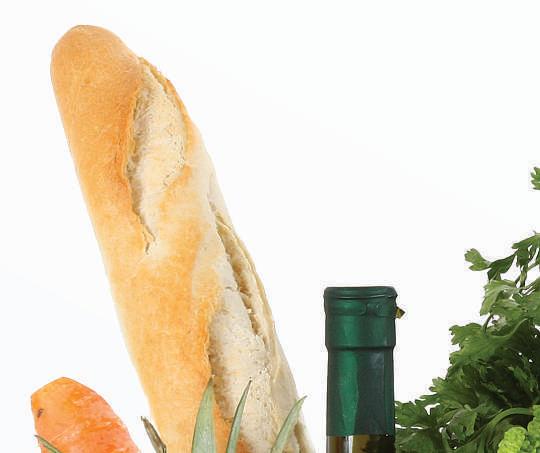
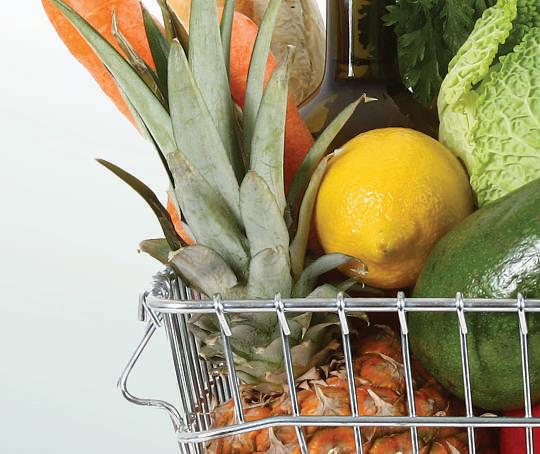
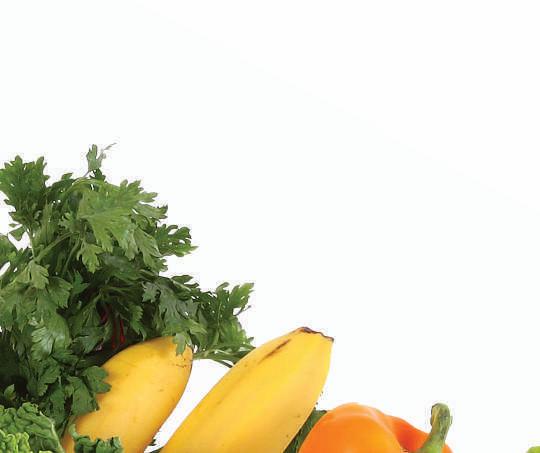
As the costofliving continues to rise, families arelooking to save dollars where they can. P6
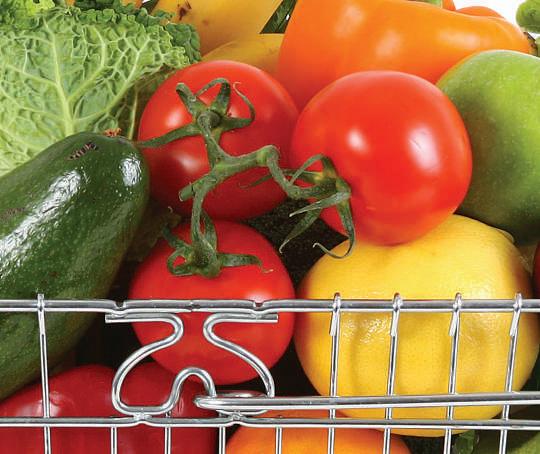

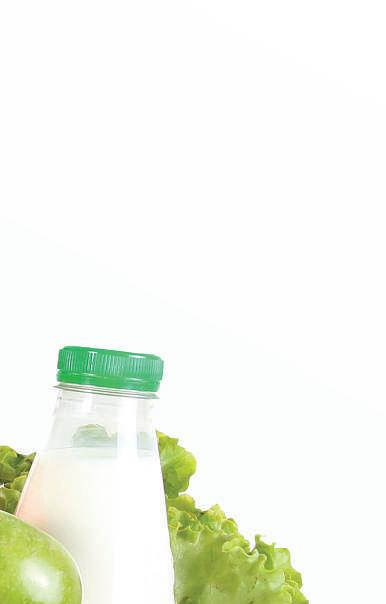
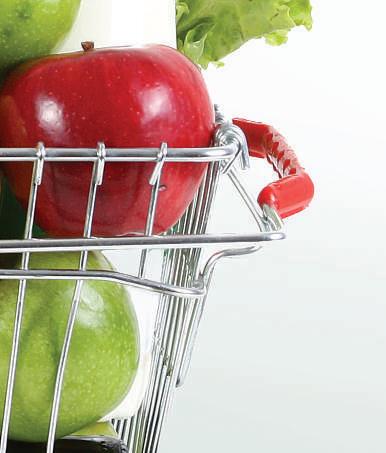
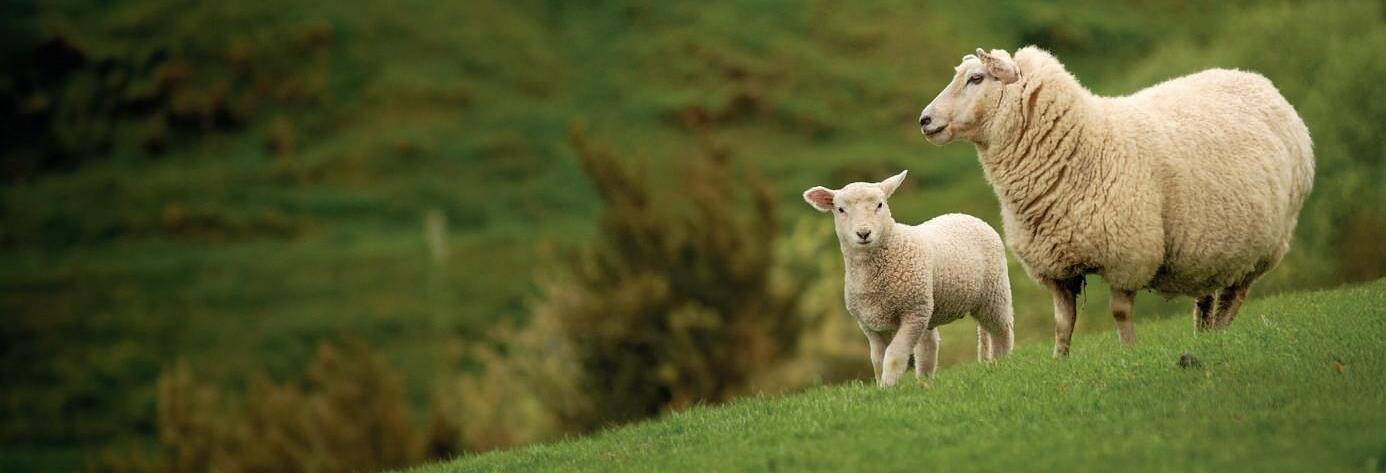






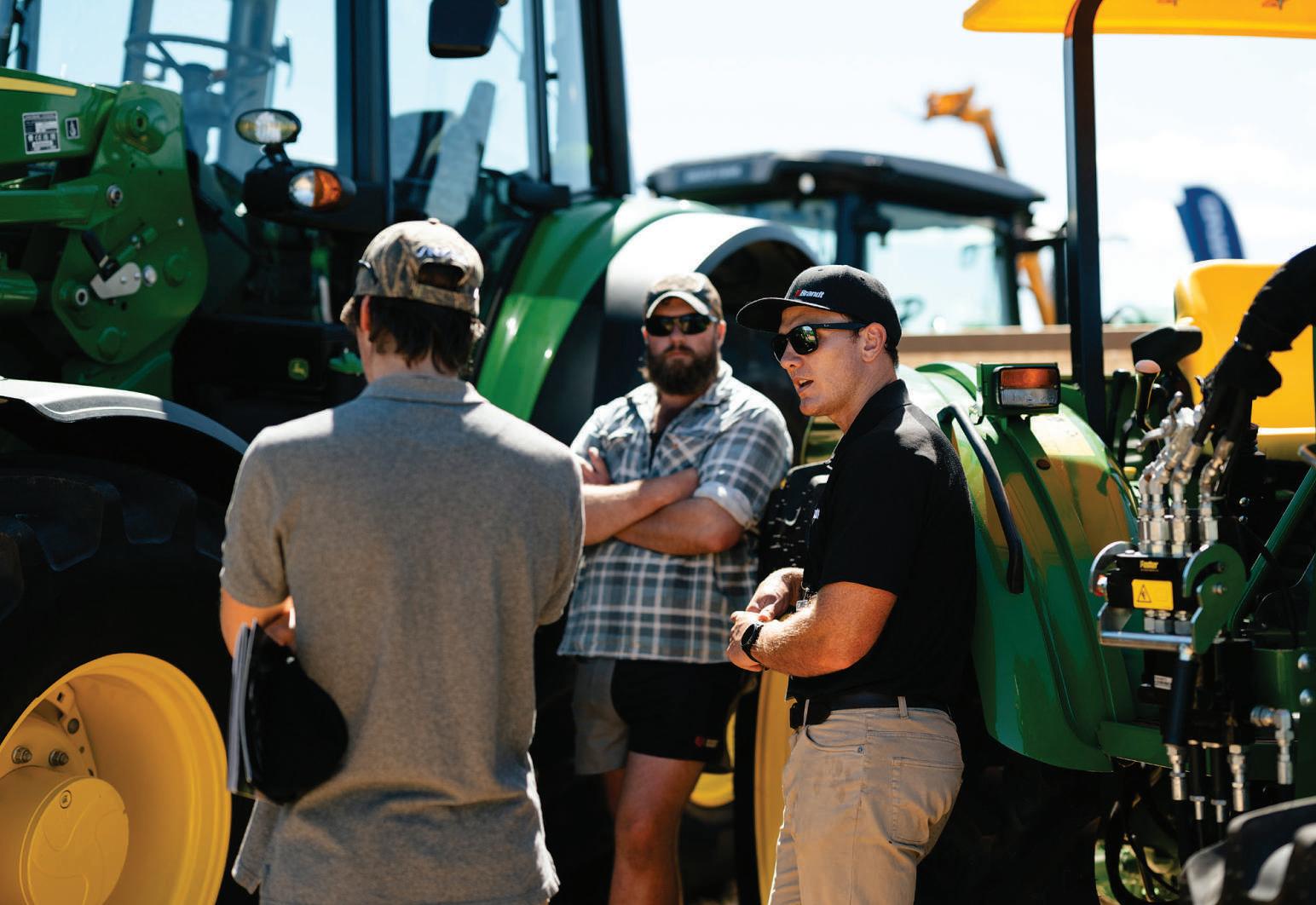




As the costofliving continues to rise, families arelooking to save dollars where they can. P6












Catherine Hubbard
Federated Farmers is lobbying the Government to quash historical and future Water Conservation Orders (WCO) as part of its Resource Management Act (RMA) reforms.
The group has also asked the Government to halt a Tasman District Council plan change that legally embeds the WCO protecting the crystal-clear waters of Golden Bay’s Te Waikoropupū Springs.
Golden Bay residents were “aghast” and saw the move as an affront to their values, according to Andrew Yuill, who was a joint applicant with Ngāti Tama Ki Te Waipounamu Trust for the springs’ WCO.
Freshwater advocacy group Choose Clean Water spokesperson Tom Kay said the removal of WCOs would see the degradation and pollution of the country’s most iconic and protected water bodies.
“The idea that we would strip those rivers of that protection, or remove the WCO system entirely, just shows Federated Farmers’ disdain for the protection of freshwater in New Zealand, and their disregard for anyone’s interests but their own short-term ones,” Kay said
In a letter to the Minister for RMA Reform Chris Bishop and other ministers last month, Federated Farmers said WCOs “allow special interest groups to over-ride councils and national direction” and let the courts “place environmental protections above economic and community considerations”.
Some Golden Bay Federated Farmers members spent $550,000 on a barrister and technical experts in the springs WCO process – a cost borne by 14 farmers.
A submission on RMA reform on freshwater from Farmers Across the Arthur Marble (FAMA) – a group of dairy farmers in the recharge area for the aquifer that
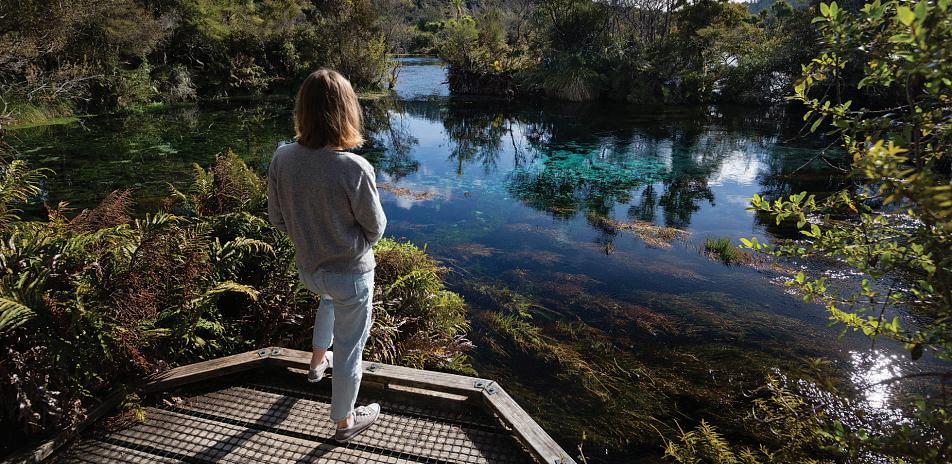
feeds the springs – said FAMA did not support WCOs being “weaponised by interest groups to drive land users to financial ruin”.
A WCO is a legal instrument used to recognise and protect the outstanding values of specific water bodies
Across the country, 16 waterways are protected under these types of orders, which can prohibit or restrict councils from issuing new water and discharge permits
Federated Farmers provincial president for Golden Bay Sue Brown said farmers were absolutely committed to water quality, and there was no desire to have the springs unprotected.
“It’s the legislative framework and how we get there that we, after our experience locally, have asked the minister to consider, and to be honest with the RMA reform going on, it would have been remiss not to ask the minister to consider it.”
The cultural significance of the springs was not being overlooked, Brown said.
Rather Federated Farmers argued that
there was no simple process under the RMA to review WCOs so they could incorporate new science and technology.
“Our experience is that they’re incredibly litigious, completely undemocratic and very expensive,” Brown said. “We hold water quality in high regard, and especially Te Waikoropupū Springs. We’re saying that we would like a better framework to deal with water quality.”
Save Our Springs co-ordinator Kevin Moran said he was shocked and disappointed about Federated Farmers’ stance, and had written to Labour leader Chris Hipkins and the Green Party.
The order took 10 years to get in place from its conception, was “loved” by residents and had strong community ownership, and should it be removed, would result in farmers’ social licence “going down the tube”.
Kay said if WCOs were stripped, there would be very little left protecting New Zealand’s freshwater.
“It will become a game of those with the most money, the most power and the most
influence over the system, which, at the moment, is the agricultural lobby having a say over what happens. We know what that means in New Zealand, it means our waterways get stuffed.”
Communities had fought for rivers that were threatened with damming and exploitation, Kay said, and WCOs were introduced to protect them, giving them “national park-like status”.
Yuill said many of the things people in the community had said about Federated Farmers’ letter were unprintable.
Having gone through a very long and exhaustive court process, Yuill said the lobbying was “disappointing”
“Everybody put a lot of resources into it, and I think everybody really did lean over to get the best advice that was possible to get to bring to bear on it.”
Tasman mayor Tim King said whatever side of the debate you were on, RMArelated processes that took a long time and were expensive did not appear to be a very effective or efficient way to manage resources.






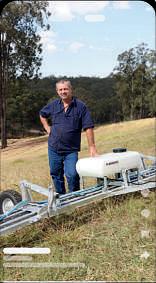



NZ
Sonita Chandar 027 446 6221
sonita.chandar@stuff.co.nz
DESIGN
Nina Weil
Rachel Trevelyan
Kwok Yi Lee
Sam Davenport
COVER PHOTO
Paul Prescott
HEAD OF REGIONAL & RURAL MARKETS
Kate Boreham 021 279 5361
kate.boreham@stuff.co.nz
Sonita Chandar Editor
Imagine this. A routine trip to the supermarket where you have meal plans in mind, you part with a few hundred dollars stocking up on all you may need for a week.
But midweek, that meal you planned no longer appeals that night and maybe you will make it another day Then, ruling those ingredients out, nothing else in your fridge tantalises the tastebuds, so another trip to the supermarket is in order
With something really tasty in mind, you buy what you need or maybe you opt for takeaways. And maybe you have enough leftovers for another meal.
Before you know it, the week has passed by and that silverbeet you were going to use in your cooking is looking limp, the tomatoes are over-ripe and starting to get mushy, and the mushrooms have begun to shrivel. They get pushed aside as you head to the supermarket to go through the process all over again.
With the cost of living rising, more Kiwis are having to adjust their spending habits. Whether it means cutting back on trips to the cafe for a coffee or cutting out streaming services, movies or concerts, there are things we can do without
What we can’t do without is food.
The annual food inflation rate is sitting at 5% – the highest rate since November 2023. So can we really afford to waste what we spend our hard-earned money on?
Well, the latest figures suggest we are getting better at not throwing away quite as much as we did two years ago.
The 2025 Rabobank-KiwiHarvest Food Waste Survey shows Kiwis are more committed to reducing household waste than they were in 2023, with 35% saying they are wasting less food than they did a year ago, and only 5% saying their food waste has increased.
It means a decrease in the overall value of wasted food across New Zealand, with this now dipping to $3 billion a year from $3.2b in 2023.
But we are still throwing out one-tenth of the food we buy each week. This means Kiwi households are effectively binning almost six weeks’ worth of their total food spend each year
So what is needed for people to stop throwing money down the drain and wasting so much food?
Of the respondents, a third felt the primary responsibility lay with parents or caregivers – fair point and one I agree with. It is something that does begin at
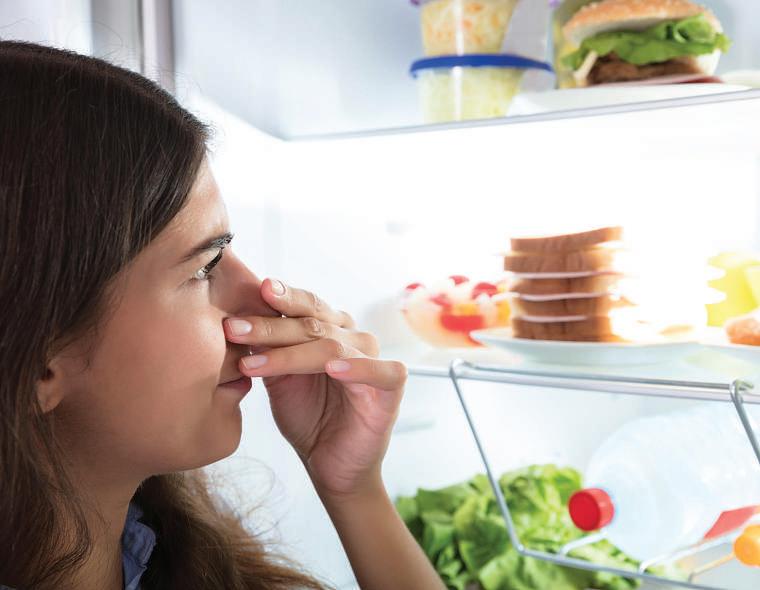
home and sticks with you throughout your life.
We often say to our children, ‘there are children starving out there, so don’t waste food’. But it goes in one ear and out the other because they have never experienced it
Generations have been raised differently. Baby Boomers and Generation X grew up in a society where children may have been taught different values to, say, Generation Z.
Speak to a person born in the 1950s or 60s and they will tell you they had to clean their plates if they wanted pudding, so they learnt to eat everything that was put in front of them.
The survey found estimated food waste reduced with age, from Gen Z recording average food waste of 17.8% to Baby Boomers only wasting 6.8%.
It also found males recorded higher estimated food waste than females, while urban dwellers were more wasteful than their rural counterparts
The throwaway society is not just limited to food. But with a depressed economy, high food inflation and an increase in unemployment, perhaps it’s time we all take a step back and reassess what we are doing.
We can do better.

Kiwi households are effectively binning almost six weeks’ worth of their total food spend each year.











Soil scientist Doug Edmeades takes a look at the models of fertiliser companies and wonders if change is needed.
The fertiliser scene in New Zealand has been dominated for some time now by Ravensdown and Ballance. Their business is based on the co-operative model.
Farmers need fertilisers and technical advice, and the co-ops need capital to build and then maintain manufacturing plants, and to provide necessary networks of infrastructure and technical support. All going well, the farmers are paid an annual rebate for the use of their dollars.
Because it’s often forgotten, it is important to note that this model puts the farmers in the driving seat – they are the owners of the co-operatives and have equal speaking rights in terms of the operation and management of the co-op.
The role of management was, at least initially, to prioritise their needs rather than optimise profits
I remember, as a young soil scientist in the Soil and Fertiliser Group at the Ruakura Research Station in the late 1970s, the amount of time and energy we put into working with the co-ops’ management and most importantly, their technical field reps. Our role was to provide them with the science and technology they needed to help shareholders.
ADVERTORIAL

“
I wonder whether super is becoming a dinosaur.
Doug Edmeades
Superphosphate was the ideal fertiliser for New Zealand’s purposes. It could be manufactured economically here from imported ingredients and mixed locally with other nutrients, such as potash (K) and magnesium (Mg), as required Importantly, super delivered two nutrients, phosphorous (P) and sulphur (S), essential for clover growth, and the clover, of course,
Mark and SoniaDillonare fifth-generation Southland farmersand proudofit. They’ve been operatingthe family’s 380 hectarefarm in Riversdale forover25years, and farm atotal of 1,000 hectares on other land either owned or leased. They also contract out to farmersdoing ag work including baling, beet plantingand lifting. At thehomefarm, wild turnip required alot of management, so whenthe opportunity arosein 2019 to trialthe CONVISO® SMARTSystem,they leapt at theopportunity.Markelaborates:
“Previously, we would have to spraythe paddocksfour timestocontrolwild turnip Now we’re just twosprays, so youdon’thave to go over the paddock as many times andit just all savestimeand diesel and money.”
BetterChemistry– forall
Sonia likes to call the CONVISO SMARTSystem “New Chemistry”. It’sgiven them theluxuryof
added the nitrogen (N) for free.
I am often asked why New Zealand is unique in the context of the fertiliser world In the northern hemisphere, their focus is on high analysis fertilisers which deliver N and P fertilisers. Those nutrients are the major ones required to drive crop production. In New Zealand, by contrast, our focus is on pastoral agriculture.
Clover provides the nitrogen N, and P and S are required in fertilisers to drive the clover – so we have a P and S industry.
Our co-operative model based around super and a clover-based pastoral industry has served the nation well for many years, but I suspect some changes are on the way.
Those farming in the 1980s will remember the chaos and uncertainty introduced when the then-Labour government removed the subsidies on fertiliser. The market for fertiliser collapsed overnight and, responding to a shrinking market, several superphosphate manufacturing plants were closed Most farmers struggled to adapt. A few went down the gurgler, unable to make ends meet.
Out of these ashes emerged two large co-operative companies, Ravensdown and Ballance as we know them today, and they were told by the political masters to compete on market share as the mechanism for price control.
The first signs of corporatisation appeared The goals of the farmer-led co-operatives began to be distorted. The signs of this are now emerging.
Their once highly respected technical
growing beet on land wheretheywouldn’tbeable to grow conventionalbeet
“This land hasn’thad thebesthusbandry previously.It’sgot areal heavyweed loading of bolters andwildturnipand this newchemistry just takes allthat weed out,” says Sonia Shealsothinksit’sbetterfor theenvironment.
“Weuse less chemicals andit’seven better forthe environment not having tractorsgoing overmultipletimes, which is multiple loads of exhaustgoing up into the atmosphere. So, it’s waybetter forus.”
Sonia absolutelyrecommendsCONVISO SMART to other farmers, especially if they’regrowing in places whereconventionalbeet isn’tideal due to weed loading
She sums it up nicely: “CONVISO savestime and it savesmoney.”

representatives have morphed into salespeople, who often have little science and technical background. I’ve heard many farmers complain that the turnover of staff is high, and the new staff are young with little experience. Confidence in their co-op is declining. No rebates will be paid this financial year. The market size is again declining – thanks to eco-forestry – and manufacturing capacity is being trimmed yet again. The cost of maintaining the co-ops’ ageing manufacturing plants could be a problem and one can only imagine the difficulty of obtaining resource consents to operate them now that some are engulfed in urban areas.
Competition from new corporates is also becoming more apparent. They do not carry the overheads of the co-operatives, such as a manufacturing plant, networks of stores and support staff. They are exploring new pathways to bring fertilisers to farmers at competitive prices by importing directly from the world market.
I wonder whether super is becoming a dinosaur. For environmental reasons, it is becoming problematic to manufacture. Its low analysis makes it more expensive to transport and spread relative to high analysis products on the international market.
And why not strip out a whole layer of middle management and sales staff in the co-ops and leave the job of offering technical advice to the existing network of independent farm consultants? Maybe, just maybe, this corporate approach is the way of tomorrow.



Less food is being thrown away as Kiwis show greater commitment to reducing household food waste and spending. By
Sonita Chandar.
Kiwis are becoming more frugal and wasting less food as costs climb – but new figures show households are still throwing away nearly six weeks of groceries each year.
Undertaken in July, the 2025 Rabobank-KiwiHarvest New Zealand Food Waste Survey shows Kiwis are more committed to reducing household waste than they were two years ago, with 35% saying they are wasting less food than they did a year ago, and only 5% saying their food waste has increased.
Males wasted more food at 11.5% compared with 10.3% of females, and urban households at 12.4% were more wasteful than rural households at 7.8%
The survey found estimated food waste reduced with age, with Gen Z respondents recording average food waste of 17.8%, Gen Y 14.1%, Gen X 10.4% and Baby Boomers 6.8%.
All generations estimated they were less wasteful than in 2023 with the younger generations recording the biggest improvements.
The estimated percentage of household food waste from what was purchased each week dropped to 10.9% from 12.2% in 2023 when the last survey was conducted.
This means Kiwi households are effectively throwing away 5.7 weeks’ worth of their total food spend each year

This fall drove a drop in annual food waste per household down to $1364 from $1510 in 2023 and led to a decrease in the overall value of wasted food across New Zealand, with this now dipping to $3.0 billion per annum from $3.2 billion in 2023, despite marginal increases in household food spend and the total number of households
KiwiHarvest collects good food before it goes to waste and redistributes excess food to those in need, thereby reducing the harmful impact of food waste on the environment and helping to create lasting positive social change by nourishing those in need.
Every month KiwiHarvest rescues about 250,000kg of good-quality surplus food and diverts this back to people who are struggling across New Zealand KiwiHarvest chief executive officer Angela Calver says it was encouraging to see food waste trending lower.
“It’s really pleasing to see things are heading in the right direction However, this year’s estimated food waste, valued at $3 billion, is still too high and remains a major concern,” she says.
“At average annual waste of 10.9% per household, Kiwi households are effectively throwing away nearly six weeks’ worth of groceries each year.”
While Kiwis’ food waste attitudes and behaviours are largely similar to 2023, small improvements in a few key areas helped drive food waste lower.
With gross domestic product figures showing the economy in worse shape than expected, Kiwis are already cutting back on luxuries such as dining out or
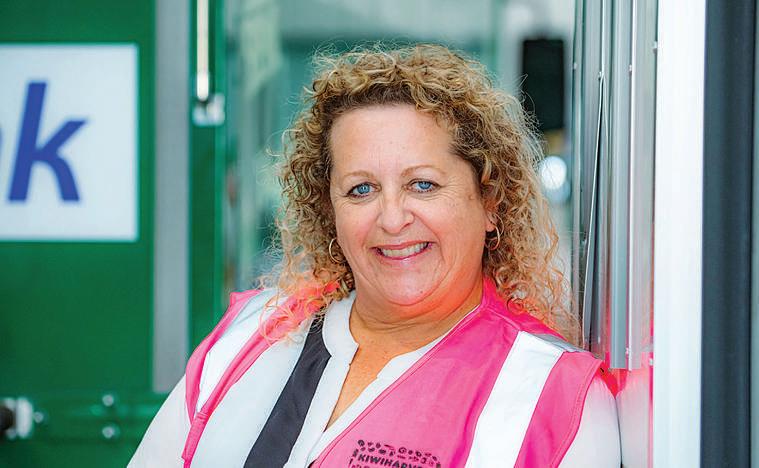
entertainment. However, the latest survey found the average weekly household food spend was up only slightly to $240 from $238 in 2023.
Wasting money was the biggest concern, with 73% of respondents saying they remain the most concerned about “the wasted money” resulting from food waste.
Rabobank head of sustainable business development Blake Holgate said cost-of-living pressures were also likely contributing to food waste-related behavioural changes within households.
“With food price inflation high over this
period, households have effectively had to cut back on the amount of food th buy,” he said.
‘Food going off before you can eat it’ and ‘before use-by and best-before dates’ remain the reasons most frequently cited for food waste at 45% and 33% respectively.
Unsurprisingly, the survey found the foods most regularly wasted were in line with 2023, with vegetables at 39%, bread 28%, and fruit 24% continuing to hold the top three spots on the list.
Knowledge of farming and food production has been part of the reason for less food wastage as people have a better understanding and knowledge of farming, especially among men and those living in urban areas.
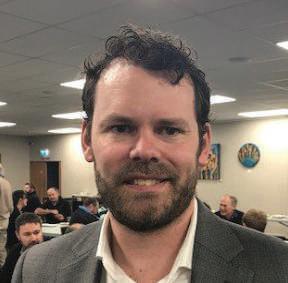
“Just under a third of Kiwis, 31%, said they have reduced the amount of groceries they buy as a result of rising prices and this has undoubtedly forced Kiwis to be a bit more selective about their food purchases and to pick fewer items that might end up in the bin.”
Gen Z has shown notable vement in their knowledge of farming since the last wave, while Baby Boomers continue to lead overall in their knowledge of farming and where food comes from.
While Kiwis’ attitudes to, and knowledge of, food waste were largely in line with 2023, small improvements in a few key areas had helped drive the dip in estimated food waste recorded in the 2025 survey.
“The survey found Kiwis’ knowledge of food production was on the rise, with 37% saying they know ‘quite a bit’ or a ‘great deal’ about this topic, and this was showing up in growing food waste concerns related to the wasted efforts of farmers here in New Zealand and abroad,” Holgate said.
These changes were filtering
through to improvements in food wasterelated behaviours. Kiwis using shopping lists was up to 64% from 60%, and 39% now planned their meals compared to 36% last time.
“This all helps to reduce food waste by cutting down on unnecessary purchases,” Holgate said.
“We’ve also seen a lift in the proportion of New Zealanders saying, ‘I cook with or encourage my
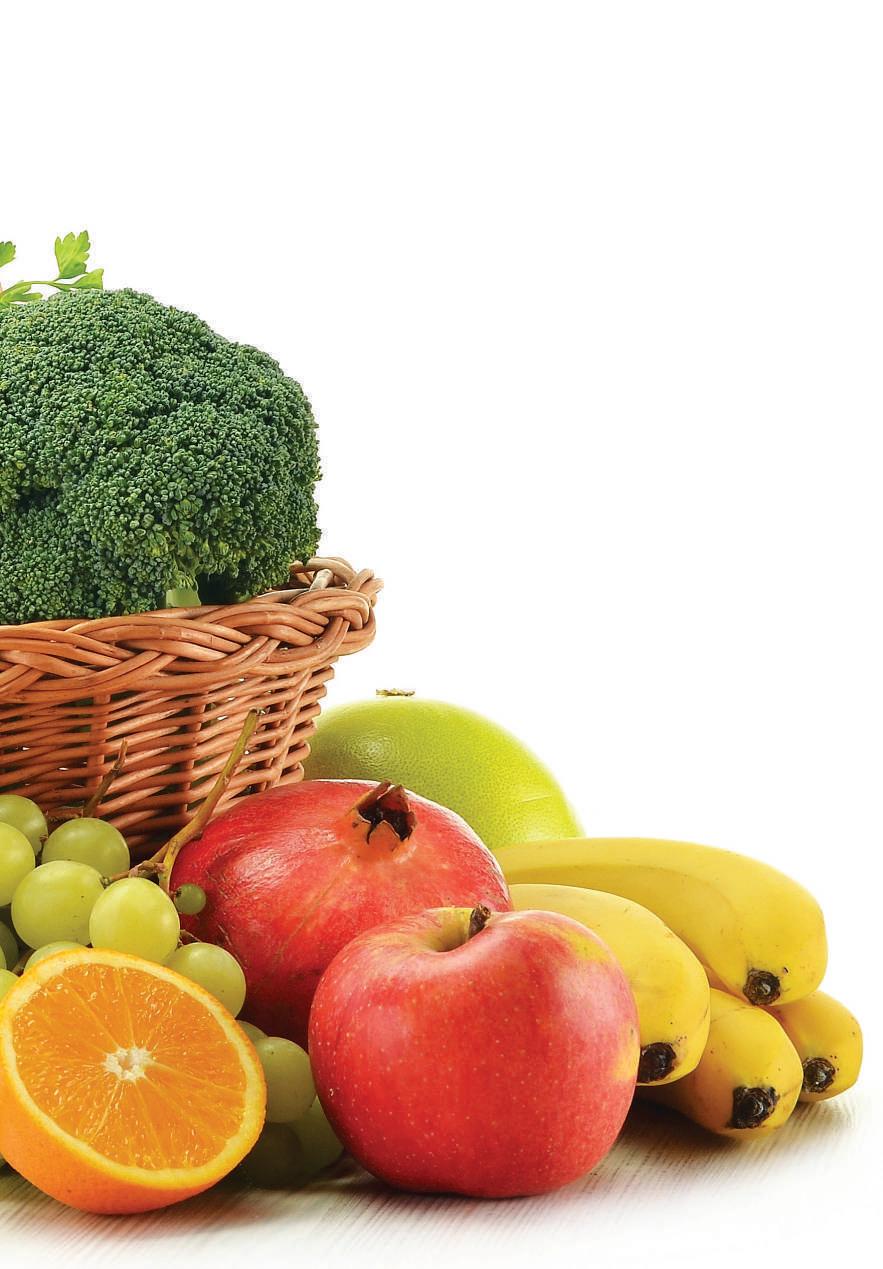
family to cook using all the edible parts of the vegetables’ (56% from 53%).”
Almost half the population, 49% – down from 52% – has thrown away food without tasting it in the past year, showing a decline since 2022, though it happens less than once every three months.
It is still more prevalent in urban areas, but this behaviour is also becoming less frequent among those who have done it
For the first time, this year’s survey asked participants whether enough was being done to educate Kiwis on food waste and who should take responsibility.
“The results were really compelling, with fewer than one in five (19%) of Kiwis believing enough is being done to educate New Zealanders in this area,” Calver said.
“This sends a strong message about how important Kiwis think this issue is, and it’s not surprising given the multitude of both financial and environmental benefits that come with decreased household food waste.”
When it came to responsibility for food waste education, New Zealanders deemed parents/caregivers primarily accountable (34%), then the Government and education system (28%), the food industry with local councils (21%), media (8%), charities (5%) and community groups and public figures (both 2%).

“Ultimately, there are a range of groups that have the ability to shift the dial on the food-waste front and it’s our view that greater collaboration across all of these groups is required if we’re going to make further inroads on New Zealand’s food waste issue,” Calver said.
With more Kiwi kids now living in households where food regularly runs out, demand for KiwiHarvest’s food rescue services had never been greater, she said.
“Since the last food waste survey in mid-2023, KiwiHarvest has increased the volume of food that we rescue by 52% and we are now providing the equivalent of more than 125,000 meals back into the community each week.
“With so many Kiwis in need, it’s crucial we continue to prioritise public education on food waste and ensure the amount of perfectly good food New Zealanders are wasting continues to fall.
“KiwiHarvest is committed to working with Rabobank and other partners to tackle this issue by empowering New Zealanders with practical information to help reduce food waste at home.”
Rabobank partnered with food rescue charity KiwiHarvest in 2020 as part of the bank’s wider commitment to work alongside its rural customers to support sustainable food production and its global vision around global food security.
Rabobank has commissioned research examining Kiwis’ food waste habits since 2017 – using the four most recent editions of the research (2021, 2022, 2023 and 2025) in collaboration with KiwiHarvest – to help raise awareness and ultimately to reduce the volume of quality food we currently produce that ends up going to waste.
The survey was administered by independent research agency Kantar and involved interviews with 1501 New Zealanders between July 14 and July 28, 2025.
Data collection was nationally representative to ensure that results could be used to measure New Zealanders’ attitudes and behaviours.
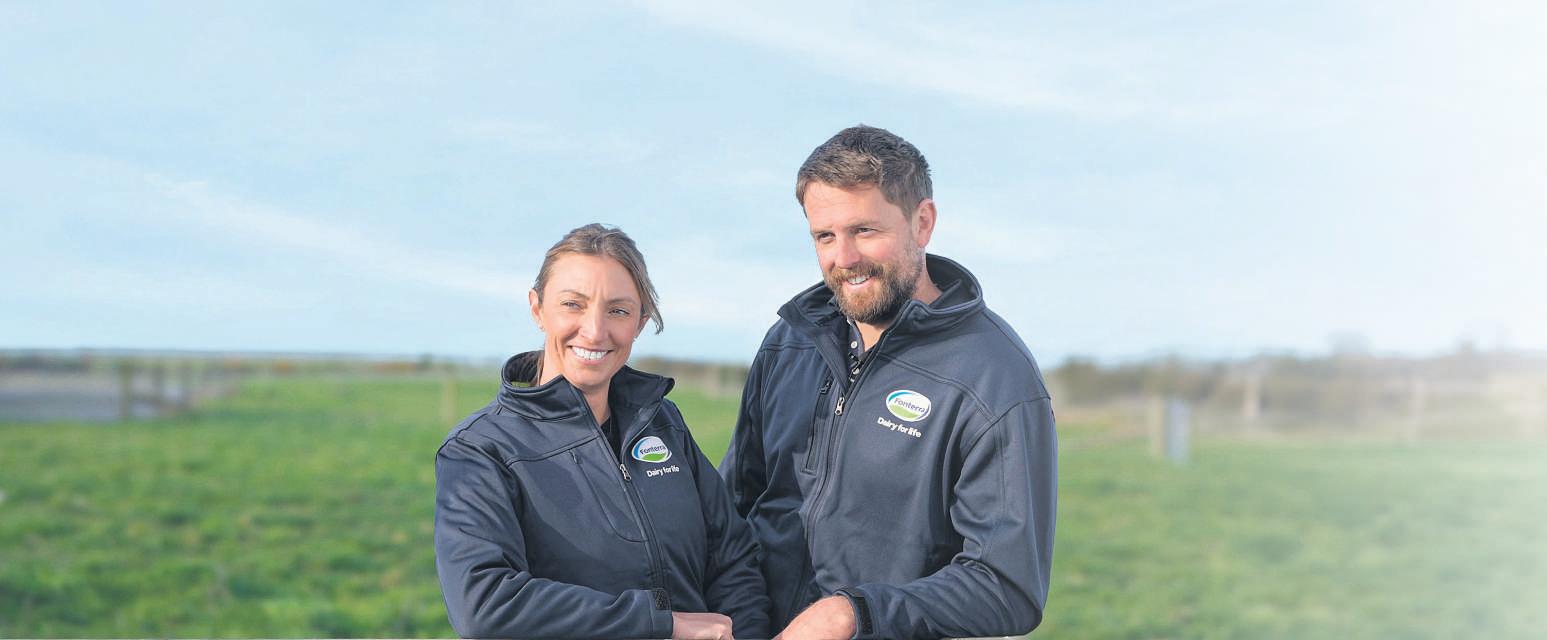

You’re workinghardtoday to buildthe foundation for tomorrow. Fonterra is hereto supportyou on your path to farm ownership with tools, advice,and aCo-op that worksfor you.
Learnmoreabout pathways forfuturefarmownership at fonterra.com/next-gen-co-op Your future Your pathways. Your Co-op.


Some farmers are set for the golden lottery ticket, with a potential windfall of $3.2 billion into their pockets, courtesy of Fonterra’s sale of its global consumer brands.
Is it a good deal? I’m not sure.
Let’s start with some background.
Fonterra was established in October 2001 following the merger of the country’s two largest dairy co-operatives, New Zealand Dairy Group (NZDG) and Kiwi Co-operative Dairies, with the New Zealand Dairy Board.
Fonterra has announced it will sell its global consumer brands, including Anchor and Mainland, and associated businesses to French dairy giant Lactalis for $3.845 billion with a top-up taking it to about $4.2b.
The sale is subject to shareholder and regulatory approvals expected this month or November, with completion expected in the first half of 2026.
The company’s consumer business brands purportedly comprise 15% of the co-op’s total milk solids.
Fonterra says it will target a tax-free capital return of $2 per share, which is approximately $3.2 billion, following completion of the sale.
In simple terms, the Farm Gate price sets the commodity input price for the consumer manufacturing business, the food service and ingredient businesses. Higher input costs, as for any manufacturing business, lower the manufacturing or, in this case, the consumer business profitability.
Statutory accounts for the consumer business unit as reported in 2022 and 2023 show the business lost money, but has subsequently made an operating profit in 2024, and in 2025 of $319m (after corporate costs of $48m) representing 10.4% of sales and a return on capital of 8.8% for the nine months ended April 30, 2025.
Those are not great results so at face value extracting a sales price in excess of $4 billion looks a winner
Let the new owner add the value Fonterra struggled to do, with conflicting return incentives; a higher milk pay-out






Business adviser Gordon Stuart, from Chaperon Financial Services, takes a look at the potential sale of Fonterra’s global consumer brands.

meant higher input costs for the consumer business.
The transaction leaves us with many questions. Here are six. I will only discuss four to six further in this article but the first three are still issues for note:
Is the sale of the global consumer brands akin to property bequeathed to the council for public use, that is subsequently sold off to fund subsequent councillors’ whims?
How much of this will reduce farmers’ debt or buy the farm next door? Will old behaviours emerge of capitalising gains?
Why is NZ inc, as a country, unable to run vertically integrated, value-added international businesses?
Does a co-operative structure favour the buyer/supplier/creditors over shareholders?
Is the farm gate price transparent and fair and who actually understands it or how it can or can’t be manipulated? Will capital proceeds be more productive in farmers’ hands or that of Fonterra?
A key variable is the milk price. It determines the raw material cost of sales or input costs for the value-added or downstream businesses – ingredients, food services and consumer Higher farm gate price equals more for the creditor hat and less for the unit holder whose profits are derived from the value-added business. Fonterra farmers wear both hats so are indifferent.
Fonterra’s latest farm gate milk price manual effective August 1, 2025, is 96 pages of incredibly long detail. The Commerce Commission reviews the manual each season. Many levers can be pulled to tweak outcomes.
High Fonterra prices paid to its milk suppliers force its competitors the independent processors (Miraka, Westland, Synlait and Open Country) to pay higher milk prices to their respective farm suppliers – resulting in decreased processor profitability. This probably explains why with pressure from the banks Westland was sold to Yili in 2019, and just
“ Are we taking a long-term view or simply selling another business offshore to release capital to farmers?
Gordon Stuart
recently, Miraka to Open Country Dairy
I suspect even Einstein would struggle to comprehend the Fonterra farm gate milk price manual. In setting its milk price each year, Fonterra also directly sets its own profit. Fonterra also holds all the strings in determining the regulatory base milk price. Co-operatives by nature have a conflict of interest between supplier and shareholder hats.
It has also been reported that the sale includes a 10-year agreement for Fonterra to sell milk and ingredients to Lactalis
As the terms of this agreement are clearly confidential it is also difficult to assess whether Fonterra has the ability to pass through cost increases/share savings or will simply be squeezed by Lactalis over time.
Branded businesses require long-term strategy and patient equity capital to grow internationally. Are we taking a long-term view or simply selling another business offshore to release capital to farmers?
Finally, the directors believe farmers can use the capital return better than Fonterra. What do farmers’ think?
Having researched this article I am none the wiser whether farmers should vote to sell or not to sell
Colin

SimplyFert expansionaims to grow market shareone year afterlaunching.
Therange,launchedtoBallanceAgriNutrient shareholderslastSeptember, hasnow addedSustaiN,the cooperative’sbest-selling nitrogen inhibitor fertiliser,tothe 25 core Ballance nutrientsonoffer.
Customerscollect fertiliser directly from selected Ballance hubs,with Foremans Rd in Christchurch andKapuni recently addedtoits MountOperations, Maru Street in MountMaunganui, Timaru andAwarualocations
SimplyFert Business ManagerCourtney Nimmo, whoalsorunsa 450-hectare sheep,beef,and arable farm in South Otagowithher partnerSam,says competitionishealthy when it serves the best interestsofNew Zealandfarmers.
“While we recognisethatmost BallanceAgri-Nutrientsshareholders valueour full-serviceoffering, SimplyFert responds to thechanging
needsoffarmers.Asa farmer,I want to seemoreoptions,evenifitmeans disrupting ourselves,”she says
Courtney adds shareholders appreciate the option to purchase high-quality,bulk fertiliser andchoosewhat’sbestfor their operation, leveraging NewZealand’s largestfertiliserdistributionnetwork
“ManySimplyFertcustomers have theirown transportoptions,sothe ex-hub modelmeans they canoptimise theirloads to town by backloadingwith nutrientsfor thenextcrop.
“SimplyFertisabout understanding andoffering what ourwider Ballance shareholders need,whether that’s service,adviceoronfarmsolutions as well as more ways to providemorecosteffectivenutrients,” shesays.
SimplyFert is availablethrough direct ex-hub collection andrequiresminimum of tentonne order. To findout more visitsimplyfert.co.nz/simplyfert/en/ NZD/how-it-works







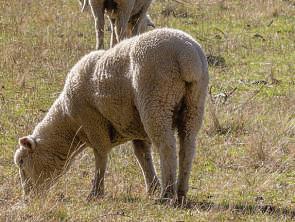






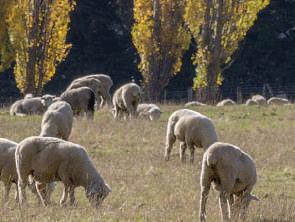
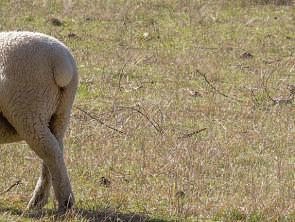
Confidence has continued to soar in the broader agricultural economy for the fourth consecutive quarter, with results at their second highest in the past decade.
The latest Rabobank Rural Confidence Survey has found that after net readings of +44% in the last two quarters, farmer confidence in the broader agricultural economy crept marginally higher to a net reading of +46%.
The latest net confidence reading has only been bettered once across the last 10 years (+54% in the second quarter of 2017) and marked the fourth successive quarter of elevated farmer sentiment.
Completed in early September, the survey found 51% of New Zealand farmers were now expecting the performance of the broader agri economy to improve in the year ahead – up from 48% in the previous quarter.
The number expecting conditions to worsen also rose, to 5% from 4%. The remaining 43% of farmers expected conditions to stay the same – down slightly from 44% previously.
A new question in the survey was about the increase of the United States tariff rate hike on New Zealand goods from 10% to 15%. Farmers who participated in the most recent survey were asked to rate their level of concern on a scale from 1-10.
The results among farmers and growers were mixed.
“While we are yet to see any major drop-off in US demand for New Zealand’s agricultural products, the recent increase – announced on July 31 – to a 15% tariff does put us at a competitive disadvantage to countries like Australia which remained at a tariff of 10%,” Rabobank chief executive officer Todd Charteris said.
“The level of farmer concern over this tariff increase was variable, with farmer responses at either end of the scale and the average score sitting at 5.5 out of 10.”
Beef + Lamb New Zealand chairperson Kate Acland said tariffs were just one of many global headwinds and significant risks the sector was having to navigate.
“The 15% tariff now applying to all New Zealand exports heading into the US could strip nearly $500 million from red meat sector earnings in a season chipping away at the gains,” Acland said.
“
The cyclical nature of farming means it’s rare for farmer sentiment to stay elevated for such an extended period.
Todd Charteris
“The US lamb industry is also continuing to push strongly for higher tariffs on New Zealand imports, while Chinese authorities are undertaking a safeguard investigation into beef imports.
“Even with tariffs being imposed by the US, New Zealand is still benefiting from robust international demand, particularly from the US, Europe and the United Kingdom.
“Consumers in those markets are paying more for beef and lamb, despite high inflation, which is helping hold prices up.”
Charteris added: “The full impact of the increased US tariff rates on New Zealand, and on other countries like Brazil, has yet to be fully felt
“And New Zealand farmers and growers will be keeping a close watch on how these tariffs impact global agri commodity trade over the months ahead.”
Charteris said it was fantastic to see





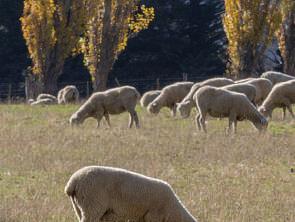



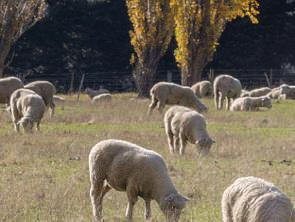
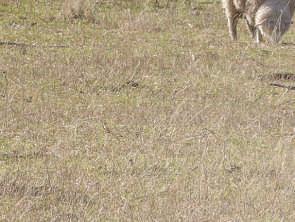

But tariffs are just one of many global headwinds the sector is having to navigate, writes Sonita Chandar.
strong farmer confidence extending into a fourth successive quarter.
“The cyclical nature of farming means it’s rare for farmer sentiment to stay elevated for such an extended period.
“And if we look back across the history of the survey, we have to go all the way back to the 2013-14 season for the last time we had four consecutive quarters where confidence was at such lofty heights.”
Among farmers holding a positive outlook on the agri economy, the key reasons given were higher commodity prices – cited by 67% as the major source of optimism – increasing demand (20%) and falling interest rates (17%).
Among the 5% of farmers expecting conditions in the agri economy to deteriorate, 43% cited government policy/ intervention, 30% said rising input prices and 29% blamed overseas markets/ economies for their pessimism.
Charteris said a record milk price had been the catalyst for the latest extended spell of strong farmer sentiment. This was also the case in 2013-14.
“Since our last survey in June, we’ve seen Fonterra maintain its milk price forecast of $10.00/kgMS for the 2025-26 season, and we’ve also seen them raise their forecast for 2024-25 season to $10.15/kgMS.”
He also said the recent announcement from Fonterra that it had agreed to sell its consumer and associated businesses to Lactalis contributed to the higher confidence.
Fonterra farmers will vote on the sale at their meeting in October. If they approve, the sale could bring a tax-free capital return of $2.00 per share for farmer shareholders.
“All this news has been warmly welcomed by sector participants and has helped keep dairy farmer sentiment high.”
Charteris said red meat sector confidence was also soaring off the back of continuing high commodity prices for beef and sheepmeat
“Led by the US, global demand for New Zealand beef remains strong and this has flowed through to record-breaking prices for cattle over recent months,” Charteris said.
“Farmgate lamb prices are also at historical highs and a combination of tight domestic supply and strong overseas demand is expected to ensure pricing stays elevated over the remainder of 2025.”
Farmers’ expectations of their own farm business performance over the next 12 months were also up from last quarter with the net reading rising to +42% from +40% previously.
Dairy farmer expectations for their businesses rose to +54%, while sheep and beef farmers rose +53%. However, grower sentiment fell to a net reading of +1%, down from +20% three months ago.
“While prices for key New Zealand horticultural products like kiwifruit and apples remain healthy, they haven’t quite reached the record-breaking heights that we’ve seen in the dairy and red meat sectors,” Charteris said.
“And growers were split on the prospects for their own businesses in the year ahead, with 31% expecting performance to improve, 30% expecting it to worsen and 34% expecting it to remain the same.”
Farmer investment intentions were largely unchanged from last quarter and remain strong. Dairy farmers have the strongest investment intent and horticulturalists the weakest.
“Dairy farmers continue to have the strongest investment intentions and their net reading on this measure rose to +43%, with close to half (46%) expecting to increase investment and only 3% expecting that investment will reduce,” Charteris said.
“Sheep and beef farmers and horticulturalists’ investment intentions were weaker than those of their dairy counterparts, but positive overall at net readings of +17% and +5% respectively.”
Like a forward pack in a rugby team, under-fertilised soils won’t hold without conditioning, says Ravensdown head of product and service development Mike White.
Before a rugby player hits the field, they fuel up with a good breakfast, strap on their boots and go over their game plan.
Nutrients work the same way – before you see results in your stock, or pastures, your soil needs to be ready to perform Fertiliser is that pre-game meal, and superphosphate is the breakfast that sets your season up for success.
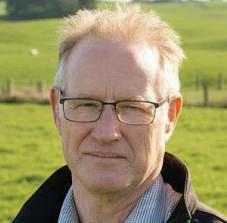
Tough economic times over the past few seasons forced many farmers to compromise on fertiliser. Returns, particularly for sheep and beef, were squeezed. This was reflected in lower fertiliser sales volumes, which were close to 30% below historical levels. But cutting back is a short-term tactic – just like skipping pre-season training, prolonged reductions inevitably mean soil fertility and overall productivity drop.
You may not see the impact straight away, as research shows that in the first
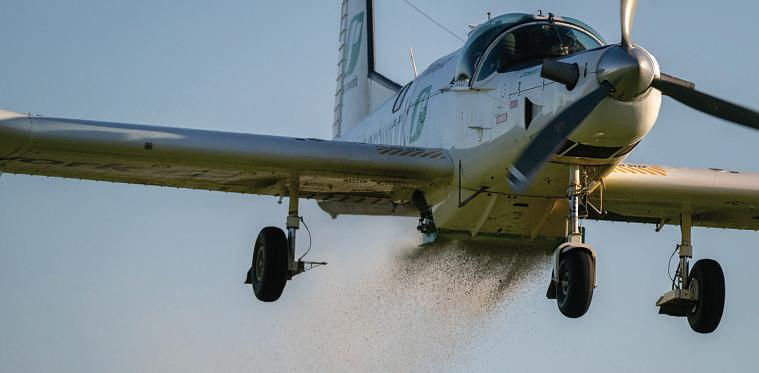
one to three years, the drop in pasture productivity may not noticeable. But by years five to seven of reduced application, pasture growth can reduce by up to 32%, lamb weights fall and ewe condition suffers. It’s similar to letting the forwards run without proper conditioning: the impact may not show immediately, but it catches up over time. This spring presents a rare opportunity After several tight seasons, interest rates are easing, and Beef + Lamb NZ forecasts improved farmgate returns, and steady lamb and beef prices.
For sheep and beef farmers, it’s the moment to catch up on both the balance sheet and rebuild soil fertility levels to match desired productivity. Pasture is the engine of productivity, and underfed soils
can take three to five years to recover.
Farm-specific factors influence how quickly your soil responds. Well-subdivided paddocks and high-feed-utilisation grazing systems help stop declines from withholding fertiliser by mitigating the amount of nutrient transfer by stock.
Properties with a strong fertiliser history are more resilient in the short term, as are easy-contoured soils with reliable rainfall, compared to steeper country with shallower soils. Stock classes also matter; generally, finishing systems with young stock are more vulnerable to reduced fertiliser inputs than mixed breeding farms with mature stock, where declines in pasture quality can be better managed.
It’s important to select the right fertiliser Superphosphate delivers phosphorus and sulphur in the right balance to drive
clover growth, the “nitrogen engine” that powers your pastures. Add potassium, magnesium, lime, and check trace element status where required and economically justified, and you’ve got the full team on the field. Unlike some alternatives, sulphur in superphosphate is provided as sulphate, which is immediately available to plants.
Applied in spring, you’ll see the impact in that season’s growth and grazing. Research shows combining phosphorus and sulphate promotes stronger pasture growth than either applied alone.
Superphosphate has changed little over the past century, but what has changed is the way it’s applied. Fertiliser application today is smarter and more precise.
GPS-guided spreaders, aerial guidance and nutrient-mapping software let you target inputs to high-priority blocks – feed crops, new pastures and finishing areas –while lower-performing or steeper blocks can receive lighter rates. It’s like calling set plays in rugby: each paddock gets the right strategy for the conditions, reducing waste and improving returns.
Skipping fertiliser may not hurt immediately, but the consequences build quietly. For sheep and beef farmers in the current upturn, and with dairy prices relatively high, spring is the perfect time to repay nutrient debt and restore soil fertility.
Fertiliser isn’t simply a cost, it’s your soil’s pre-game meal. Just like skipping breakfast, if your soil isn’t ready, your performance will show it. Conversely, the better fed your pastures are, the stronger your season will perform.
So catch up on soil fertility and give your paddocks the fuel they need to hit the field running.





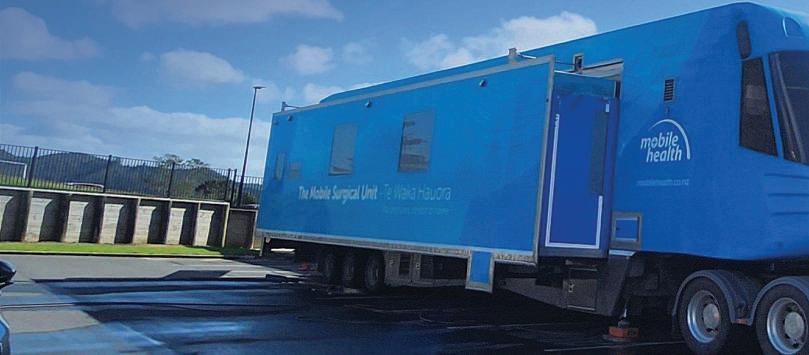

Steve Macmillan
The Mobile Health Clinic has been a game-changer to thousands of rural New Zealanders over the years.
In total, its Mobile Surgical Unit – Te Waka Hauora, has treated 35,000 patients in the 23 years since it hit the road and chief executive Mark Eager says provincial New Zealand remains a prime focus when the 20-metre-long truck rolls into town
In essence, it is a modern, fully equipped operating theatre, designed and built for a wide range of day surgeries. Once parked, the surgical unit deploys its self-levelling hydraulic ram stabilisers and at the touch of a button the sides of the trailer unit expand outwards, doubling its width.
On a recent visit to Northland’s Bay of Islands Hospital, 40 children received urgent dental surgery in just five days – an example, says Eager, of how the service can take a big workload off rural hospitals in heartland farming areas
Eager says a guiding principle of New Zealand Health Strategy is equitable access for all New Zealanders to a comprehensive range of health and disability services and with almost 900,000 people living and working in rural areas it’s critical.
“I have seen first-hand, time and again, the positive impact our mobile clinic has by treating patients where they work and live. Our aim is always to deliver a safe, friendly, quality-driven service and judging by the feedback we receive, we are achieving that,” says Eager.
One mother recently referred to it as a super bus for giving their child the smile they deserve, while another was relieved to have their operation so close to home and rated it an outstanding service for smaller communities.
On average, the unit completes 1500 operations annually compared to the 1000 operations most hospital theatres
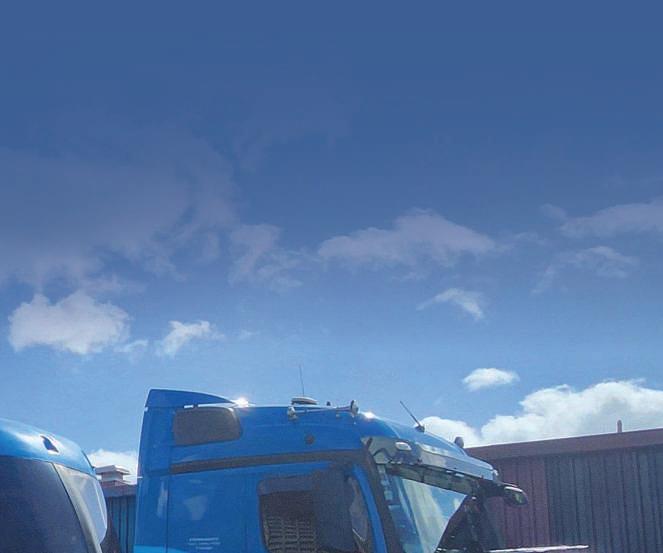



undertake each year and Eager reckons it gives rural folk confidence they will be looked after.
“Our rural hospitals do a great job for the farming communities around New Zealand and they way I see it, when we come to town with the Mobile Surgical Unit, the town takes ownership because it is the people’s service.”
“An important part of that ownership from the town is getting the local nursing staff involved working in the unit. While many of these staff have not been formally trained in theatre, these nurses have gained a broader range of skills often, from emergencies they attend.”
Eager says an addition to both of those healthcare options is the Primary Response in Medical Emergencies (PRIME) service, of which he is the
national chairperson. PRIME is comprised of a team of specially trained GPs and nurses to give rural communities fast and effective care by responding to rural trauma and medical emergencies faster
“The PRIME service is jointly funded by Health New Zealand Te Whatu Ora and ACC. It is essentially a group of first responders throughout rural New Zealand where there is a strong crossover of care for people.
“Often it is the rural nurse that is called out to a motor vehicle accident, for example, so the network is creating transferable skills and confidence they have gained from working in the theatre.”
Eager is proud of the ability of the unit to complete procedures such as colonoscopies, gastroscopies
and laparoscopic hernias, to minor orthopaedic operations such as carpal tunnel and Dupuytren’s – and of course paediatric dental operations under general anaesthetic.
Technology has reduced rural isolation so Eager and his team can get their mobile operating unit to the door of rural hospitals around the country
This has been a game-changer in taking pressure off the national hospital system.
“I liken our programme to publishing a milk run around New Zealand. It takes us five weeks to go from Gore to the East Coast of the North Island, the Far North and back again. We cover 25 locations around the country and generally operate for two weeks in the South Island and three weeks in the North Island. Then we do it all again.”
The unit can have three patients on board at a time – one in the waiting room, one on the operating table and one in the recovery room They are cared for by a charge nurse, recovery nurse and anaesthetic technician, as well as the local rural staff working as the scrub nurse covering sterilisation, admissions and discharges. The surgeon and anaesthetist come from the nearest larger centre.
“So, we work alongside the local staff and help train them as we go. It is a really good model.”
Despite having taken on the chief executive role of the Mobile Health Unit 18 years ago, Eager is hands-on in the unit, having trained as a nurse in 1981 –a career he loves.
He cites the most important part of the organisation as the culture.
“My sales pitch to new staff is to think of your busiest day because it is full-on but fun. We can finish at 5pm, drive for four hours to find a motel and get ready to set up in another location the next day.”
For Eager and his colleagues, their purpose has always been about helping rural New Zealanders and making a positive difference to their lives every day.
Weather Catherine Hubbard
Tasman’s two extreme rain events will cost its local body about $11.2 million, according to council staff
But that’s a drop in the ocean compared with the $260m estimated long-term economic impact of the events calculated by the Nelson Regional Development Agency (NRDA).
An NRDA report cited by council staff said the $50m in potentially lost GDP in the next year alone was split across $25m in forestry, $11m in horticulture and viticulture, $6m in livestock, $6m in tourism, and about $400,000 in aquaculture.
In terms of council assets, damage to river infrastructure was estimated as costing at least $20m, though this was insured.
Roading repairs cost an estimated $20m to $25m, which NZTA was subsidising between 81% and 91%.
At a recent full Tasman District Council meeting, finance strategy and planning manager Matthew McGlinchey said the majority of this cost was expected to be incurred this year, but some would flex over into the following financial year.
At present they were re-forecasting the Annual Plan, which would come back to the council in December, he said.
As a result of damage, approximately 300-400 properties need to revalued, the report said.
Moving forward, group manager environmental science Rob Smith said staff were working on a “refresh” of river management.
Councillor Kit Maling said the event was Motueka River’s biggest flood since 1877, and the impact on council assets was “nowhere near” what the impact was on rural people and their farms, which would take years to recover.
Asked about the impact on the council’s insurance costs, council staff said that

“Joint recovery manager Steve Manners said there were many challenges in obtaining funding to offset the costs from central government.
wouldn’t be seen until it was time to renew. Tasman mayor Tim King said the $11.2m estimate wasn’t a small figure, but it wasn’t hundreds of millions, as had been seen at Marlborough.
“It’s not as big as the impact on Nelson, and it’s certainly nothing compared to the Cyclone Gabrielle kind of figures
“Part of that is because we lost no bridges, and the cost of bridges would exponentially have increased the cost of this event.”
Approaches to bridges were lost, and in some cases both approaches to some bridges, but the bridges themselves
stood up – “some barely”, he said. Joint recovery manager Steve Manners said there were many challenges in obtaining funding to offset the costs from central government.
The National Emergency Management Agency had picked up on the issue and were looking to establish a protocol for a different approach for the next emergency local governments might face, Manners said.
So while the Government had been very supportive, “sometimes, actually extracting [funds] is a hell of a lot harder than we might think”.
Will Johnston
While farmers grappled with drought conditions during the summer months, Port Taranaki reaped the rewards with an increase in bulk dry cargo adding to its profit for the last financial year.
Port Taranaki announced its latest financial results for the year ending June 30, 2025, revealing a net profit after tax of $9.5 million – an increase from the previous year’s $8.59m.
Despite a decline in bulk liquids due to decreased oil and gas production, the port recorded an 8.9% rise in bulk dry cargoes, handling 821,000 tonnes
This growth was mainly driven by an influx of animal feed imports, which Taranaki farmers fed out to their herds during the dry summer months.
Log exports also saw a modest increase, halting three years of decline with 948,000 tonnes shipped. Overall, there was a decline in total trade volumes, driven mainly by a sharp drop in bulk liquids like methanol and oil.

Total trade through the port fell 20.7% to 3.1 million tonnes, down nearly 810,000 tonnes from the previous year’s 3.91 million tonnes.
The downturn was due to a 39.2% decrease in bulk liquid volumes, from 2.16 million tonnes to 1.31 million tonnes.
Methanol, the port’s largest bulk liquid export, suffered the heaviest blow.
Volumes plunged by 762,000 tonnes from 1.28 million tonnes to 518,000
tonnes in the last financial year
The reduction was due to production cutbacks by Canadian-owned Methanex, which idled its plant to sell gas to electricity generation retailers during the country’s energy shortages over the past two winters.
Port Taranaki chief executive Simon Craddock said the bulk liquids trade continued to be negatively impacted by declining gas reserves and constraints
within the energy sector.
“Methanex’s temporary shutdowns were consequential but necessary moves to shore up New Zealand’s electricity supply at a time of constrained energy resources,” he said.
“While the result is very pleasing and is a reflection of the hard work and resilience of the port team and business, it needs to be considered in the context of a forecast trend of reduced bulk liquids product volumes through the port.”
He said a few years ago bulk liquids were at 3 million tonnes, making up 60% of total port trade. It now made up about 42% of trade.
The decline in total trade impacted vessel visits, with 241 recorded in 202425, 11 fewer than its 252 last year.
“We anticipate the decline in liquid bulk volumes to stabilise over the next three years,” Craddock said.
He said the port was prioritising developing multi-use infrastructure and pursuing new trade opportunities like LNG imports and renewable energy support like offshore wind.
Port chairperson Jeff Kendrew said the energy sector’s uncertainty would shape the immediate outlook of the port.
Emissions
Will Harvie
Vaccines to limit methane emissions from cows and other farm animals are expected to reach New Zealand farms as soon as next year.
AgriZero, a government-backed joint venture with $191 million to invest, aims to reduce farm methane emissions by 30% by 2030, and push towards near-zero by 2040.
Chief executive Wayne McNee said there had been “great progress” since the company started three years ago. It has bought into nine companies and provided research funding for five more, with 77 further investments on its radar. McNee laid out a plan to offer two or three options on the market by the end of the decade, with more to come during the 2030s. Vaccines are the “holy grail” because they are low-dose and easy to administer.
The new technology could help to protect New Zealand’s farming exports as overseas buyers demand more sustainably produced food. Recent trade agreements also include climate change provisions, adding pressure on producers to cut emissions.
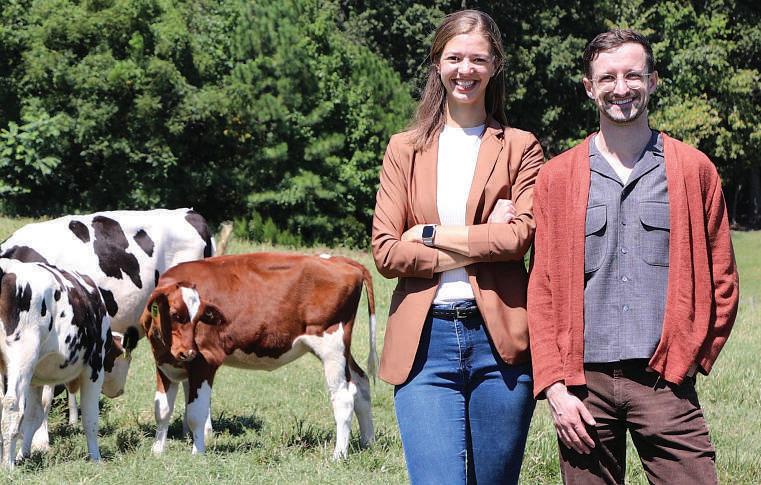
New Zealand’s farm customers overseas – such as Nestlé, McDonald’s and Tesco – were “pushing deep into their supply chains to get emissions reductions”, AgriZero said in its 2024 annual report. That includes the family dairy farm on the
Canterbury Plains.
rumens (one of four stomachs), and belch it out because it is not useful to them. About 5% exits from the other end, according to the AG Emissions Centre.
Their urine also contains nitrogen compounds, which after complicated processes become nitrous oxide.
Three biotech companies – Bovotica, BiomEdit and Hoofprint Biome – have similar-sounding research programmes. All three claim that their microbes improve cattle health, weight and milk production. They have identified naturally occurring microbes in cows that already limit methane production. The idea is to return them to cattle as probiotics and similar products.
The Government owns 50% of AgriZero, Fonterra owns 26%, and the rest is split between A2 Milk, ANZ, Anzco, ASB, BNZ, Rabobank, Ravensdown, Silver Fern Farms and Synlait.
As the private sector invests in the company, the state matches that dollar for dollar. McNee denied that this was simply a massive subsidy for farming.
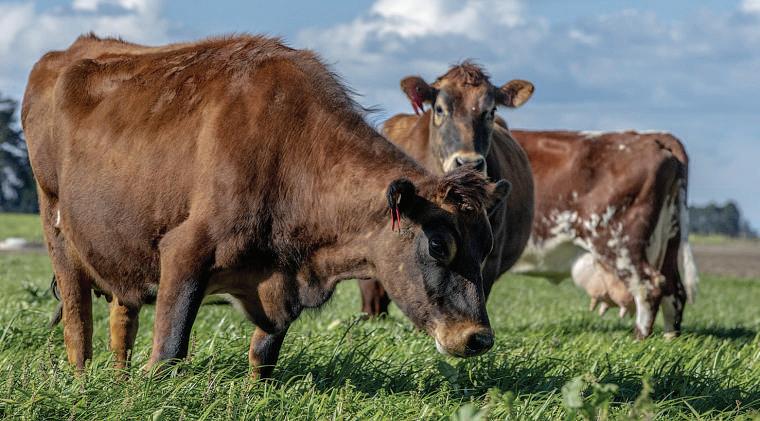

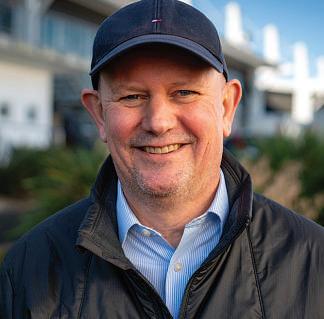
“The messaging from our consumers and our customers around the world is clear – we’ve got to deliver a range of sustainable outcomes,” said Silver Fern Farms chief executive Dan Boulton
New Zealand’s red meat and dairy farmers were already “amongst the most emissions-efficient producers in the world”, said Beef + Lamb chairperson Kate Acland.
If some farmers wanted to improve their emissions, having tools available would be useful, Acland added. But there should be no vaccine or treatment mandates.
“It’s critical that farmers have choices.”
AgriZero has targeted two farm animal emissions – methane and nitrous oxide.
Methane is the second-largest contributor to global warming, and nitrous oxide the third-largest. Cows, sheep, deer and goats produce methane in their


About 53% of New Zealand’s emissions came from agriculture, he said.
“We were set up because this is a wicked problem that would not be solved without
If some of these investments work out, there could be profits for AgriZero and its owners. The National Party was “absolutely committed to making our obligations to reduce emissions to net zero as a country by 2050, [and] that’s where the role of technologies comes in,” said Todd McClay, the minister for agriculture and of trade.
For all the biotech, there is one option that is off the table for now – genetic engineering.
Two companies in AgriZero’s portfolio are researching both GE and non-GE products. Whether the GE ones came to New Zealand was up to future governments, McNee said
shows plantain can reduce nitrate leaching by 26% through reducing the concentration of nitrogen in urine.
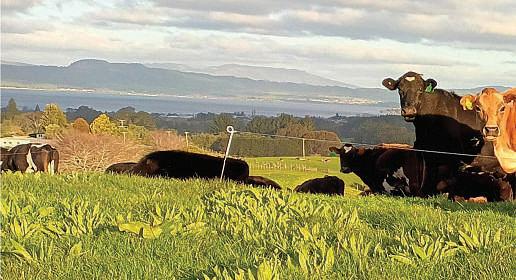


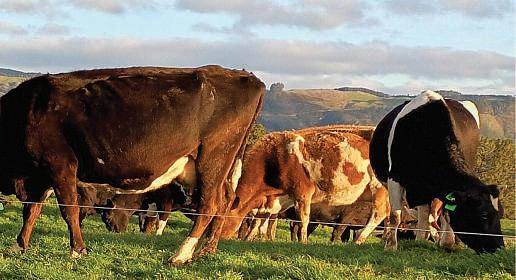


A seven-year research programme on nitrate leaching and plantain has shown promising results from its third year and could save farmers big dollars in the future writes Sonita Chandar.
The latest plantain trial results have once again shown it plays a role in reducing nitrogen leaching.

New data from the Plantain Potency Programme, a seven-year research initiative led by DairyNZ, confirmed results that even small amounts of plantain in pasture can reduce leaching and gives farmers a science-backed and effective solution to meeting environmental goals.
The programme aims to help dairy farmers improve freshwater quality through using plantain pastures, a lowcost forage solution to nitrate leaching.
It incorporates several aspects, with farm trials held at both Massey and Lincoln University measuring nitrate leaching under plantain pasture compared to perennial ryegrass, capturing any changes in farm profit between the systems, and confirming the proportion of plantain required in the pasture to achieve nitrogen-loss reductions.
Plantain is usually used as part of a pasture species mixture that most
commonly includes perennial ryegrass and white clover. However, it can also be sown by itself in a few paddocks as a special-purpose feed for animals, often performing considerably better than ryegrass in summer dry.
Previous research has shown plantain reduces nitrate leaching by reducing the concentration of nitrogen in urine; and by improving the efficiency of nitrogen uptake by pastures via soil nitrogen/carbon processes.

and by broadcasting seed across the whole farm with fertiliser. The highest levels (20-40% plantain) are achieved in new swards one to two years after establishment

With the programme completing its third year, preliminary findings from the Lincoln University farm trial show a 26% reduction in nitrate leaching with an average of 17% Ecotain plantain in the pasture. Results from the Massey University farm trial show over four years that N leaching was reduced on average by 26% where Ecotain plantain made up an average 25% of the pasture
Monitoring on four mid-Canterbury farms shows that an average of 10-15% plantain across the whole farm is achievable by including plantain as part of the seed mix at pasture renewal
The programme continues to show that planting plantain with pasture can achieve significant reductions in N leaching without impacting the farm system, says Kate Fransen, DairyNZ’s plantain programme lead.
“Nitrogen leaching is an issue for many dairy catchments, so we need practical, affordable solutions. Including plantain in your pasture is ‘low-hanging fruit’ for reducing N leaching – and we now know you don’t need to have 30% plantain in your pasture to have the positive effect,” Fransen says.
“Research shows that 17% plantain across the farm is enough to make a sizeable difference to N leaching, and that between 10-20% plantain across the farm is achievable and practical for many farmers.”
Data from the Lincoln University trial will run for another year, but the Massey University data collection is
Sonita Chandar
The Bioeconomy Science Institute which unites AgResearch, Manaaki Whenua – Landcare Research, Plant & Food Research and Scion into a single organisation, has secured more than $20 million in Endeavour Fund support for two groundbreaking research programmes that will help reshape New Zealand’s food, biotech and horticultural sectors.
The first of these is Super-Storing: Extending the Life of New Zealand’s Perishable Fruits, which has been granted $10.2m in funding.
Led by Bioeconomy Science Institute cultivar development scientist Associate Professor Robert Schaffer and Dr Rosie Schröder, it aims to replicate the long storage life of kiwifruit in other fastperishable fruits By applying advanced gene technologies, the team will enable these crops to be stored and shipped by sea to distant markets such as Asia and Europe, increasing export potential.
New Zealand’s fresh fruit exports currently generate $3.5 billion annually, dominated by kiwifruit and apples. This research will help diversify the horticultural sector, supporting the Government’s goal of increasing export value from $7b to $12b per year. It is expected to generate more than $600m in additional domestic economic activity, reduce food waste and lower emissions by
About the Bioeconomy Science Institute:
Following repeated reviews that pointed to changes needed to unlock the potential of our science to provide the greatest impact to New Zealand, the Government announced earlier this year that the seven Crown Research Institutes would merge into four new Public Research Organisations –including one that includes AgResearch and is focused on the bio economy.
Bringing AgResearch, Manaaki
Whenua – Landcare Research, Plant & Food Research and Scion into a single body, the Bioeconomy Science Institute is now the largest research organisation in New Zealand.
The new visual identity was unveiled by Minister of Science, Innovation and
replacing air-freight with sea-freight.
“This work will directly benefit growers, extend harvest windows and build resilience against extreme weather,” says Schaffer “It’s about unlocking the full potential of New Zealand’s horticultural diversity.”
The second research programme is Turning Pine Waste into Premium Proteins – a five-year, $10.4m initiative that will harness Precision Fermentation (PF) to convert pine forestry residues into high-value proteins.
Led by Dr David Hooks and Dr Scott Knowles from the Bioeconomy Science Institute, this initiative will
Technology Shane Reti during a recent visit to the institute’s Lincoln campus
“This is an exciting step in sharing our new organisation with the outside world,” Transition chef executive Mark Piper said. “As we start our journey it’s great to be able to share this new visual identity which speaks to the organisation that we are building, for the benefit of Aotearoa New Zealand and the world.”
Reti also announced $6.5m of new industry funding to develop methods to reduce methane emissions from grazing livestock and witnessed the signing of a new licensing deal with Nelson-based Seaweave to commercialise aquaculture monitoring technology.
convert softwood residues that have previously been discarded or burned, into fermentation feedstocks through novel chemoenzymatic methods. These feedstocks will then be used to cultivate engineered yeast strains capable of producing specialty proteins such as osteopontin and casozepine, which mimic the nutritional and functional benefits of traditional animal-derived ingredients.
The programme supports New Zealand’s transition to a low-emission circular bioeconomy and addresses key challenges in feedstock availability, manufacturing scale and the regulatory environment surrounding gene technologies
complete and final analysis is under way. The programme now turns its focus to adoption of plantain in targeted N sensitive catchments.

Overseer estimates that every 1% of plantain in pasture reduces nitrogen leaching by about 0.6% by reducing N in the urine patch. Research has also suggested that plantain can further cut leaching through soil processes.
It’s encouraging that measured leaching reductions at Lincoln and Massey are greater than the modelled estimates, highlighting the potential benefit when both urine and soil processes are accounted for.

At the programme’s mid-term review, one of the key recommendations was to better understand these soil processes so the full benefits of plantain can be built into Overseer. This will be a major focus for the Plantain programme over the next three years.
Plantain is recognised as an N leaching mitigation option by regional councils in Canterbury, Horizons, Waikato, Southland and Bay of Plenty, where N leaching limits are in place.

“This is more than a research programme,” Dr Hooks says. “It’s a blueprint for how New Zealand can lead in the next generation of food and biotech innovation. This is about creating value from what we already have. New Zealand has abundant bioresources and worldclass science. Precision Fermentation allows us to connect the two.”
Dr Knowles adds: “By converting forestry residues into feedstocks, we’re unlocking a new pathway for sustainable protein production – one that aligns with global efforts to build climate-resilient food systems.”
Researchers expect to see several innovations from the programme, including novel enzymes to convert lignocellulosic biomass into fermentable sugars, yeast engineering through adaptive evolution for high protein expression, single-cell protein as a co-product for animal feed and digital twin modelling to simulate and optimise PF processes.
Northland sheep and beef farmers Grant and Christine West run a 446-hectare
hill-country farm at Tangiterōria
STEVE MACMILLAN

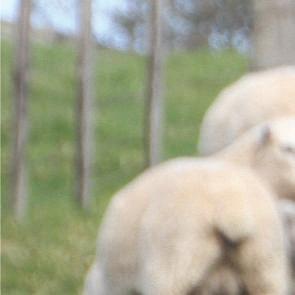


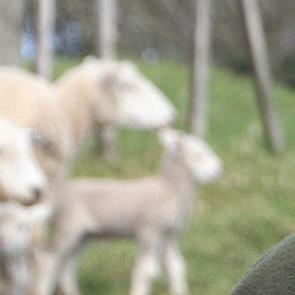
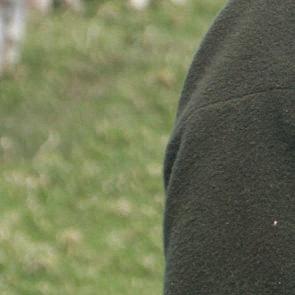



A Northland farming couple have used family knowledge to build their farm into a successful business and are doing their bit to protect the land. By Steve
Macmillan
.
After three decades on the land, a Northland couple is looking forward to the next phase as their son joins them on the farm.
While Grant and Christine West have always strived to look after the land – just like their parents before them – they now have their 24-year-old son Sean on board and he is adamant a financially viable future is possible for him with the right mindset.
Eldest son Ryan is a senior agri-manager for Ravensdown, while daughter Briana has just returned from a stint in Ireland and is ready to pursue a career in tourism. Grant and Sean agree that farming is not easy work and can be pretty unpleasant and dirty – but it’s do-able. You must know you want to do it because the hard years are damned hard if you are only half in, they say.
The 446-hectare hill-country sheep and beef farm is run in partnership with Grant’s mother, Joy, and a stone’s throw from the proud rural precinct of Tangiterōria.
The West Partnership runs 100 Angus breeding cows and progeny, around 300 dairy beef, and 1300 sheep
Grant says the original home block was bought by his parents in 1965, and in 1992, a smaller nearby farm was purchased with the aim of growing a simple and profitable breeding and finishing operation Over the past 13 years, he says they have





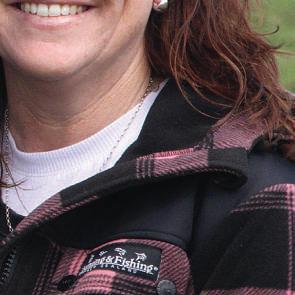
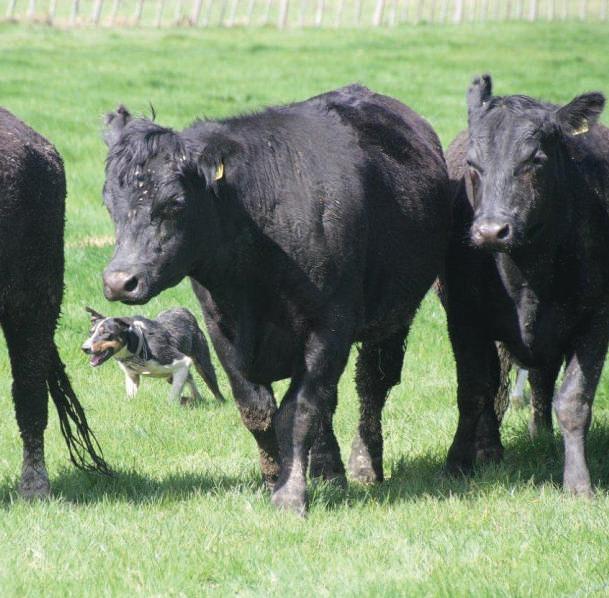
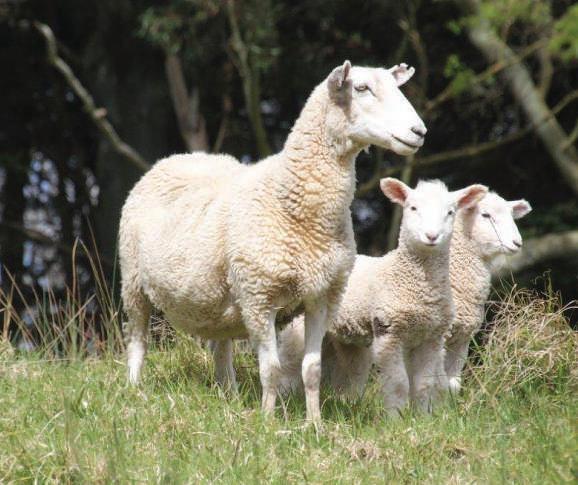
enjoyed the challenge of finishing for First Light Wagyu as part of the business. They won the First Light Wagyu Supplier of the Year award 2014-2015 and are proud of what the company and suppliers have achieved However, they may look to replace wagyu with more dairy beef due to the challenges of consistently hitting ideal finishing weights on hill country
The R2 steers are sold between November and January at around 290 kilograms carcase weight, the R1
The Wests have 1300 sheep that are Romney and Copworth, and acheive a lambing percentage of
bulls go around May and June at 270–290kg, and the others are sold store from November to January at 360–420kg liveweight The R2 finishing heifers leave the farm in spring and summer at 250kg carcase weight
“The sheep are a strong producing mixed flock of 50% Romney and 50% Coopworth ewes, with corresponding sire rams. The ewes average over 150% lambing overall STS. All surplus lambs get access to 15-20ha of chicory and are finished from
between er an carcase weight of 18-20kg.” In general, the stocking rate is 10.9 SU/ha.
One thing the Wests are clear on is that they are lucky to have inherited plenty of knowledge from their parents and surrounding farmers, and have grown from that. They want the legacy to continue.
They are also blessed that Christine’s 31-year nursing career has been an integral backbone to the business model.
Employed by North Haven Hospice, her current role of Tiakina te Kaitiaki – or caring for carers – can be challenging, although it is equally rewarding helping to support carers looking after their loved ones with a chronic condition in times of adversity. It is work that gives the couple plenty to contemplate.
Outside of farming, Grant has developed a passion for dog trialling, thanks to the influence of his father, Malcolm.
“I got into it when I was about 30, but only in the last dozen years have I done the full season every time. We have 12 trials in the north and I do a bit of judging in the other centres.”
Grant has had a little success at national level, but nothing like fellow Northlanders Murray and Neville Child.
“We have been lucky in Northland to

Below:
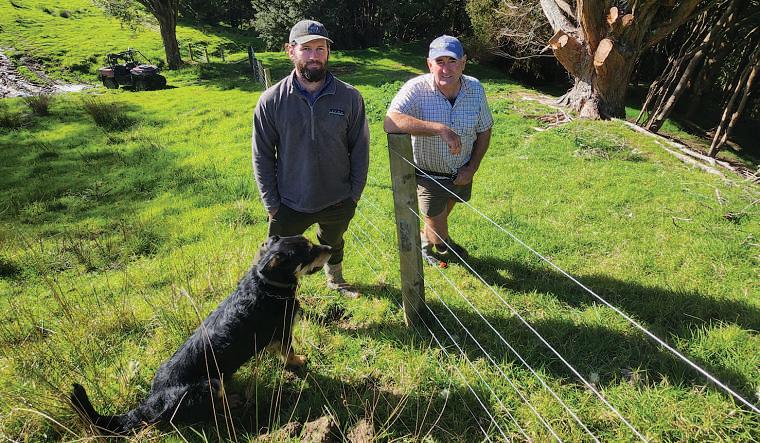
have them, alongside Alan Nesbit, because he is so generous with his time. So many of us owe Alan so much for what he has given to others and to dog trialling. He is an icon and so highly respected.
“Being a little centre in Northland, we have to keep challenging each other as dog triallists, but we are also lucky we have such a dedicated bunch of men and women working hard to keep the clubs going.”
The annual Hobson County sheep dog trials are held on-farm annually, with the centre champs in 2026 and the centenary approaching in 2028 – something they are looking forward to.
From an environmental perspective, in the past 12 months, the family has also embarked on a sediment reduction project – in collaboration with Kaipara Moana Remediation – that is on track to improve productivity.
They are targeting the protection of erosion-prone areas hillsides, established native bush remnants and .45ha of wetlands.
They say fencing off those areas and planting them in natives will improve water quality, farm infrastructure, land management systems and productivity.
So far, they have retired 9.45ha of ecologically sensitive land across two priority areas by completing 2.45 kilometres of fencing, subdividing one paddock into five smaller paddocks – all to help protect special areas of sensitive land by retiring regenerating areas of the farm to stabilise erodible gullies and protect bush remnants to optimise environmental outcomes.
With the help and planning of KMR field adviser Debbie Johnson, the Wests believe their efforts will ultimately reduce sediment loss, enhance biodiversity and strengthen resilience to climate impacts.
Planting of native species will start during winter 2026.

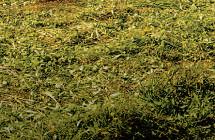



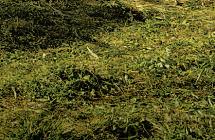


An initial investment of $62,925 should provide payback in under five years, with a benefit-to-cost ratio of 22% and a revenue increase of $14,000, due to improved grazing efficiency and an annual boost of $12,800 in increased pasture income.
It is expected that 16ha of effective pasture will lift from 6 to 8.2 tonnes of dry matter per hectare per year.
The collaboration with KMR could even assist with future potential biodiversity credits.
Grant says better stock flow, time savings and associated improved animal welfare also has the benefit of lowering stress for him and Sean, farm dogs, cattle and sheep.
Christine adds that they have always planted native trees and looked after native blocks on the farm.
“It’s important and hugely essential for the environment and making the land more sustainable long-term. It also makes it a nice place to work,” she says.
Key to ongoing native planting is seeking the advice of KMR’s specialists.
“I have worked with Debbie in the past and her guidance has been invaluable. She is practical and knows the land. You don’t know what you don’t know when it comes to the best native varieties for hillsides, gullies and wetlands,” Grant says.
“You often don’t know where to start on a larger property and Debbie just told us to start where we have wanted to do something for a long time. What we are doing will make things more sustainable on the farm. Like Debbie says, it’s a journey.
“On hill country, nothing is black and white, so you must look at things a little differently.
“If we can help protect Kaipara Harbour and make our farm better, then Kaipara Moana Remediation is a great thing to be part of.”



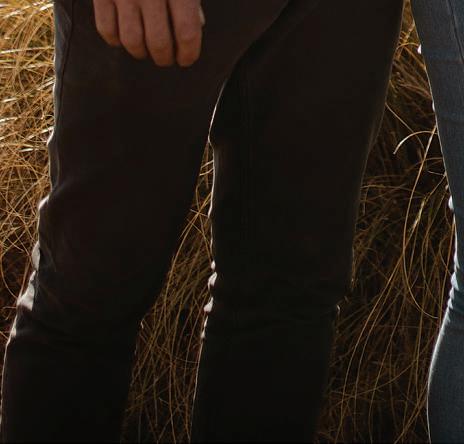


Bevan and Anna Wilson run sheep and cattle across two properties, as well as offering boutique accommodation, on the banks of Otago’s Taieri River. But a serious accident nearly altered their way of life, writes Felicity Connell.
It was just an ordinary day in the Strath Taieri Valley for Anna and Bevan Wilson when Bevan had an accident while working on their farm. Although it was serious, the couple are mindful that the situation could have been far worse.
Now, one year on, Anna and a fully recovered Bevan reflect on how they handle on-farm risk. They are a typical young farming couple with plenty on the go. Their children – Edward, 11, Arthur, 8, and Greta, 6 – attend school in nearby Middlemarch and love mucking around on the farm or riding their motorbikes.

cattle across two and accommodation in a historic schist on banks of the Taieri River. Anna also a role off-farm, and both are involved in community groups.
“I was like, ‘I don’t want to talk to him!’ My mouth was all messed up, I had blood everywhere, and I couldn’t see. I had to hold the phone up high to get one bar, and when I brought it back down, there’d be no service. It took a while to find Anna’s number When I got through, I just said, ‘I’m dying’.”
It was lucky Anna picked up.
“When I’m working, I don’t answer my phone,” she explains. “I was supposed to be in a meeting at 3pm, but it was delayed about five minutes. And that one time, just because the meeting was running late, I answered my phone.”


Adrenaline kicked in and Anna focused on what she could do. “You have to try and control the situation,” she says.
Looking back, what started as an in July 2024 had its roots months can trace back to why it was just him and their Mt McKay farm manager Charlie on Strathavon farm that day.
“We’d had a really dry year feeding out in March. By our lambs were gone and we were capital stock. Alistair Tisdall, fencer and tractor driver, was winter, and we decided to handle the feeding out ourselves. So between Anna, Charlie and me, we were everything. Anna up at 5am, out with Anna in the truck with the aim to have everything done by 8am so she could take the kids to school and get to work.”
That morning, hadn’t said on farm he was heading
“It was just our you babe, love and away you go. a bit of snow and it gets very it’s wet, so side-by-side or a can get in there,” he recalls.
Life is busy: The couple run sheep and cattle across two properties and offer boutique cottage on the juggles a fulltime numerous ordinary day earlier. Bevan him and their Smith on the and started winter, all our re down to our fulltime was laid off for handle the between Anna, were doing and I would be feeding silage, following in the grain. We’d erything done could take school and get to morning, Bevan where on the heading our usual ‘See ve you’, and There’d been and rain, and greasy when really only a or a tractor there,” he and I had just hill to shift a sheep. Charlie went ridge, because a niggly ewe other side of the he was quickly and earshot of up, and had a speed than was the conditions. tussock and Can-Am flipped, on top of me. partially thrown the passenger had one arm but most of my was pinned inside. I thought, not in a very good position here.’”


“Charlie and I had just gone up the hill to shift a mob of went down the because he’d found a on the other side of the rocks and he was quickly out of sight and earshot me. I went up, and a bit more speed than was ideal for I hit a tussock and the flipped, landing on top of me. I was partially thrown out on the passenger side. I one arm free, most my body was inside. I thought, ‘I’m not a position
“So I thought, ‘What’s the best thing I can do?’ And it was to get a helicopter to him, because I knew service is patchy up there.”
She rang 111 and said, “I need a helicopter My husband just phoned to tell me he’s dying. I don’t know where he is, but he’s at the top of the farm.”
She knew time was critical.
“It had been snowing, it was muddy, so no ambulance or fire vehicle was going to get up there. And even if we could drive, I had no idea where on the block he was. The emergency call was frustrating. They wanted co-ordinates, and I was like, ‘I don’t know, can you just get a helicopter in the air?’”
Through it all, one thought kept running through her head: “He’ll be okay. He’ll be okay.”
Anna figured out the GPS co-ordinates and around the same time, Charlie heard Bevan’s cries for help.
“Charlie was incredible. He’d actually been in an accident where he was pinned by the leg for six hours, so he knew what it was like. He took the weight of the Can-Am and I slithered out. He gave me his jacket and I just huddled next to a rock. He got on top of the rock, got signal and knew how to work the GPS,” Bevan recalls.
Charlie was also able to update Anna once the helicopter arrived.
“Charlie said Bevan walked to the helicopter, so that was a good sign.”
Bevan was flown to Dunedin Hospital, but was back doing light duties around the farm within days.
“I got out of hospital that same night at midnight. I was diagnosed with broken ribs and had about 50 stitches around my mouth. I went back to hospital the next morning and got some wire around my teeth. Then I spent the next day sitting at home and all I got was ‘what-ifs.’ And I was like, ‘Ah, this sucks.’ I wasn’t in that much pain. Mentally, it was better to just carry on. There’s nothing worse than sitting around.”
“It was typical Bevan to want to get straight back into it,” Anna says. “He’s no good if he’s not busy. It was so much better for his recovery overall that he was able to be active outside.”
Anna is mindful of others where the outcome wasn’t as positive as theirs.
“We’re lucky, really lucky. We know of others who have had farm accidents that didn’t end well. Whether it’s farming accidents or something else, we are so aware that one moment can change everything. For us, it turned out okay, but we don’t take that for granted.”
Even before that day, health and safety was a priority.


After about minutes, Bevan realised could reach phone, but accidentally called his accountant.
“At every staff meeting, I always ask, ‘Is there anything that you see that could be a risk, or anything you’d like to bring to our attention?’ At a recent meeting, Bevan brought up the slippery tracks, so we’d had a discussion about just taking the extra time, and don’t go anywhere you feel uncomfortable.”
15 he could reach his phone, but accountant.
Their fencer and tractor driver, Alistair, is now back on board, and they’ve recently taken on Jack Tisdall, an 18-year-old shepherd. The couple believe it’s important that less-experienced farm workers have access to training.
“Some of the previous generations of farmers have


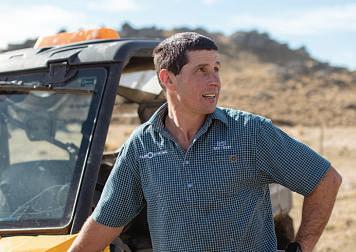

Athat ‘they’ll be right’ attitude but is it the right way? That off-site training helps build skills to support the practical stuff.” Bevan hopes others can learn from what happened to him.
“When you’ve got a real-life example, people listen. They’re like, ‘Oh shit, this stuff does happen.’ And rurally, this stuff happens a lot I was fortunate I came out all good, but the number of ATV accidents on farms is huge.
“My viewpoint is that yes, accidents happen. But if you can lower the likelihood through your own attitude, systems and education and also reduce the harm if they do happen, then you’re doing something right I did notice the other day I was in a tough spot and I slowed down and reversed out and went a different way,” Bevan says.
“It’s mainly just telling yourself, ‘Hang on, just slow down a wee bit.’”
Bevan was only out of action for a couple of days, but they’ have got systems in place if he’d been off farm longer.
“We record a lot on Resolution. We’ve got great staff who’ve been with us for a while, so there’s continuity. We also work with good technical field reps who know how everything works And it was a good
time of year as most of the work was feeding stock,” Anna says.
They also take confidence from knowing they have the right level of insurance. “Insurance is something we do have a lot of,” she adds
“Although it didn’t kick in after the accident because, luckily, Bevan was able to get back out on the farm almost straightaway But it is good knowing we do have it as a backup if anything happens to either of us in the future.”
A year on, Bevan remains pragmatic.
“You can wrap yourself in cotton wool, but there’s always a practical side to farming, and a certain element of risk. At the end of the day, you’ve got to get the job done –but you’ve also got to be there tomorrow to do it again.”
Anna and Bevan Wilson’s story was originally published by Shepherdess and is republished with permission. For more inspiring stories from provincial Aotearoa New Zealand, visit shepherdess. co.nz. The Kōanga Spring Edition is out now – stocked in dairies, supermarkets and boutique design stores across the country.

her
and two
a
in Woodbury, South
and is a client advice manager at FMG. She shares her top tips on caring for your greatest asset – your people.
Look after yourself. Farming is one of those jobs where the work doesn’t stop just because you’re hurt – or worse, gone. Stock still needs to be fed, crops still need to go in the ground, and the bills don’t pause while you’re laid up. That’s why ensuring your own wellbeing is just as important as keeping the tractor serviced.
Have a plan. The reality is that an accident’s impact goes far beyond the day it happens. There’s the immediate disruption of work, but also the stress on your family and team who suddenly have to pick up the slack or make big decisions under pressure. That’s why every farming business should have a plan for how the operation will keep ticking over if the unexpected happens. Start with the basics. Provide clear instructions for daily tasks and contacts for contractors or neighbours who can help, and designate decisionmakers for different aspects of the business. Ensure key documents and alternative authorities on accounts are accessible, not just in your head or locked in your ute’s glovebox.
Arrange insurance. Including insurance in your plan can make a significant difference. Life cover can help clear debt or secure the farm’s future for the next generation. Income protection or trauma cover can provide an income if an accident or serious
illness sidelines you, ensuring bills are paid and daily operations can continue. Medical insurance can help you get treated and back to work faster. Prevent accidents. Of course, prevention is equally important. Before starting any job, perform pre-start checks on vehicles and machinery, and check in with yourself. Are you focused, tired or distracted? Give yourself time to reset. Before turning the key or starting a job count to 16 –that’s one second for each New Zealand farmer who didn’t make it home from work last year. It’s a sobering thought to bring home the reality of what can happen if you cut corners to save time instead of putting your safety first. Expect the unexpected. When you’re busy farming, it’s easy to forget that you are your farm’s most important asset. So plan for the unexpected, protect yourself, and keep your farm safe and sustainable, today and for generations to come.
FMG was formed 120 years ago by farmers for farmers. As a mutual insurer, it is 100% New Zealand owned and operated, and here for the good of the country.
FMG wants to create awareness that when accidents happen, the impact goes beyond claims – it disrupts farms, businesses, and takes a human toll. That’s why FMG has supported the production of this story, as part of its commitment to helping New Zealanders avoid the avoidable.
For more information about FMG, visit fmg.co.nz.

● October 1 and October 8: DairyHoofcare Institute
Lameness Management workshop, Canterbury
This workshop is designed to give students an overview of issues relating to lameness management and introduce them to the five-step trimming process.
Info at dairyhoofcareinstitute ac.nz
● October 1: Beef + Lamb NZ SummerManagement of Calves workshop,Waikato
Managing weaner calves through their first summer can be a challenge. Join Beef + Lamb New Zealand to hear from speakers, including Agricom and Nutritech, covering key strategies to navigate the season with confidence.
Info at beeflambnz.com/events
● October 2: DairyNZ
Achieving Excellence for Profit and Sustainability, lowerNorth Island. Learn how the decision-making process can support you to achieve your profit and sustainability goals, and set your farm business up to be future-fit.
Info at dairyevents.co nz
● October 2: Dairy Women’s Network
Ask AgriSmart Anything,live webinar Contracts and admin hacks to save you time. Got questions about farm contracts or drowning in admin paperwork? Join a relaxed, half-hour chat where you bring the questions and AgriSmart brings the practical answers.
Info at dwn.co.nz/events
● October 6: Dairy Women’s Network
Strong Teams,Smart Business, live webinar
Being a good dairy employer isn’t just about keeping people happy – it’s about running a productive, compliant and financially-smart farming operation. Info at dwn.co.nz/events/
● October 7 and November 11: B+LNZ and Deer Industry NZ
Diversified Farm Field Days, Hawke’s Bayand ManawatūWhanganui/Wellington
Make the most of your land, manage grazing to improve pastures, and tap into new markets and opportunities. Discover how adding sheep, beef or deer to your operation can give you a “full house” of benefits.
Info at beeflambnz.com/events
● October 8: Primary ITO
GOATL3 Assist with Milk Harvesting and Optimising Milk Quality
Primary ITO’s Dairy Goat Farming level 3 is suited to those new to and with limited experience in the dairy goat industry.
Info at primaryito.ac.nz/
● October 8: SIDDC
South Island Dairying Demonstration Centre’s focus day
Discover practical strategies to drive efficiency and profitability in your dairy operation at this year’s focus day, hosted by the South Island Dairying Demonstration Centre (SIDDC) in conjunction with Fonterra and DairyNZ. Info at siddc.org.nz
● October 8: Rural Support Trust
Turning of the Tide: Octoberquiz night,Whakatane
Turning of the Tide is back. Come along to Mata Brewery for three fun evenings of paddock-to-point-break trivia with a twist of land and sea.
Info at rural-support.org.nz/events
● October 8: DairyNZ Pathways to achieving personal and business success,Canterbury Understanding your personal and business progression options can help to build business strength and lead to achieving financial freedom. Info at dairyevents.co.nz
● October 10: SMASH Path into Farm Ownership,with Manoj Kumarand Sumit Kamoj, online Is farm ownership your goal? Hear how Manoj Kumar and Sumit Kamoj, the Dairy Industry Awards’ New Zealand Share Farmers of the Year for 2021, turned their farm ownership dream into reality 14 years after arriving here. Info at smallerherds.co.nz
● October 15: B+LNZ Integrated Parasite Management focus group,Southland
We bring together a focus group of 10–15 sheep and beef farmers to tackle one of the biggest challenges facing our industry: parasite management. Info at beeflambnz.com/events
● October 22: DairyNZ Improved Workplace Productivity and Efficiency Join DairyNZ on-farm with hosts Eli
and Susannah Vollebregt to understand how creating a productive workplace through visual planning and tools can improve farm organisation and efficiency.
Info at dairyevents.co.nz
● October 29: B+LNZ Northland Showcase Day After nine years,Oneriri Station is reopening its gates for a special field day. Info at beeflambnz.com/events
● NAIT
NAITand YourScanner, various dates and locations Join a special drop-in session, where you can stop by your local Farm Source store and get support on how to use your scanner to meet NAIT obligations. Info at ospri.co.nz
● Dairy Training Ltd
DairyTraining Ltd has a range of courses,starting in October,across the country.Topics include: Feed,Feed for Profit,Farm Environmental Planning, Contract Milking,Emerging Leadership and more. Info at dairyevents.co.nz
● DairyNZ
Maximising Home-grown Feed. various dates and locations Join DairyNZ on-farm to hear how the hosts of these events maximise pasture and crop yields to strengthen their farm systems.
Info at dairyevents.co.nz
Registration is essential for many events. Check out the various websites for more events.



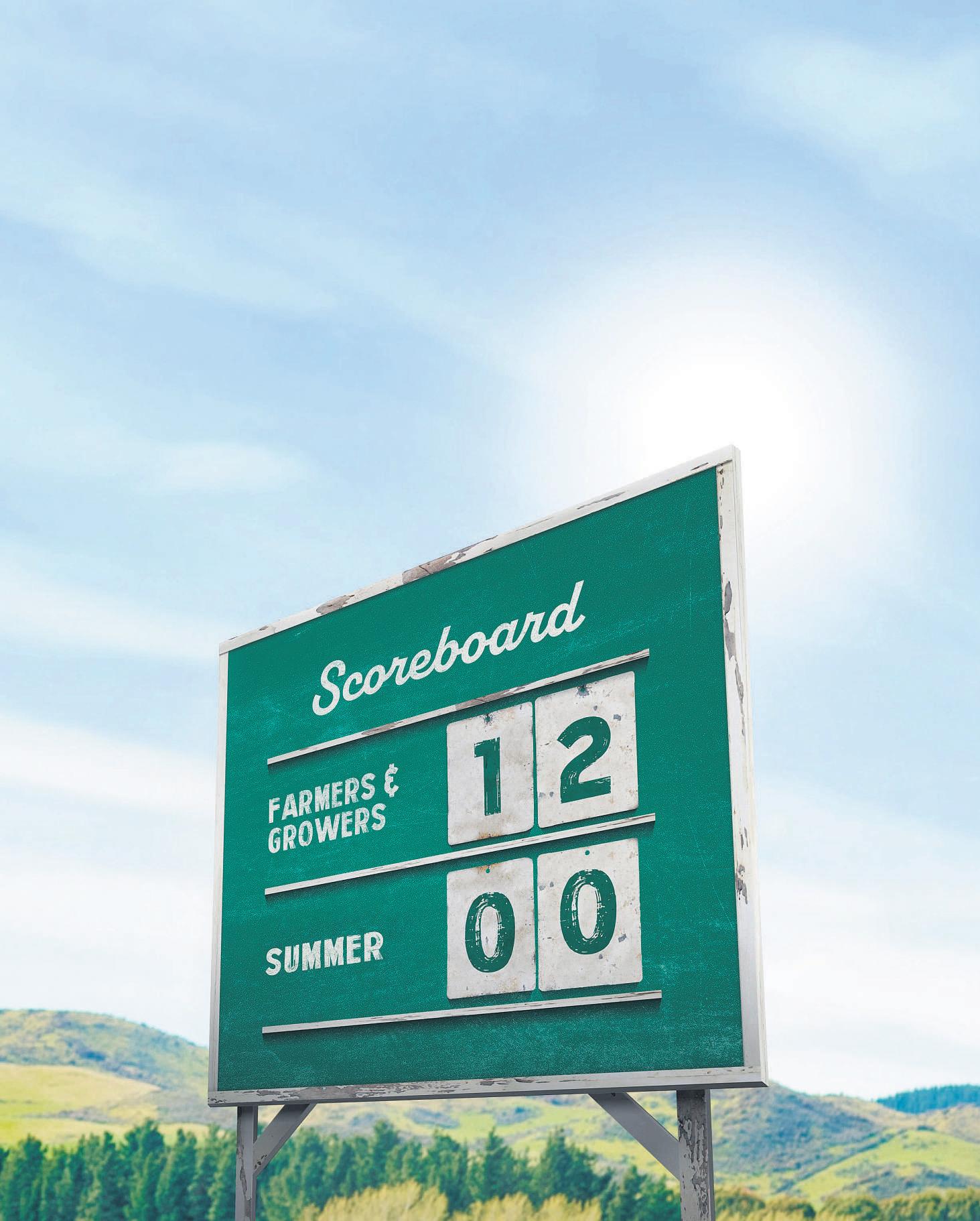































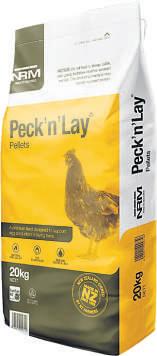





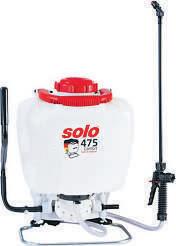























































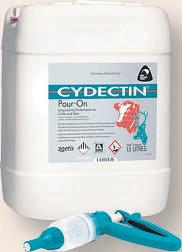



































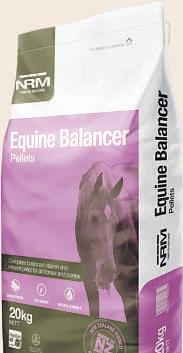
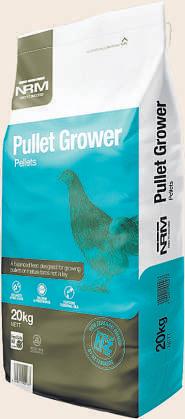


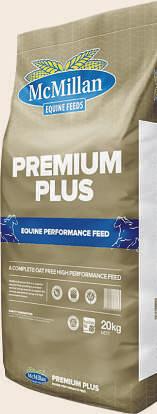









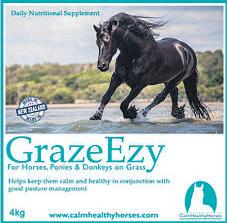









































































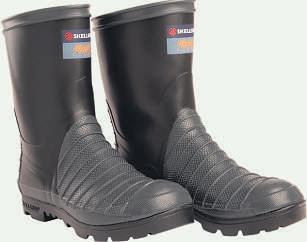

































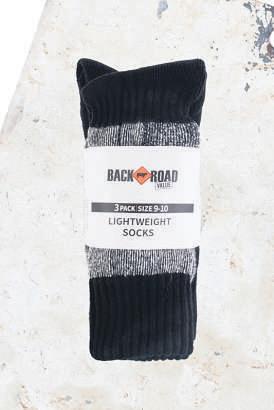



























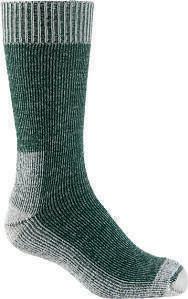





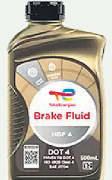
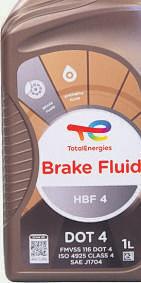






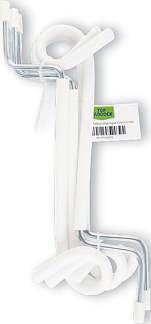













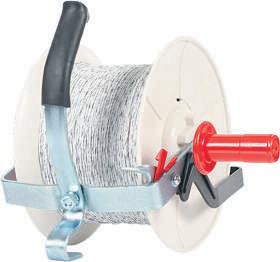


































































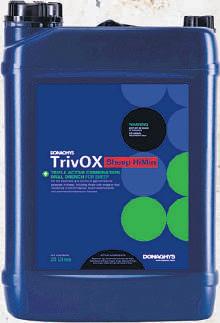


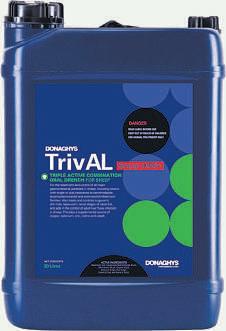






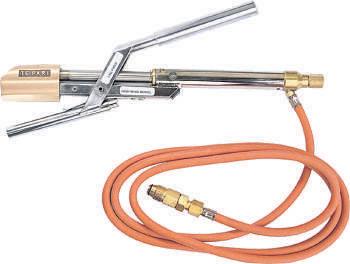


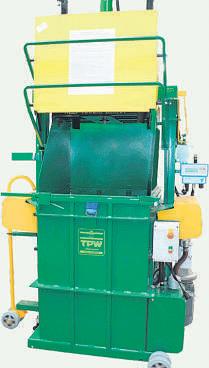




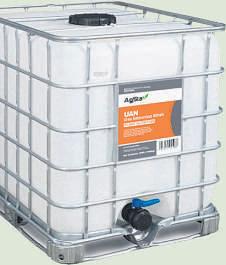






























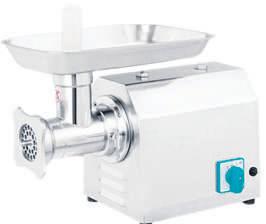




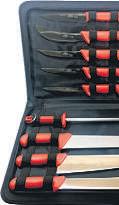










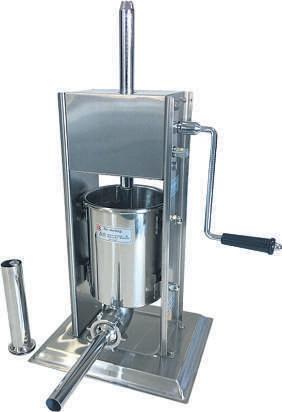










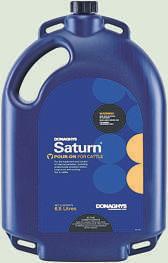




Electricity costs aren’t goingaway, in fact,they’re going up. Takecontrolwith Farmlands FLEX —it’smorethansolar.
Cut Costs Make Money Builtfor Farming
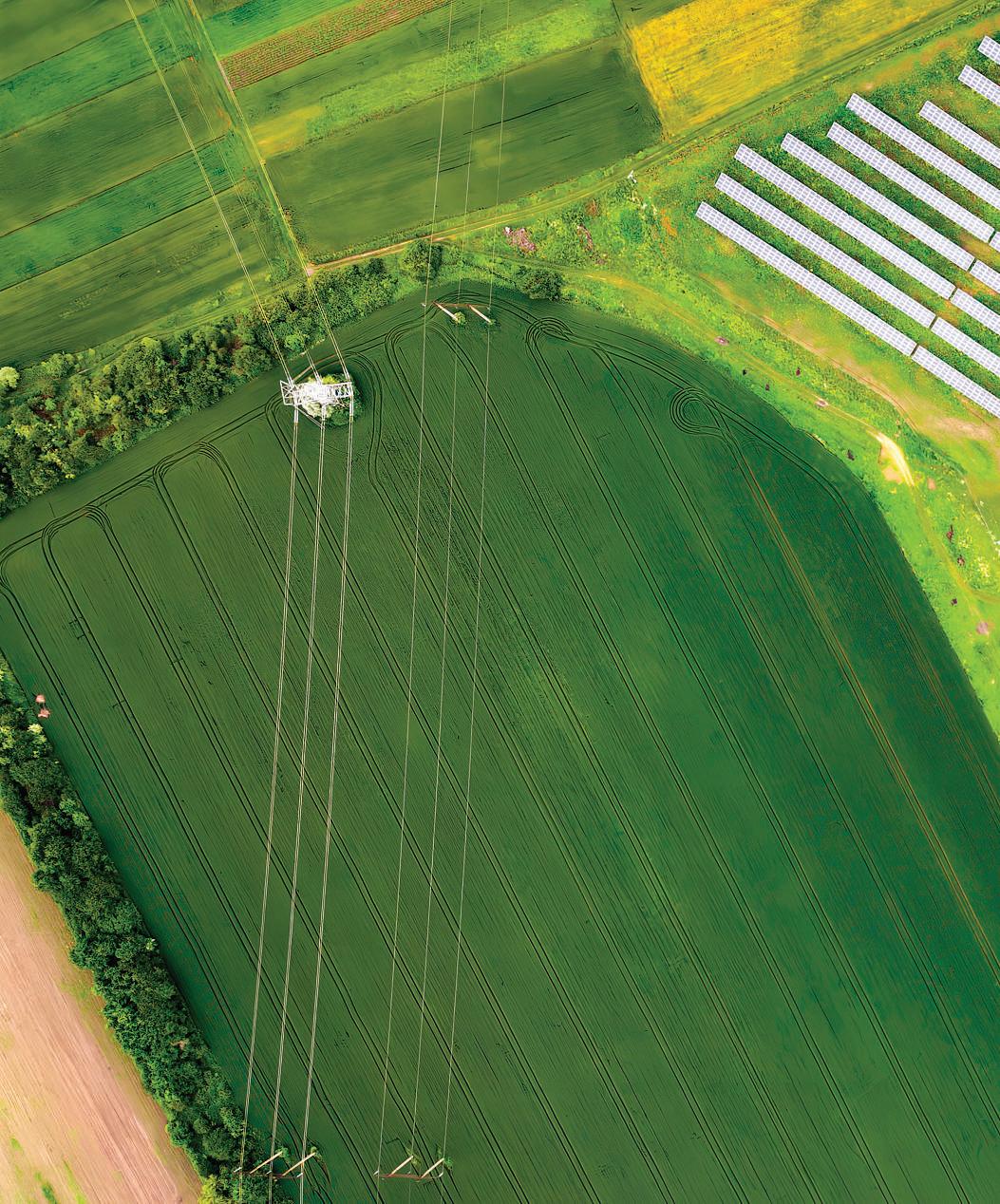
Protect yourself from rising power prices. Sell your surpluspower back to the grid at extremelycompetitive rates.
Readytosee what your farm could save... and earn?
Scan heretoregister your interest and we’llrun thenumbersfor you.
Scott Downs General manager of sales and marketing, PF Olsen Limited
For the best of past of the last two decades, China has been the backbone of New Zealand’s log export trade At times, more than 85% of our logs have headed to Chinese ports to feed its massive construction industry But as with any market, things change – and landowners thinking about planting trees today need to look 20 to 30 years ahead.
China – Still big, but slowing China remains New Zealand’s biggest customer, but the outlook is shifting. Its construction sector has slowed, so it prefers the higher-grade logs that produce furniture, mouldings, plywood etc, rather than just formwork for concrete. Farmers investing in forestry need to plan with a more diverse market picture in mind.
India on the rise
India is emerging as the next big player With a growing middle class and rapid urban development, demand for timber is climbing.
Initial log demand was based on producing pallets and packaging for export goods, but the demand is growing in other higher-value end uses. While the supply chain is not as smooth or as established as China, its sheer scale makes it an important future outlet for New Zealand logs.
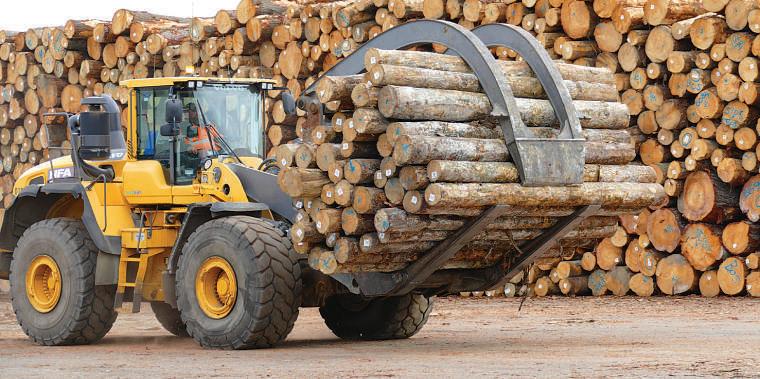
Beyond India, Southeast Asian countries, such as Vietnam, Thailand and Indonesia, are expanding their wood-processing industries. They are importing logs and turning them into furniture, panels and other products for re-export.
Growing demand at home
Closer to home, the rise of engineered wood products – such as laminated beams and cross-laminated timber panels – is creating new domestic demand for structural logs. These products are central to low-carbon building and are already being used in

schools, office buildings and homes across the country More local processing also supports regional jobs and adds value to New Zealand wood before it leaves our shores.
Beyond pine: high-value specialty timbers
While radiata pine will remain the workhorse of our forestry sector, there are also exciting opportunities for farmers to plant alternative species that fetch higher prices in niche markets
This includes species such as cypress, blackwood, eucalypts and redwoods. These are attractive trees producing more
durable timber used for a variety of uses from decking and cladding, to flooring and veneers, to premium furniture and joinery timber.
Redwood logs from New Zealand plantations have been shown in trials to be comparable to second-growth Californian redwood in quality. There is already a growing niche domestic market for redwood in New Zealand: cladding, joinery, decking, outdoor furniture etc.
These species won’t replace pine on a large scale, but they are well suited to smaller farm woodlots, shelterbelts and riparian plantings, where farmers want both long-term returns and aesthetic value. Site location and regime choice are often more critical with these species, so it’s prudent to ask around and seek advice.
Upfront costs are often more than pine, but the final financial returns justify the higher investment, as larger, straighter logs are often two to three times the value of similar-sized pine logs.
A diversified future
The message for landowners is simple: the log markets of tomorrow will look different to today’s. Farmers who plant with a mix of markets and species in mind will be better placed to capture opportunities, reduce risk and add resilience to their farm businesses. When you’re next looking at planting a corner of the farm, think not only of pine and not only of China – the future of forestry is broader, more diverse and potentially more rewarding.
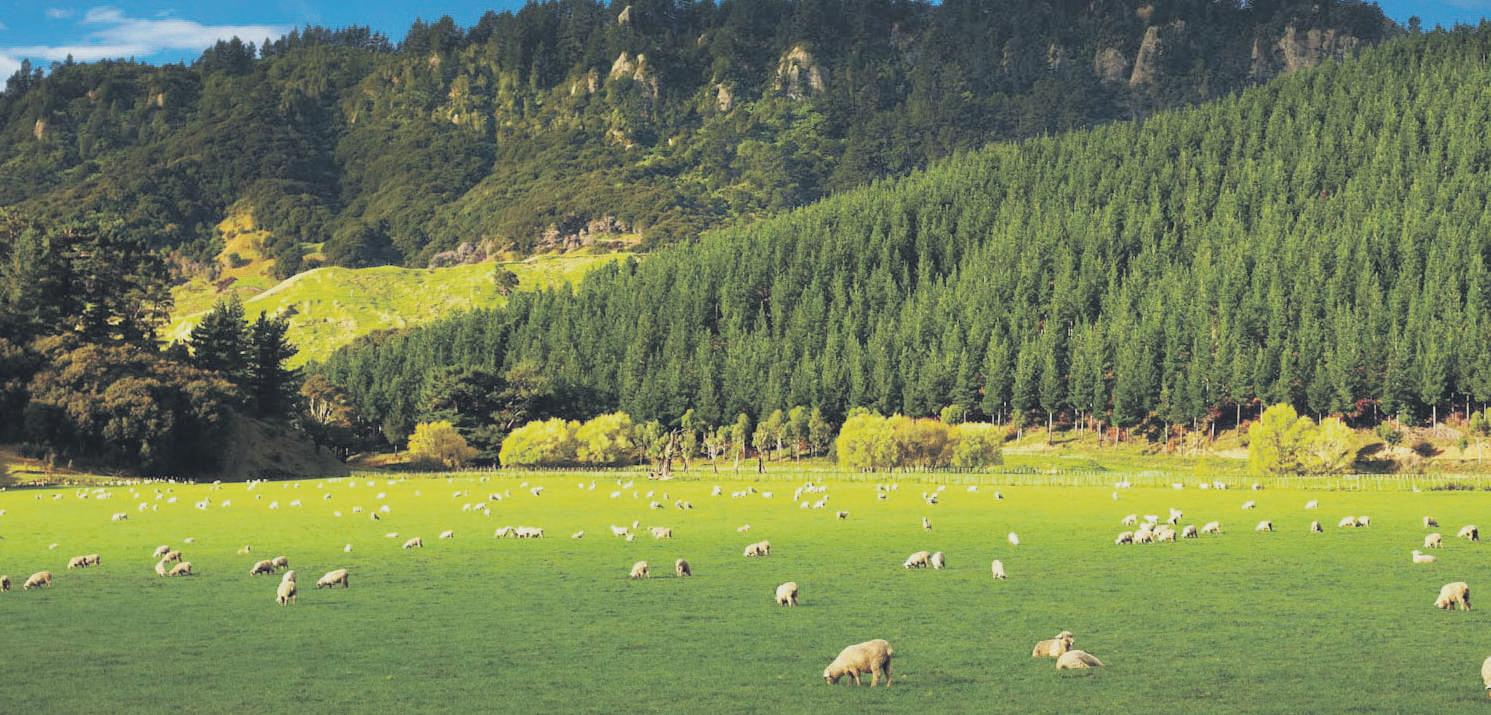

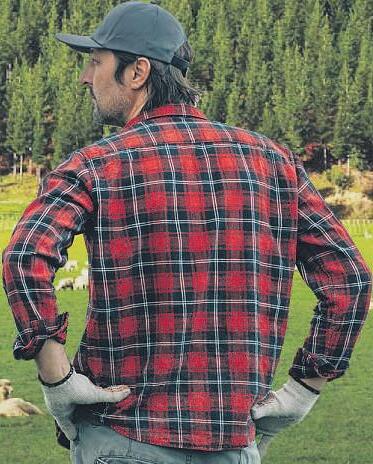


Rugs made from New Zealand wool are creating high demand for an American designer
When creative artist Kate Spain licensed some of her patterns to a United States home products company, she was delighted to learn the rugs featuring her original designs would be crafted from New Zealand wool. She’d loved the two months she’d studied and travelled in New Zealand, through a Rhode Island School of Design exchange programme during college.
But when the rugs labelled “100% Wool – New Zealand” were launched, something was off
“We were promoting the new rugs on my website,” says Kate, who runs her American-based business with husband Pete. “They looked great in the photos, but we started getting feedback that the rugs were shedding lots of stubby and coarse fibres.”
The Spains decided to order an independent test by an organisation in New Zealand of one of their best-selling, new rugs. The results revealed that there was little or no New Zealand wool in it. They ended their license and began a journey that led them to create their own line of handmade rugs, under their eye heart hand label.
With earth at the centre of their brand, the eye heart hand collaborative is dedicated to ensuring each rug is made to the highest standards of quality, with fibre sourced from people committed to the living land and to our planet.
As for the craftsmanship, they partner with GoodWeave to ensure there is no child or forced labour in the manufacture of their rugs. They have travelled to India to meet with the rug team and continue to work closely with them to see to the fine points that make the difference in a highly competitive market.
The long-staple highland wool in the rugs comes exclusively from High Peak Station in Canterbury, established in 1973, and run by Wools of New Zealand shareholders the Guild and Dunbar families. Hamish and Gemma Guild oversee the pastoral farming business at High Peak.
Hamish and his brother Simon were the 2024 winners of the Gordon Stephenson Trophy, the supreme accolade in the Ballance Farm Environment Awards, and are also national ambassadors for Sustainable Farming and Growing.
Hamish shares his perspective: “As a country and people, we New Zealanders hold the belief in kaitiakitanga, meaning guardianship and protection of the land for future generations. Our collaboration with eye heart hand is proudly committed to that.”
From years of testing various wools for rug projects, the Spains find the wool selected by Hamish at High Peak to be of unmatched quality for handmade rugs
“It’s consistent in its pure whiteness and long strand, its smoothness in hand, the springiness and comfort under foot, and in the remarkable durability. It’s not some commodity we’re getting from High Peak It’s a person- and nature-driven fibre that’s world class because of the sheep, the natural conditions and the careful processes that go into it.”
Eye heart hand rugs are in demand from boutique hotels and international design firms as well as selling through high-end lifestyle stores and its website.
The collaboration has recently completed its largest custom delivery of more than 150 rugs, for the Delamar

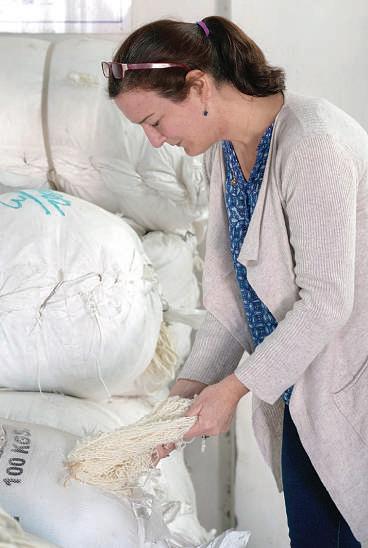

and her husband own eye

To reinforce this, the rugs have a label hand-signed by the designer –representing the eye – and the shepherd –the heart – and the rugmaker – the hand. Kate is grateful that they invest in real New Zealand strong wool and the power of collaboration with like-minded professionals: “It reminds us of something Wendell Berry said: ‘What I stand on is what I stand for.’
“We feel that way each time we’re standing on the rugs, or working on a rug project. Knowing all that goes into each one – from the drawing board to Hamish’s
flock to Firoz and Imran’s rug-making studio. It invigorates us. It daily reminds us why and how we do what we do, for our customers.”
New Zealand wool to to meet rug team closely with them to ensure
“ It’s not some commodity we are getting from High Peak It’s a person- and nature-driven fibre that’s world class ...
Designer Kate Spain on the wool used in her rugs. a luxury hotel in listed among Bazaar in the headquarters of Wools and
Greenwich Harbor, a waterfront hotel in Greenwich, Connecticut listed among Harper’s “Favourite Hotels in th World”.
An eye heart hand ‘Leaf’ runner has made it full circle to the Christchurch headquarters of Wools of New Zealand. Spanning distinct continents and cultures, each rug reflects special creative, agrarian and artisan contributions and values.

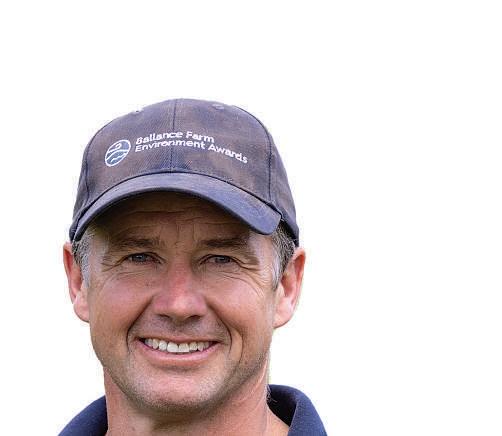
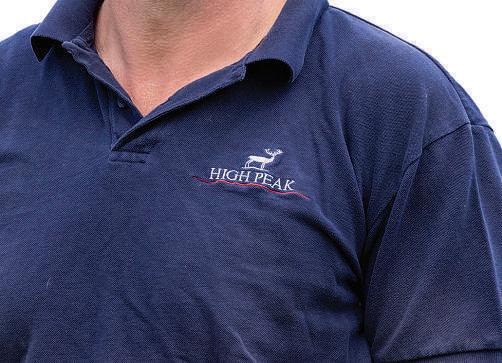
Beef + Lamb New Zealand chairperson Kate Acland says this is a season for farmers to be optimistic, but they should also remain vigilant.
New Zealand’s sheep and beef farmers have experienced some tough years. The 2023-24 season was one of the hardest since the global financial crisis, with 40% of farmers operating at a loss. Many in the hill-country sheep sector were struggling simply to stay afloat.
That is why the latest New Season Outlook is such welcome news.
Export earnings for our core red meat products are expected to reach $10.5 billion for the year just ended, despite lower volumes.
Looking ahead to the 2025-26 season, returns are forecast to hold steady, easing only slightly, thanks to strong demand and constrained global supply.
In plain terms, prices are holding at record levels because demand in key markets remains exceptionally strong while supply is tight.
Drought has cut the United States cattle herd to record lows, Australian and Brazilian supply is limited, and Europe and the United Kingdom are also chasing quality product.
The result is a “perfect storm” in farmers’ favour, with consumers still prepared to pay despite inflationary pressures.
The turnaround on-farm has been equally dramatic.
Average profit before tax rebounded from just $18,914 in 2023-24 to $138,600 in 2024-25, and is forecast to climb again to around $166,500 this season.
That level of profitability doesn’t just matter for farming families – it matters for every small town in rural New Zealand.
Collectively, this year farmers are
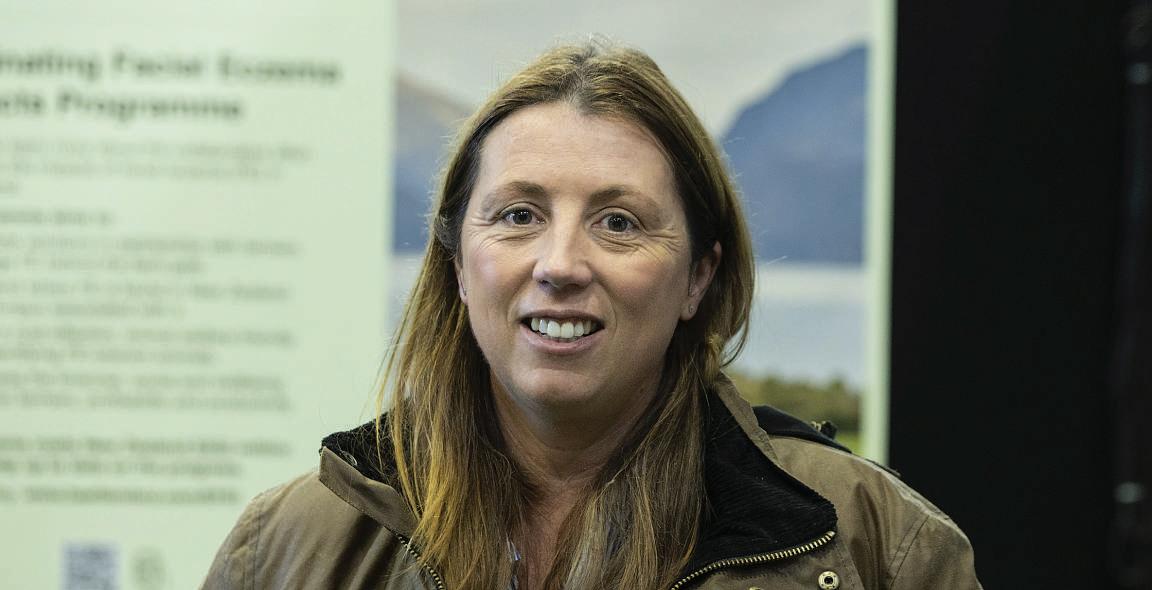
expected to generate $7.2b of value at the farm gate and spend around $15.5 million every day in their local communities.
It is particularly encouraging to see the sheep sector recovering. In recent years, many hill-country operations have been under immense pressure, with too many forced into losses.
Demand from the UK and European Union is helping to change that picture Prices are back at sustainable levels and, importantly, they are restoring confidence in the sector
But while there is every reason to be optimistic, there are potential headwinds on the horizon.
The 15% tariff now applied to all New Zealand red meat entering the US could strip nearly $500m from our export earnings in a season.
The US lamb industry continues to

lobby hard for even higher barriers, while Chinese authorities are running a safeguard investigation into beef imports.
Currency movements also pose risk, with a stronger New Zealand dollar able to erode the gains of higher prices almost overnight
And here at home, we cannot ignore the ongoing loss of productive sheep and beef farmland to carbon farming.
In just five years, the New Zealand economy has forgone an estimated $2b in red meat exports due to declining stock numbers driven by afforestation.
If that trend continues, the cost to the country by 2050 could be as high as $36b Those are real jobs, real communities and real export earnings we cannot afford to lose.
So yes, this is a season for optimism. Prices are strong, profitability is back and farmers have the opportunity to reinvest
in their businesses – but it is also a season for vigilance.
As farmers, we must keep benchmarking our performance, planning carefully and focusing investment on the areas that will carry us through the next inevitable downturn. Most of all, we need to ensure policy-makers recognise the true value of our sector.
Sheep and beef farming underpins our regional economies and supports our country’s economy.
The decisions they make today on trade, land use and climate policy will determine whether the good times ahead are sustainable.
Kate Acland is the chairperson of Beef + Lamb New Zealand and a mid-Canterbury sheep, beef and dairy farmer.
Dose alldogswho reside near sheepwith Praziquantel monthlyoratleast 48 hoursbefore visiting sheep, to preventsheep measles.
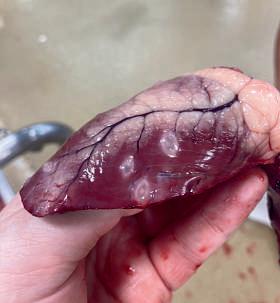


Rob Stock and Alka Prasad
Selling the consumer brands, including Anchor, is Fonterra’s biggest deal since the 2019 sale of Tip Top to British dairy giant Froneri.
But the $3.8 billion sale of Anchor and the rest of Fonterra’s consumer brands business to family-owned Lactalis is 10 times the scale of the $380 million Tip Top sale.
It’s not a done deal yet as Fonterra’s supplier-owner dairy farmers must approve the deal in a vote this month by a simple majority of 51%, but the co-operative thinks that’s a formality.
Fonterra chairperson Peter McBride said farmers had “mixed feelings” about selling the consumer brands, especially the venerable Anchor label, which dates back to 1886.
But the majority of farmers supported the move, and he expected farmers to give Fonterra a “strong mandate” for the sale.
The “core” of Fonterra was not its consumer brands operations, but its ingredients and food service businesses, selling food and beverage manufacturers around the world, and supplying specialist products, such as creams and butter, to restaurants and the hospitality business, especially in the booming Chinese market
Should farmers choose to approve the deal, it wouldn’t feel like “Christmas” for them as they had a connection to brands like Anchor, which dated back decades, McBride said. But they would have capital to invest in their businesses, or to pay down debt.
A series of webinars to prepare farmers to vote in favour of the sale began in August, with the first held just hours after the deal was announced McBride and Fonterra chief executive Miles Hurrell told a massed rank of media that the sale was a success for the co-operative, but they acknowledged the public might not feel that way about it
But Hurrell said the deal, finalised on August 22, was: “Pleasing for our farmer
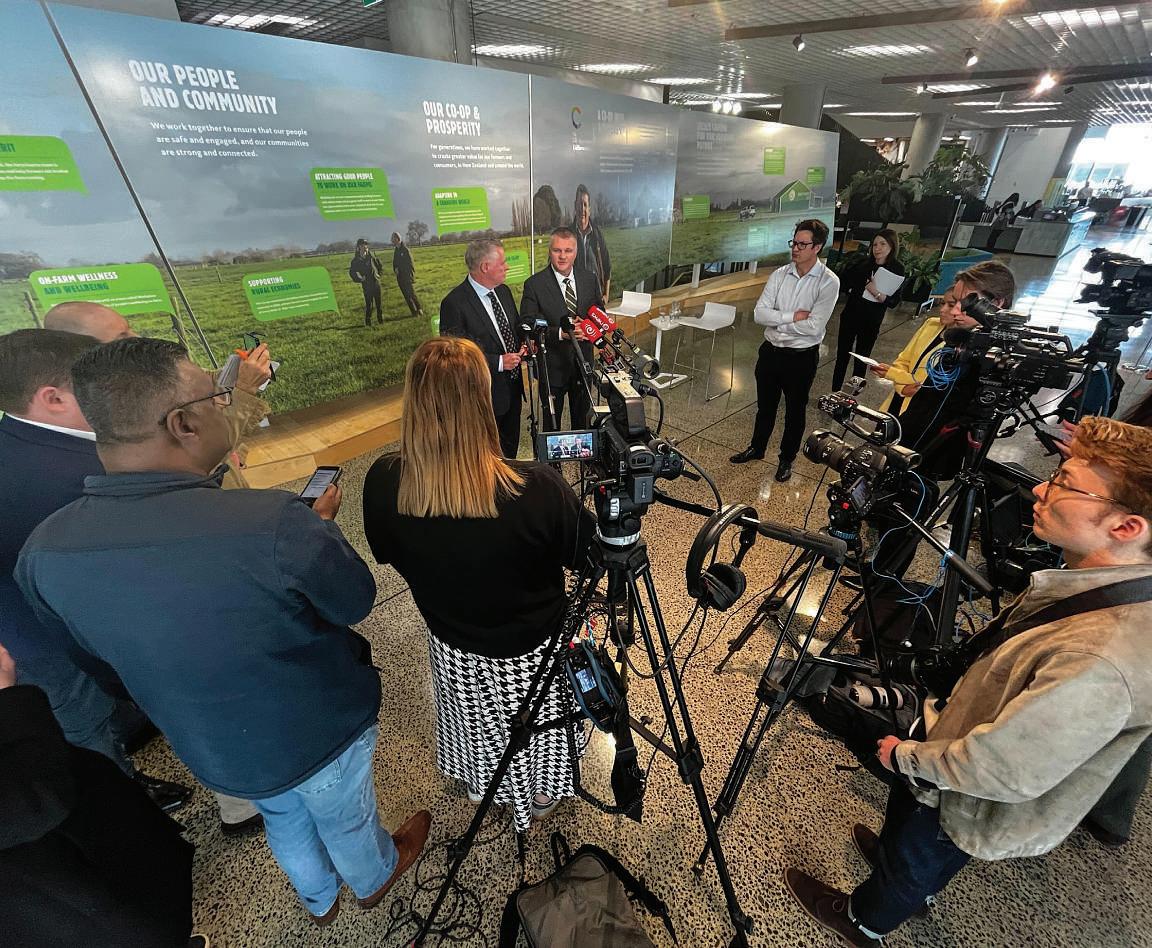
shareholders, pleasing for New Zealand.”
Forsyth Barr analyst Matt Montgomerie said the deal was a good outcome only because “Fonterra had historically been poor owners of these brands and the Australian operations”.
“If you benchmark margins and returns through history, they’ve been underwhelming. Consumer and Australia were relatively small parts of the business, so while the sale is a big headline, the core business isn’t changing that much.”

The Lactalis sale valued Fonterra’s consumer arm at more than 20 times its earnings before interest and tax (EBIT), which was $173m at its 2025 half-year. Meanwhile, EBIT for Fonterra’s food service and ingredients businesses were


dairy company with more than 85,000 employees worldwide. It sells dairy products in 150 countries under brands including Kraft in America, President in France, Parmalat in Italy, Seriously in Scotland and Penguin in the Middle East.
However, the sale of TipTop showed that once a brand changed hands, the new owner might not respect all the sacred cows the New Zealand public took for granted.
Shortly after buying Tip Top, Froneri stopped selling Goody Goody Gum Drops and Cookies and Cream in 2-litre tubs.
Hurrell and McBride were questioned about whether the sale could ultimately lead to the closure of any of Fonterra’s New Zealand dairy factories, which were major suppliers in their local areas.
They projected confidence, but there were details of the deal that Hurrell said Fonterra was not sharing.
Lactalis would continue to take Fonterra’s milk and ingredients far into the future, but there remained the uncomfortable – though Hurrell thinks unlikely – possibility of Anchor-branded butter one day being made without New Zealand milk.
Fonterra had locked in a 10-year milk supply deal with Lactalis, he said.
Fonterra is about to start hiring management staff for its new UHT cream plant at Edendale.
The building is now visible from State Highway 1, with the $150 million development on track to be opened in August 2026 as scheduled.
Fonterra’s lower South Island general manager of operations, Andrew Johns, said the co-operative would begin recruiting managers soon, so they could then hire and support the up to 70 workers needed to run the plant.
Fonterra had historically been poor owners of these brands.
Matt Montgomerie Forsyth Barr analyst
$230m and $696m respectively.
“That’s, in part, reflective of Fonterra being such poor owners,” Montgomerie said.
“Lactalis is clearly taking a constructive view on the synergies they can realise, whether through cost savings, marketing, distribution, or asset utilisation in Australia.”
Hurrell was keen that reporters took away the message that Lactalis was not spending nearly $4b on the consumer brands to run them down, but would want to see its investment grow.
“It’s a long-term investment. They will be wanting to continue to grow, and invest, probably putting cash in behind those brands to take them to the next level.”
Lactalis, owned by the wealthy Besnier family, had global reach, he said.
It is the ninth-largest food group in the world, and the world’s largest
Montgomerie said while the beloved Kiwi brands would not be owned by the co-op, the milk inside them would still be New Zealand milk, not French milk. “Even though they’re selling the brands, Fonterra will remain the supplier of milk.”
The deal also kept Fonterra’s food service business intact, and it would still be able to use the Anchor Food Professionals brand, he said. It sold product into restaurants, bakeries, caterers, hotels and cafes around New Zealand, so Anchor products would still flow through to Kiwi consumers.
The deal, with Lactalis could get bigger, rising to $4.2b in value, if the Australian Bega brands ended up being included.
But it would leave Fonterra drawing a higher proportion of its revenue from China. “Post-sale, China will account for 30-40% of earnings,” Montgomerie said. “They lose some diversification that came from the consumer brands.”
The co-operative would also work with Great South and the local councils to attract staff, he added.
Johns said there were currently 55 contractors working on the site, but this was expected to swell to 150 in the next three to six months when construction was at its peak. He remained confident in the strong demand for UHT cream that had prompted the investment; with the market expected to grow 4% year-on-year to 2032.
UHT is a heat-treatment process applied to liquid products to produce a longer shelf life and allow products to be stored and transported without cooling.
The new plant will initially create upwards of 50 million litres of UHT processing capacity, with the capacity to grow beyond 100 million litres by 2030.
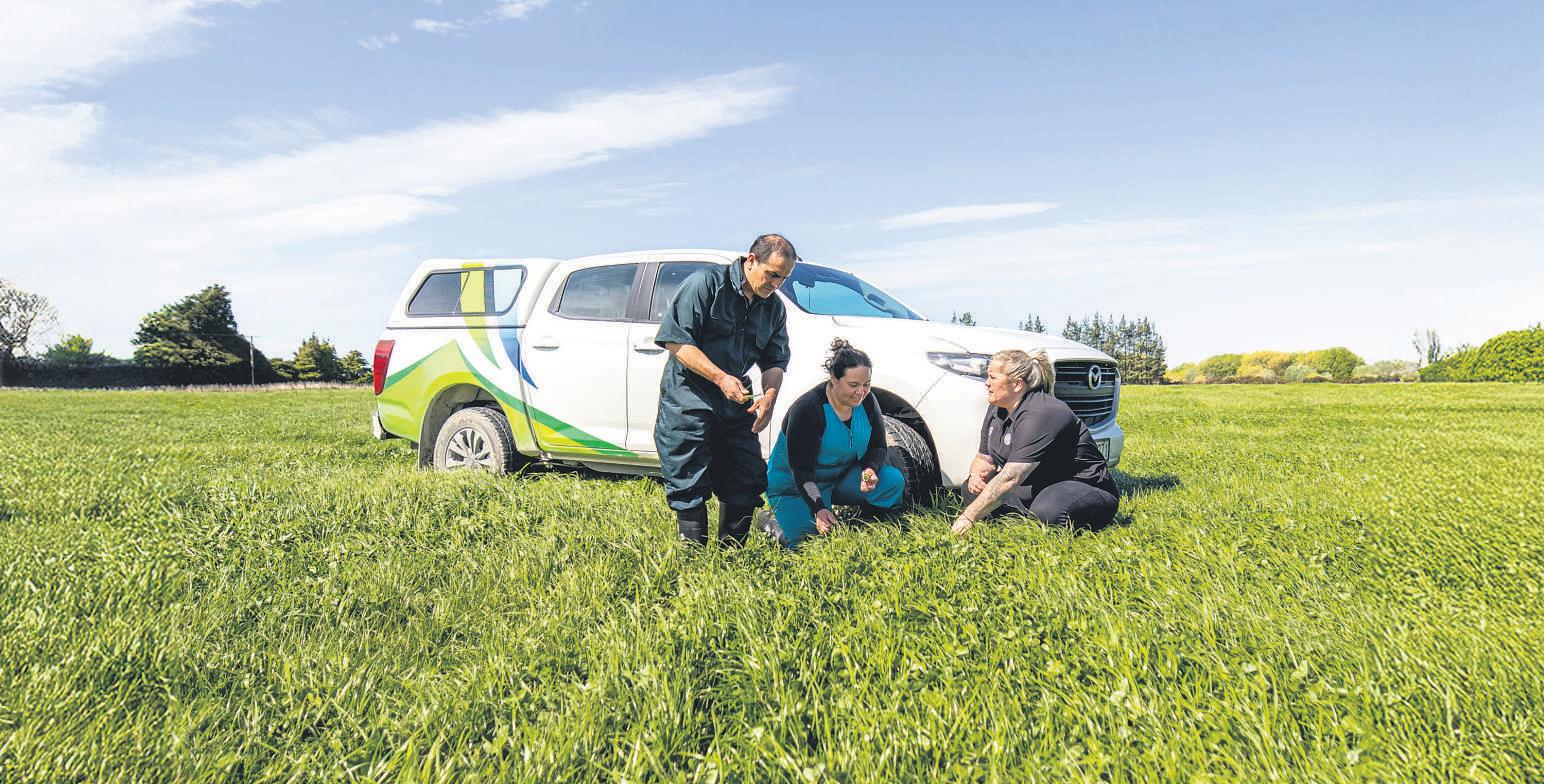

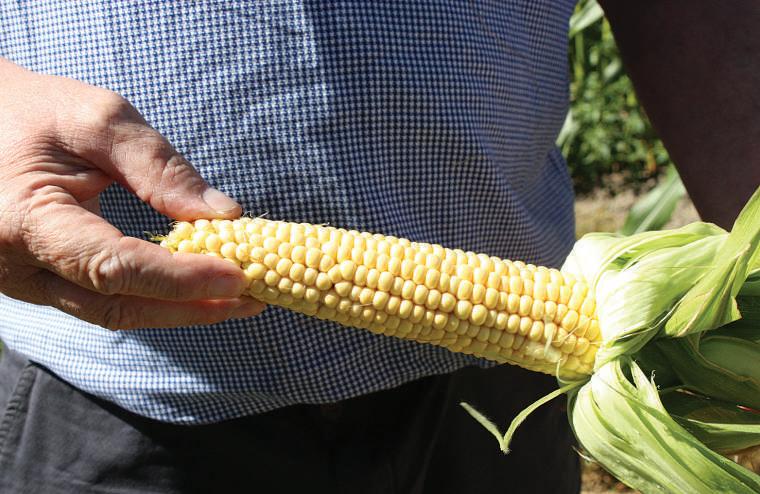
Heather Chalmers






production in its fertilised plots is 22-25 tonne dry matter per hectare from silage and about 4t DM/ha from ryegrass.
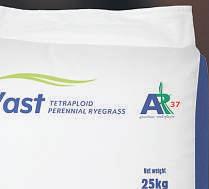

Maize growers are not at risk of “mining” nutrients if they utilise nitrogen naturally available in the soil. In fact, it will save them money, says Foundation for Arable Research (FAR) senior researcher Dirk Wallace.




































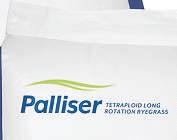














Fertiliser makes up to 37% of maize input costs, so it makes both economic and environmental sense to measure and utilise nitrogen (N) that is naturally available in the soil.
“Maize needs N, and lots of it We don’t want to risk leaving profit in the field, but we need to think more about where we get the N from.”

The research compared three approaches: full applied N, crop N requirement incorporating soil mineral N, and crop N requirement incorporating soil mineral N and PMN (potentially mineralisable nitrogen). There was no difference in yield between them. However, savings of $243/ha were made by reducing applied N by utilising soil mineral N and N available through the growing season. Savings are $105/ha if just soil mineral N is taken into account. All soil tests are done to 30 centimetres in September prior to planting maize.







With so much outside your control,it’sgood to have somethingyou actually canrelyonthisspring. Palliser can be used as either ashort or long rotation ryegrass while maintaininghighannual drymatter. With thelatestheading date available(+36days) Vast growsoptimal forage quality later in theseason. Chooseour brandnew diploidperennial ryegrass Midway foranall-purposegrass with both resilience and longevity.Orthere’s our othernew diploidperennial ryegrass Accrue,for year-round drymatter production with standout growth summerand autumn
Take controland choose proven qualityfrom PGGWrightsonSeeds pggwrightsonseeds.com •Freephone0800 805 505
Soil N supply is the natural process of nitrogen in the soil becoming available for plant uptake.
Some growers worry that if they utilise soil nitrogen, they will “mine” the soil, depleting nutrient reserves for subsequent crops, but this is not the case. This applies to all crops, not just maize.
“Soil N supply is a biological system just like crop growth; if the conditions are good for crops to be doing well, then your soil will be supplying more nitrogen. So, if it’s warm and wet, your soil will be full of biological activity and if it’s cold or dry, things will slow down.”
By measuring soil N and including this when making decisions on applied N inputs to meet crop requirements, farmers are not only saving money, but also making environmental gains.
Soil N supply is made up of two parts. Firstly, mineral N is a snapshot of what you’ve got under your boots at any one time. In addition, more N will become available over the growing season. As the soil gets warmer, you’ll get more N.
A test called the Potentially Mineralisable Nitrogen (PMN) test is available to estimate how much N your soil is likely to produce on a monthly basis. By adding the two soil test results together, growers will get an estimate of soil N supply.
FAR has been gathering information on these different decisions at its Waikato research site at Tamahere for the past four maize seasons. The system is a maize silage rotation with winter annual rye. The
“Importantly, we are reducing the amount of N left behind when we account for soil N supply. This reduces the risk of N loss over winter, something that is more important in summer grain, winter fallow systems,” Wallace says.
FAR is not suggesting farmers rely solely on soil organic matter to supply all of their nitrogen. “What we’re focused on is good nitrogen management – that means using fertiliser alongside what the soil is already providing.
“Mineralisation – the natural breakdown of organic matter that releases plant-available N – isn’t like biological nitrogen fixation. It can’t be turned off, and it happens regardless of how much fertiliser you apply. Making use of that soil N is not mining – it’s smart management.
“By factoring in how much nitrogen is being released from the soil, you can often reduce the amount of fertiliser needed. This not only saves money– it also lowers emissions tied to fertiliser production and transport. That means a lower footprint for the feed you grow, which is good for the climate and for your position in the market, especially as the dairy sector looks to cut its own emissions profile.”
Growers often ask, where does that N come from?
“There’s a lot of nitrogen in soil; we just don’t often measure the non-plant available stuff. At Tamahere, it has been calculated that there is 10 tonne N/ha to 30cm depth. Mineralisation is accounting for 150kg N/ha, equivalent to an average 1.5% of N removal from winter and summer crops from 2021-2024.
“Each year a crop is grown, it is returning N in the roots and stover.”
Advances in growing methods have made potatoes ever-more efficient and sustainable to produce.



Potatoes are easy to grow, cook and provide nutrients so should be eaten as part of a balanced diet.

As a keen runner, Bryan Hart doesn’t bother with commercial energy gels when he’s training for a half marathon – he boils a potato, sprinkles it with salt and it provides the perfect fuel
“I put it in a ziplock bag and two hours into the run I have that,” says Hart “It’s better than a banana – packed with nutrients including potassium which is good for electrolytes and reducing cramp It’s easily digestible and a lot cheaper than buying energy gels.”
Fuelling his running isn’t his only reason to be passionate about potatoes. He’s been involved with growing them for much of his life
Raised on a farm in Northland, where his family farmed sheep and beef and grew potatoes and kiwifruit, Hart gained a Bachelor of Horticultural Science degree and worked as a consultant in New Zealand and the United States.
Twelve years ago, he joined major vegetable growing business AS Wilcox and Sons in Pukekohe, where he is now the general manager of growing operations.
The fourth-generation family business, established in the 1930s, supplies fresh potatoes and other vegetables countrywide.
His passion for potatoes is well known throughout the sector – from driving research to address disease issues and lift productivity to promoting the industry to the next generation of growers.
“I like potatoes because they are very relatable,” he says. “‘What is your favourite potato’ could be an icebreaker at any barbecue – most people have an opinion.
“It’s something that is very grass roots; it’s a good healthy affordable food for the family dinner table – which I really like.
“It’s also great for the environment. It takes only about 20% of the amount of water to produce a kilo of potatoes as it does to produce a kilo of rice, so it is five times more efficient in terms of water use and much more nutrient-dense.
“Globally, there is the big question of how we are going to feed a growing population and potatoes have to be part of that solution.”
Hart says not only are potatoes economical with moisture in a world increasingly concerned about availability of water, advances in
There are many ways to cook potatoes, including roasting, boiling, baking and mashing.

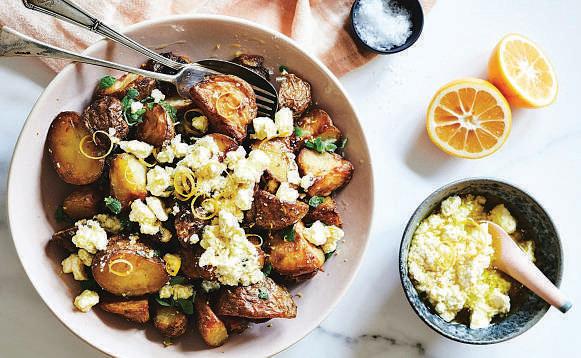
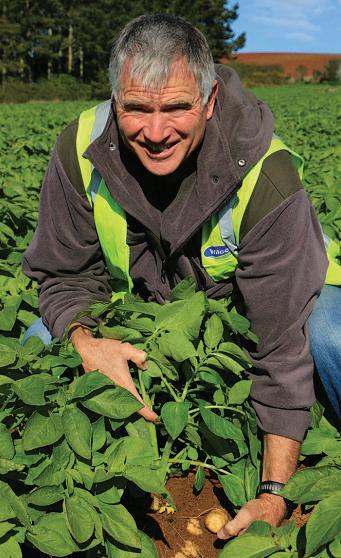
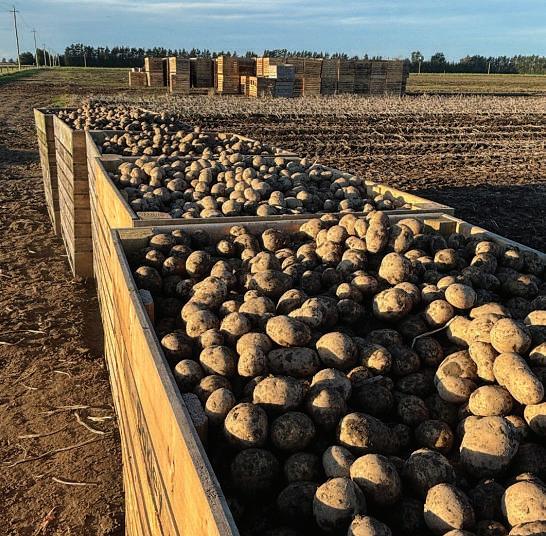
but we aren’t a big enough business to undertake the research and development to verify the health claims, so we promote them on taste.
growing methods have made them ever-more efficient and sustainable to produce.
“The biggest changes I have seen are around efficiency. Seeds are planted with GPS technology and you can see exactly where they are and place the fertiliser very precisely. We now have sensors to track the soil moisture and nutrient demands.
“We have precision spraying and crop protection systems. Previously, spraying
might have been seasonal, but now we can leave it unless there is evidence of pest pressure, so it is now very efficient from that perspective.”
The other major change Hart has seen is the vast increase in choice.
“It’s exciting that there is now so much more diversity in the offering. Twenty years ago, it was really just ‘white potatoes’, but now we have white, gold, red, purple – big and small, with different purposes and many different culinary uses and different consumer experiences.
“There used to be a lot of focus on product purpose options by variety and the many ways to cook them. I think a lot of that has been lost due to cost-ofliving challenges, consolidation and rationalisation in retail channels and less focus in schools on how to look after yourself and feed yourself.
“I think that has led to consumers not always getting the best out of potatoes.”
Low carb diet trends have also influenced perceptions, but Hart’s view is that consumers and the sector need to “embrace the fact potatoes have carbs”.
“Carbs are an energy source, that’s why you’re eating it, as part of a balanced diet At the end of a meal with potatoes, compared to a meal with rice, you are getting those carbs but also vitamin B6, potassium, vitamin C, fibre and other nutrient-dense components.
“I think that has to be our message that we take out there. We can’t shy away from carbs, but the benefit is that energy and everything that comes with it.
“And, of course, taste. At AS Wilcox, we have put a lot into the high taste, small potato category with varieties like
“They say we first buy with our eyes and again with our stomachs – and that’s certainly true of Perlas potatoes. New-season Perlas give home cooks chef-like confidence with minimal effort: simply boil and serve with a knob of butter. Not only do they look irresistible, but their rich, buttery flavour guarantees diners have a great eating experience.”
Despite all the advances in technology, the weather still plays a huge part in the success, or otherwise, of each season’s crop.
“You have to be resilient to be a potato grower,” says Hart. “It’s one of the few things you can plant this year and hope to get money back next year.
“It’s exciting, growing a potato plant and scraping away the dirt and seeing what is happening underneath. It’s always a bit of a surprise and you hope it will be a pleasant surprise.
“There are a lot of economic challenges, costs are up and values are falling below sustainable levels.
“But when you have that challenge, you have to take long time view. AS Wilcox is a multi-generation business and it’s about sensible business strategies and plans, and making efficiencies in the supply chain.
“The biggest challenge and the biggest opportunity for the sector is succession and raising awareness of the opportunities in the industry.
“There are not many careers where there is the opportunity of going into sales, marketing, new product development, supply chain, post-harvest, agronomics, operations or precision engineering.
“All those opportunities, and more, are there for people in the potato industry. As a business, we have worked hard to create an environment where we have a great company culture and people want to join and progress in it to grow high quality, healthy food for consumers to purchase – and that is what I enjoy most about leading our growing team.”
Horticulture New Zealand chief executive Kate Scott is calling for a national action plan to give Kiwi better access to fresh produce.
Spring is here, the weather is warming up, and our fruit and vegetable growers are busy in their fields and orchards. Yet, no matter the season, growers know that New Zealand is only ever one major weather event away from food shortages and soaring prices.
We saw that all too clearly in the aftermath of Cyclone Gabrielle Vegetable production was reduced by only 10-15%, yet consumers faced price increases of up to 300%. More recently, the Nelson, Tasman and Marlborough floods reminded us again how vulnerable food production is to extreme weather, with the clean-up and recovery still ongoing.
And recently our avocado growers were hit with significant losses following extreme winds.
These events are not just challenges for growers; they are challenges for all New Zealanders. Already, prices remain high, and one-third of households rely on food banks or financial help to access enough nutritious food, according to a Consumer NZ survey. This is appalling in a country that grows enough food to feed our people.
It’s time for New Zealand to take a more strategic approach to food It appears to have fallen off the radar, but a national plan for action would improve

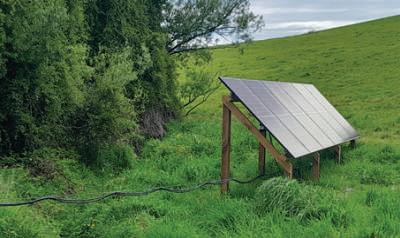
New Zealanders’ access to fresh, healthy produce.
Such a plan isn’t a “nice to have” – it’s essential if we want a well, happy and productive society.
Without it, we risk continuing to lurch from crisis to crisis, with weather events, price spikes and food insecurity hitting families hard.
Poor diets are fuelling chronic health issues. Rising rates of obesity (33% in 2023, compared with 10% in 1977) and type 2 diabetes, particularly among young people, are putting huge pressure on our already stretched health system. The evidence is clear: fruit and vegetables are part of the solution.
Research from the University of Otago in 2023 showed that if New Zealanders added just one more vegetable a day to their diet, our health system could save more than $830 million over the lifespan of that population. And yet, despite more than a year of relatively low produce prices, thanks to favourable growing conditions, there has been no noticeable increase in consumption.
We need to change that.
This requires investment in initiatives to make healthy food more affordable and, crucially, ensure security of supply. That means ensuring growers can keep producing fresh, nutritious food in



our key growing regions, supported by sensible resource management settings.
For too long, growers have faced unnecessary barriers and costly consents just to grow the food New Zealanders need Removing these hurdles will help secure the future of regional food production, while maintaining strong environmental standards.
This is good for growers, for consumers and for New Zealand. But it’s just the beginning. The next step must be a comprehensive national plan for action that brings together growers,
policymakers and communities to ensure all New Zealanders have access to affordable healthy fruit and vegetables. New Zealand could look to other nations that have taken a similar approach, including Ireland and Denmark – both of which recognise that good food outcomes are linked to better health and environmental outcomes, so take a unified and holistic approach. We are ready to play our part. With the right plan, New Zealand can deliver better health outcomes, a stronger economy and a more resilient food system.

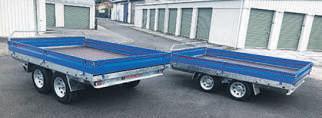


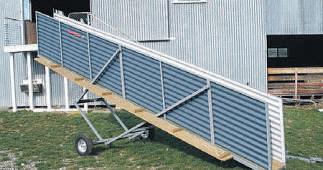


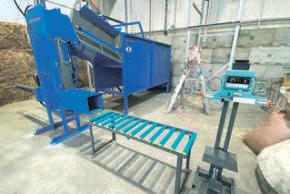
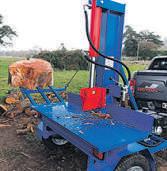
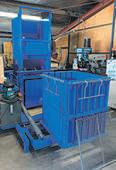
A Bay of Plenty technical lab manager has taken the top spot in the 2025 National Young Grower of the Year competition.
Bay of Plenty technical lab manager Phoebe Scherer has won the coveted 2025 Young Grower national title.
Scherer, who works for Apata in Tauranga, is also the Bay of Plenty regional champion.
The 29-year-old competed against six other regional winners in challenges at Lincoln University in Christchurch on September 10-11.
Runner-up was Steven Rink, the Canterbury regional champion, a production manager for Oakley’s Premium Fresh Vegetables in Southbridge.
Third spot went to Amelia Marsden, representing Nelson, a kiwifruit manager at Willisbrook Orchards in Brightwater
Seven finalists competed in practical and theoretical horticulture modules, testing their vegetable and fruit-growing knowledge and skills needed to be successful growers.
Scherer said she had thoroughly enjoyed stepping up to the many challenges.
“The science and technical modules were my safe space, but others I found much more challenging, particularly the machinery section. We had to drive a big tractor along a GPS line. It was the biggest piece of equipment I have ever stepped into, but we were very well supported.
“It was a very high-calibre field of
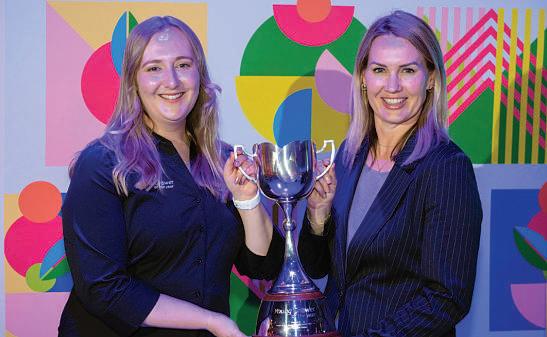
Other 2025 finalists were:
■ Gisborne: Rhiannon Morrell, a member of the technical team for apples for Craigmore Sustainables.
■ Hawke’s Bay: Sam Carter, from Havelock North, assistant manager for T&G’s Pakowhai Sector
■ Pukekohe: Crop manager Jack Haddon, who oversees Balle Brothers’ cauliflower and cabbage operation.
competitors and everyone did so well. I could not have asked for a better cohort to have shared such a great experience with.
“In some ways, it didn’t feel as if we were competing because we were all so supportive of one another – it was more like being among friends, all going out there to take on the challenges and do our very best.
“Thank you to the organisers – a big shout-out to Horticulture New Zealand
Technical lab manager
Phoebe Scherer has beaten six other finalists to win the 2025 National Young Grower of the Year title. She also earned the Best Technical award.
Scherer, far left, receives her award from Associate Minister of Agriculture Nicola Grigg.
(HortNZ) – to the sponsors and all the people who are part of making Young Grower such a great event.”
Scherer gained an evolutionary biology degree and did an OE before taking a job in the kiwifruit industry in Tauranga seven years ago. That led to a laboratory job and career progression.
She joined Apata, a specialist service provider for New Zealand kiwifruit and avocado growers, last year.
The Young Grower competition celebrates the success of young people in the industry as well as encouraging others to consider a career in horticulture.
Winners were announced at the annual awards gala dinner held at the Air Force Museum of New Zealand, Wigram, on September 11, where finalists also participated in the Leadership panel event sponsored by Ballance Scherer also won the Best Technical award and Steven Rink the Best Innovation award. Lydia Goodman, representing Central Otago, won the
Outstanding Leadership Award. Goodman is assistant orchard manager at Central Orchard Management and packing manager at CentralPac.
Regional organisers host and run the regional competitions independently, with Horticulture New Zealand (HortNZ) hosting the final in a different part of the country each year. Entry is open to both commercial fruit and vegetable growers from across the regions, up to age 30
HortNZ chairperson Bernadine Guilleux said the regional and national competitions play an important role in raising awareness about the many career and personal development opportunities across the horticulture sector.
“The exceptional skills we once again saw in all our finalists, and the support, passion and enthusiasm from participants, organisers and supporters really sums up the spirit of the horticulture sector.”
HortNZ chief executive Kate Scott said the regional and national competitions were made possible by the dedication of people who had given significant time and effort to organise and help run the events.
“This is a very exciting time for the industry as we focus on our ambitious goal to double the farmgate value of horticulture in New Zealand.
“We need many more highly skilled young people, like our finalists, who want to build rewarding careers in jobs they really enjoy, take advantage of the many opportunities for professional development and be prepared to step up as the leaders of the future.
“There are many opportunities, from crop management and machinery operation to soil science, quality control and marketing and much more.”
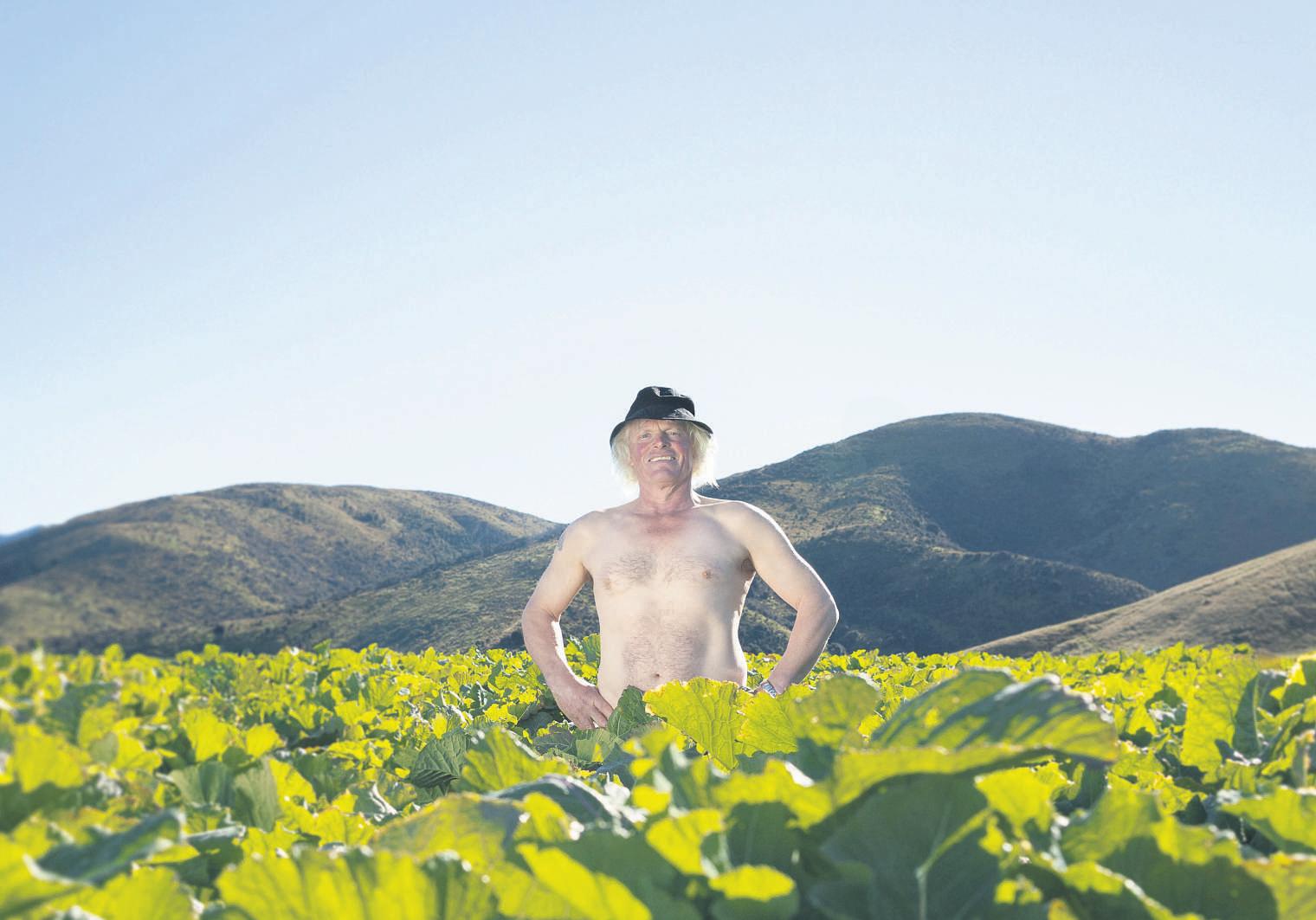






The team at Peninsula explains what the recent legislative amendments mean for farmers.
In August 2025, a quiet but powerful shift took place in New Zealand’s employment law. Pay secrecy clauses
once a standard feature in many employment agreements – are no longer enforceable.
This change, introduced through amendments to the Employment Relations Act 2000, is designed to promote transparency and fairness in workplaces, including in rural industries, where pay structures can vary widely.
For farmers, agricultural contractors and rural business owners, understanding what this change means is essential – not just for compliance, but for maintaining trust and morale among staff
What’s changed?
Previously, employers could include clauses in employment agreements that prohibited employees from discussing their wages, bonuses or other financial benefits. Breaching these clauses could result in disciplinary action.
However, under the new law, employees are now legally protected if they choose to disclose or discuss their own remuneration – or even ask about someone else’s.
This means that if an employee tells a colleague what they earn or asks another employee about their pay, the employer cannot take adverse action against them
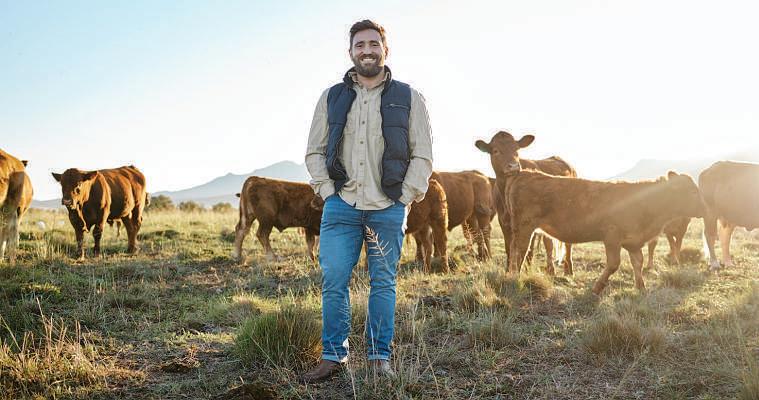
Doing so could expose the employer to a personal grievance claim.
The act now includes a new ground for a personal grievance. If an employer engages in adverse conduct such as disciplining, terminating or pressuring an employee to resign, based on the ground that the employee disclosed or discussed remuneration, the employee may have legal grounds to challenge that action.
To successfully raise a grievance, the employee must show:
■ That adverse conduct occurred; and
■ That their disclosure of remuneration was a significant reason for that conduct
Importantly, this protection applies even if the employee didn’t reveal exact figures, or if the discussion happened
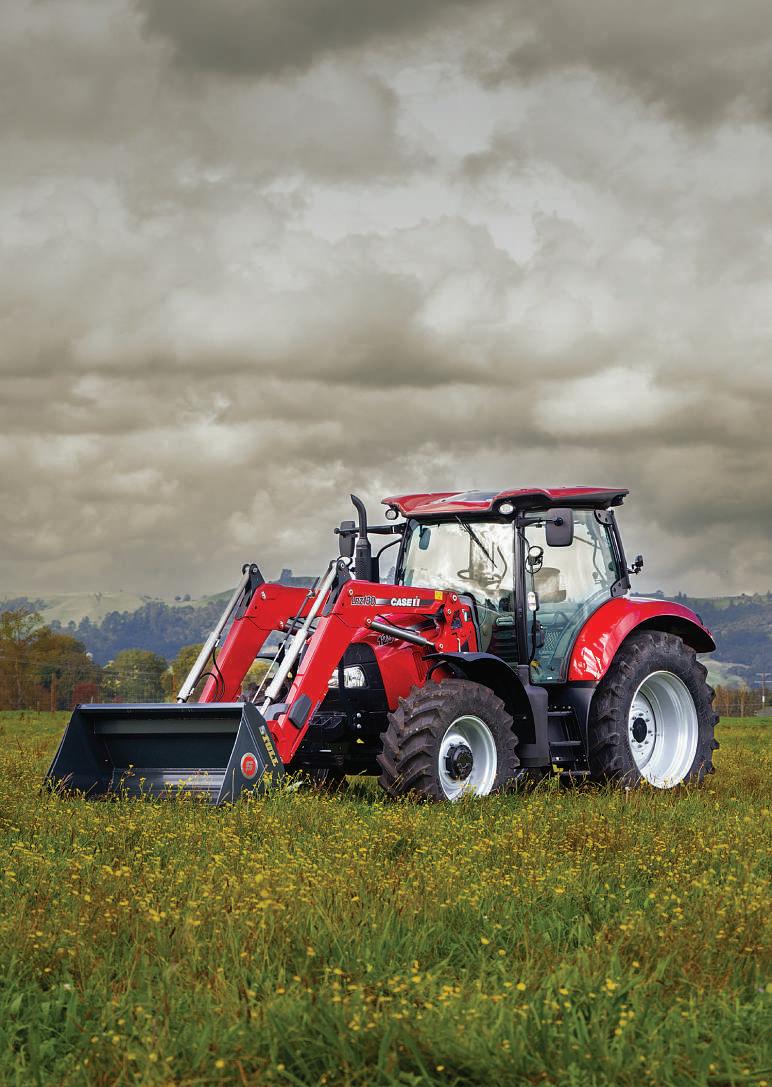
outside the workplace. The law is designed to lead to greater transparency in pay and allow any pay discrimination to be more easily identified and redressed.
If your current employment agreements include pay secrecy clauses, you don’t need to formally rewrite them, but you must recognise that these clauses are now unenforceable. Best practice is to remove them from future agreements and avoid any policies or verbal instructions that discourage pay discussions.
Employers should also ensure that managers and supervisors are aware of the change. Any adverse action taken against an employee for discussing pay could result in legal consequences, even if the action was based on outdated policies.
Will this create tension?
Some employers worry that open discussions about pay could lead to conflict or dissatisfaction. While this is a valid concern, it’s important to remember that transparency can also foster trust and accountability.
Pay differences are allowed, as long as they’re not based on prohibited grounds such as gender, race or age.
Employers are free to negotiate pay based on market conditions, experience, skills and qualifications. What’s crucial is that these decisions are fair, documented and defensible.
Importantly, the new law does not mean that employees have to disclose their pay, but rather that they are protected if they choose to do so.
Of course, employers must comply with their obligations of confidentiality towards employees and should not disclose their pay, without the employee’s permission.
What this means for rural workplaces In rural industries, where teams are often small and roles can be diverse, transparency around pay can help reduce misunderstandings and improve workplace culture. It can also support efforts to close pay gaps and ensure fair treatment across the board.
For employers, the key is to embrace the change proactively. Review your employment agreements, update your policies and talk openly with your team about what the law means.
Transparency doesn’t have to be a threat, it can be a tool for building stronger, more resilient workplaces.
Case IH is thetrusted choice for mixed-farmenterprises to accomplish any task.Wefocusonwhat matters most: outstanding manoeuvrability, operator-friendly design, compact dimensions, and ahigh power-to-weight ratiofor maximum productivity.
Foralimited time,get aFREE RedXtend Total Protect warranty upgrade^ —available on selected Farmall, Maxxum, Puma and Optumtractors —that’s3yearsor3,000 hoursoftotal peace of mind. Plus,lock in low0.99% P.Afinance^ over 3yearsacrossthe whole range. Field-readyvalue you can count on
For more information visit caseih.co.nz or visit your local Case IH dealer

Quad bike advice compiled by Safer Farms is based on farmers’ real-life experiences of injuries and near-misses.
Ahistorical seasonal issue involving rollovers of quad bikes towing calf feed trailers has prompted a safety alert from Safer Farms
There is a pattern, and while many of these incidents have been ‘near-misses’, there have also been injuries sustained. Any rollover has the potential to result in serious injuries or a fatality.
A common cause of rollovers is that the quad bike being used is not weighted to tow the loaded weight of the calf feed trailer. A thousand litres of milk weighs 1000 kilograms plus the weight of the trailer.
Other common causes include a sudden change of direction by the driver, driving on uneven or slippery ground or steep grades, inexperienced drivers, and driver inattention or distraction
The safety alerts are real-life documented incidents and key lessons provided by farmers, then condensed into one-page handouts that managers can use in safety discussions with their teams.
This alert can be used by farmers to discuss where best to feed calves so they can be accessed safely, and the importance of reconsidering the access if necessary so you can drive in and out safely.
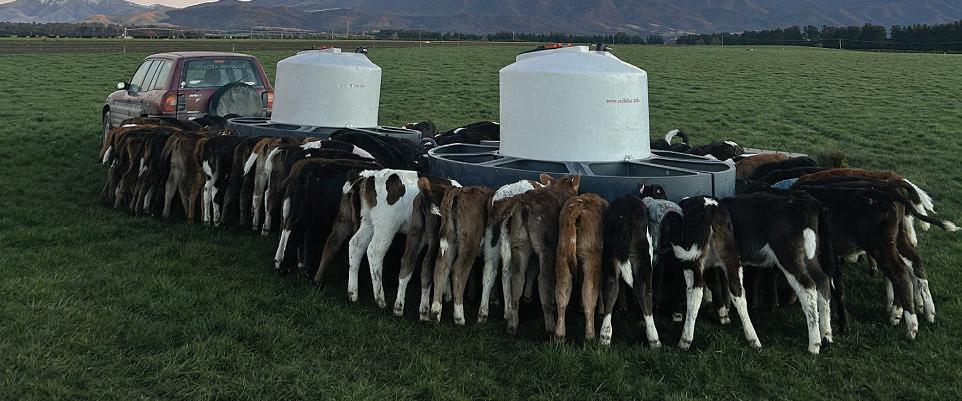
Safer Farms is a membership organisation that recognises the whole sector benefits from improved health and safety
It brings together farmers and senior leaders from agribusiness, agricultural industry groups and government.
This article is part of its safety alert series, with lessons from real-life incidents that have happened on farm. They are part of Safer Farms’ Farm Without Harm strategy and action plan, which has been developed by the agriculture sector for that sector
Baffles in tanks will also reduce sloshing, which can cause instability
Where possible, consider towing the feeder trailer with a larger vehicle, such
Safety alerts are a great way to learn from incidents that have happened on other farms. Ask yourself:
■ Could this happen on my farm?
■ What do I have in place to prevent this from happening?
■ How can I implement these lessons?
New safety alerts are added regularly To see others, or subscribe to have safety alerts emailed to you, see farmwithoutharm.org.nz/safety-alerts.
as a ute. However, if you must use a quad bike, it is important to:
■ Know the loaded weight of the trailer and never exceed the towing capacity set

There have been a number of reported incidents of quad bikes towing calf feeders rolling over, and farmers should consider using a ute or a car instead.
out by the quad bike manufacturer;
■ Reduce the load if conditions are uneven or slippery, or it is steep terrain;
■ Ensure drivers are adequately trained for the task and know when to stop if conditions are unsafe;
■ Make sure drivers always have a reliable way to call for help;
■ Consider installing a crush protection device (CPD) or other rollover safety system.
Safer Farms is seeking motivated sector members to join its Farmer and Grower Reference Group to play a key role in shaping practical harm prevention initiatives. If you are passionate about improving sector safety and wellbeing, and can contribute your voice and experience, please contact info@saferfarms.org.nz.



As the days lengthen and pastures green up, the focus for New Zealand’s sheep farmers shifts to one of the most important investments of the year: securing new genetics at the upcoming ram sales.
This is a critical time to make decisions that will directly influence flock productivity and profitability for seasons to come. The market is constantly evolving, shaped by global meat and wool prices, advancements in breeding science, and a strong push
towards greater on-farm efficiency.
The current state of the New Zealand market
This year’s ram sale season in New Zealand is set against a backdrop of fluctuating returns for lamb and wool, making smart purchasing decisions more crucial than ever. Despite economic pressures, the demand for high-performance, genetically superior rams remains robust.
Farmers are looking past the sale yard aesthetics and focusing on sires that can deliver measurable gains in efficiency,

resilience and product quality.
A key trend dominating the Kiwi market is the widespread adoption of breeding values (BVs) and indexes provided by services like SIL (Sheep Improvement Limited).
Farmers are increasingly using this data to select rams that excel in specific traits, whether it’s for worm resistance (FECORE), growth rates, meat yield or maternal worth.
This data-driven approach is creating a clear premium for rams with proven, highranking genetics that align with modern farming goals.
There is also a growing emphasis on rams bred for resilience and suitability to New Zealand’s diverse environments.
With increasing pressure to farm with a lighter environmental footprint, rams that produce hardy, efficient offspring capable of thriving on pasture-based systems with fewer inputs are highly sought after. This presents an opportunity for buyers to find genetics that not only boost performance, but also enhance the overall sustainability of their operation.
CONTINUESONPAGE44





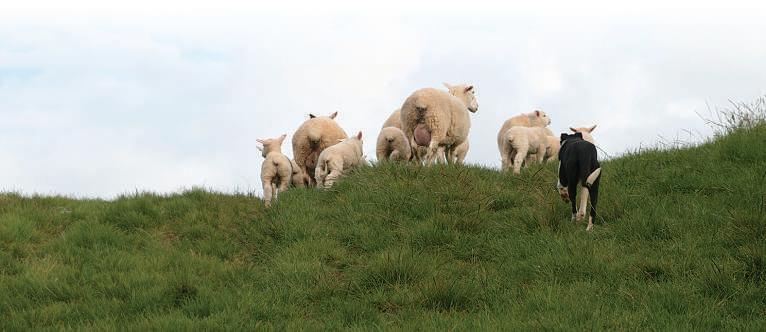
Pre-Sale Ram viewingday
November19th2025, 1-4pm, 157Georges Road,Waipara
Ram Auction
November24th2025, 1pm, 27 DarnleyRoad,Waipara
www.mtcass.co.nz
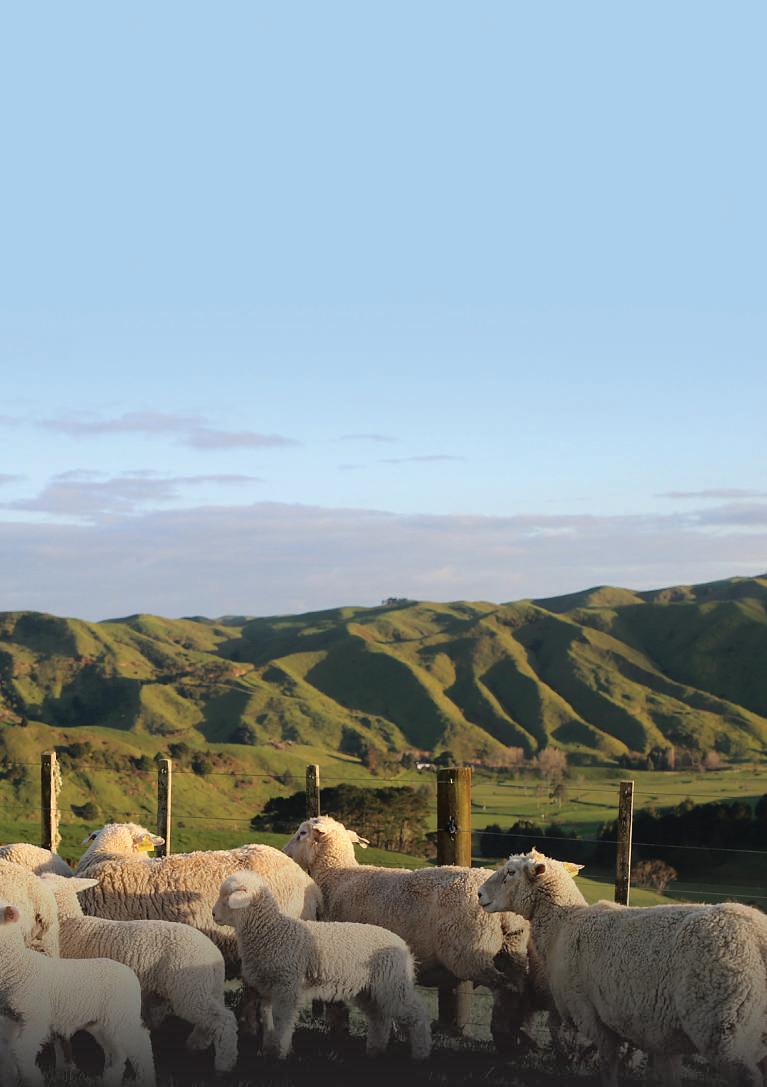



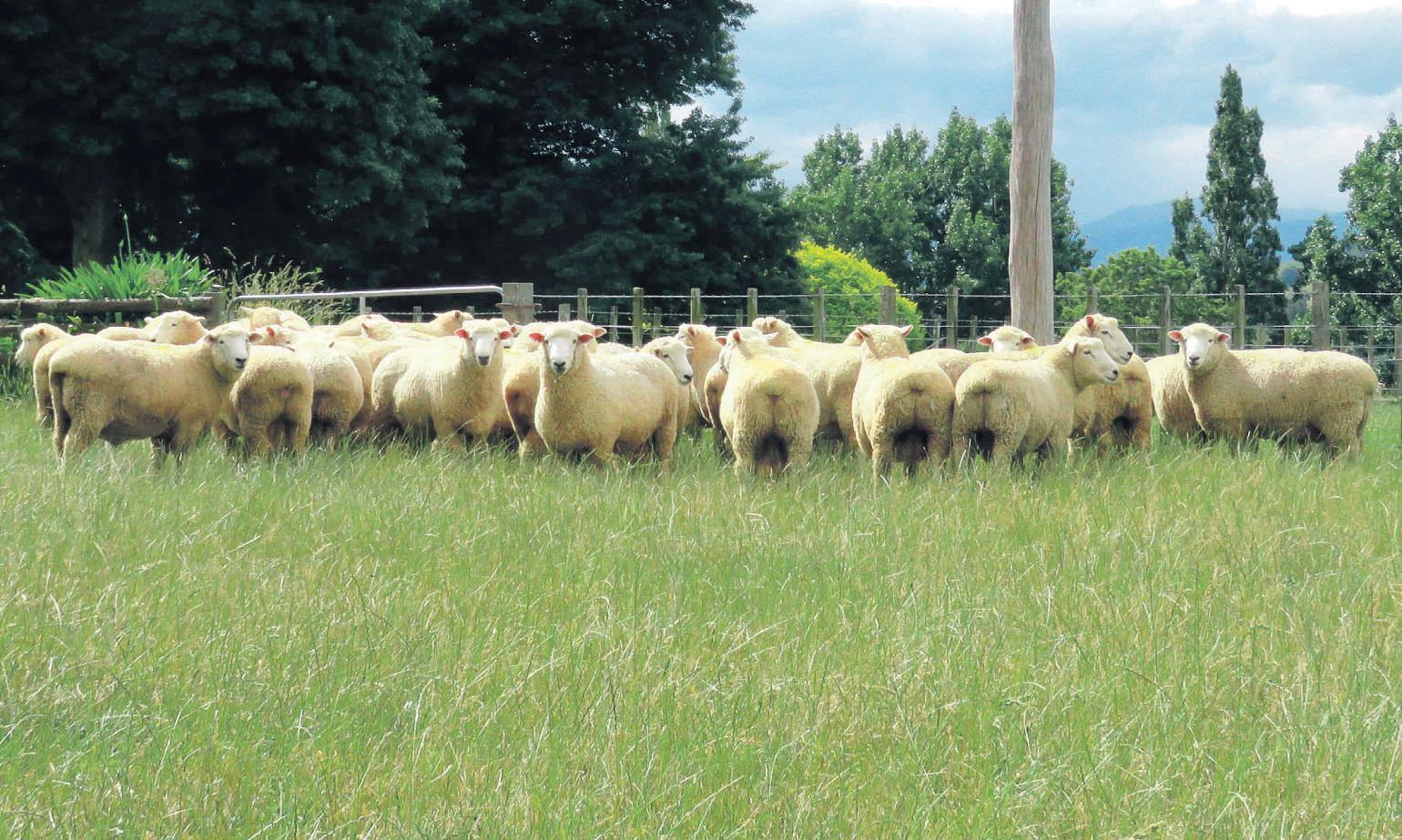



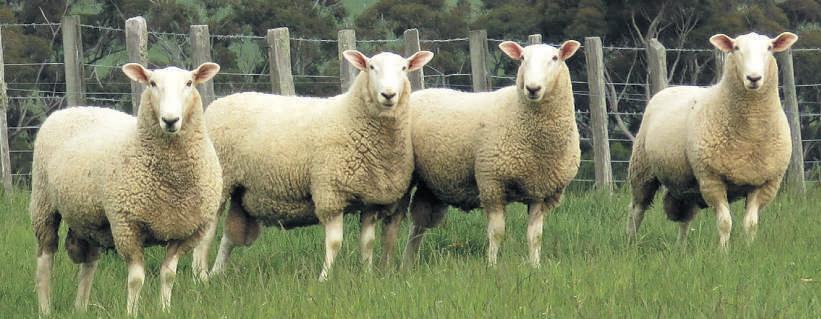




The CLiK range of products has been the trusted name in providing effective flystrike protection in New Zealand for 25 years.
The active ingredient in CLiK, dicyclanil, was developed by Elanco in the late 1990s to ensure effective protection against flystrike. Dicyclanil is recognised as one of the most potent Insect Growth Regulator active ingredients that has been brought to market for flystrike protection.
It has been available under the CLiK brand since 1998, with CLiKZiN launched in 2014 and CLiK Extra in 2018, giving famers the flexibility to apply the product with the protection period most suited to their flock.
The protection periods for the CLiK range offer farmers cost-effective flexibility by covering a range of protection periods.
CLiKZiN offers six to nine weeks’ protection with a seven-day meat withhold; CLiK offers 10 to 18 weeks with a 56-day meat withhold for Merinos and 35 days for other breeds; CLiK Extra offers 14 to 26 weeks with a 21-day meat withhold.
This versatility allows sheep farmers to choose the flystrike protection that best suits their needs.
Elanco’s commitment to enriching animals’ lives is demonstrated by the extensive trials carried out with the CLiK range of products on New Zealand farms.
The most recent product, CLiK Extra, was tested in field trials involving more than 8000 animals across 16 sites between 2014 and 2016, to ensure CLiK delivers on its label claims (1) Given the cost and welfare implications of poor flystrike protection, it is essential

that the broader sheep farming industry understands how products work and how to maximise the benefit from available prevention treatments.
Many factors, such as inadequate application and heavy rainfall, can result in products providing a shorter-thanexpected protection period, with a recent study in Australia finding resistance in strike flies to a wide range of preventative treatments, including cyromazine (2).
This resistance shows up as a shorterthan-expected protection period.
Elanco monitors all reports of shorterthan-expected protection, including resistance testing, as part of product performance investigations.
To date, the results of these studies indicate that strike flies have not developed any meaningful resistance to dicyclanil in New Zealand. However given the potential for strike flies to develop resistance to chemicals, it is important that farmers follow label instructions regarding application closely and report all instances of less-thanexpected protection to the product manufacturer.
(1) Elanco data of file. YAR-13-034, NAH-15-230
(2) Sales N, Suann M, Koeford K 2020. “Dicyclanil resistance in the Australian sheep blowfly, Lucilia cuprina, substantially reduces flystrike protection by dicyclanil and
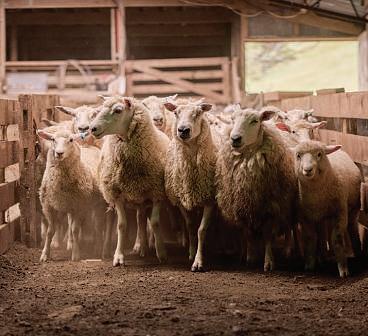
Dicyclanil, the active ingredient in CLiK, CLiK Extra and CLiKZiN, was developed by Elanco in the 1990s to ensure effective protection against flystrike. The protection periods for the CLiK range offer farmers cost-effective flexibility by covering a selection of protection periods
cyromazine based products.” International Journal for Parasitology: Drugs and Drug Resistance Volume 14, December 2020, Pages 118-125
Always read and follow label instructions. CLiK, CLiKZiN, CliK Extra and Cyrex Liquid are registered pursuant to the ACVM Act 1997 numbers A6606, A10284, A011384 and A09917 See www.foodsafety.govt.nz for registration conditions. Elanco Australasia, 106 Wiri Station Rd, Manukau, 2104. Elanco, CLiK, CLiKZiN, CLiK Extra and the diagonal colour bar are trademarks owned or licensed by Elanco or its affiliates. © 2024 Elanco. For more information please contact Elanco on 0800 ELANCO (352 626)

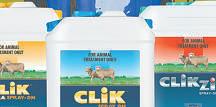








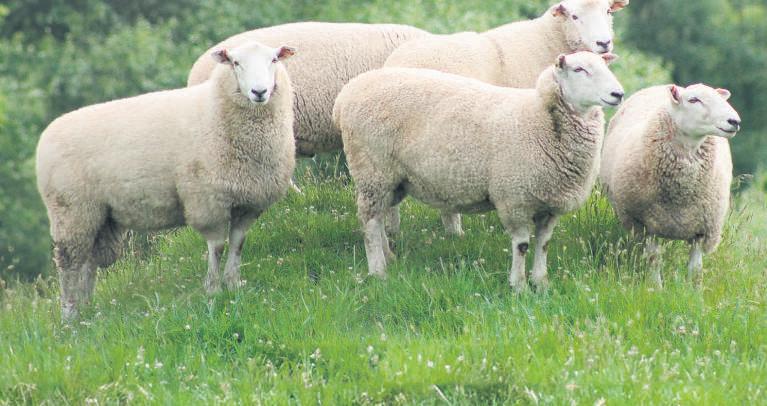









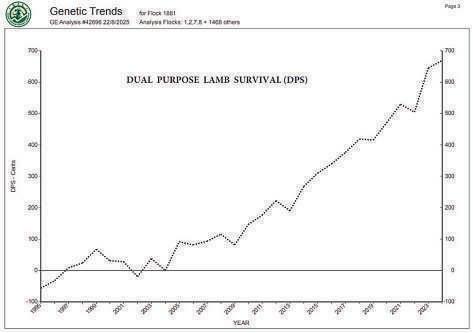


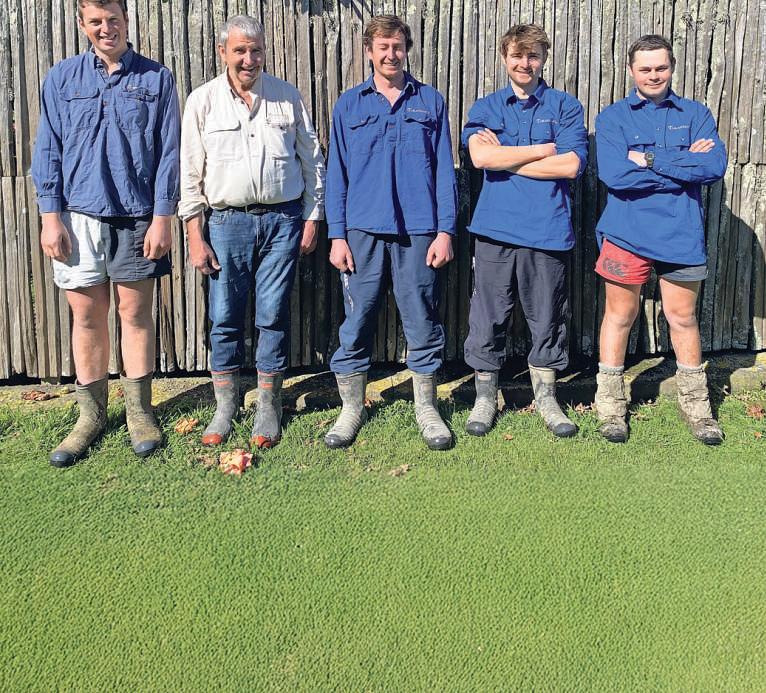
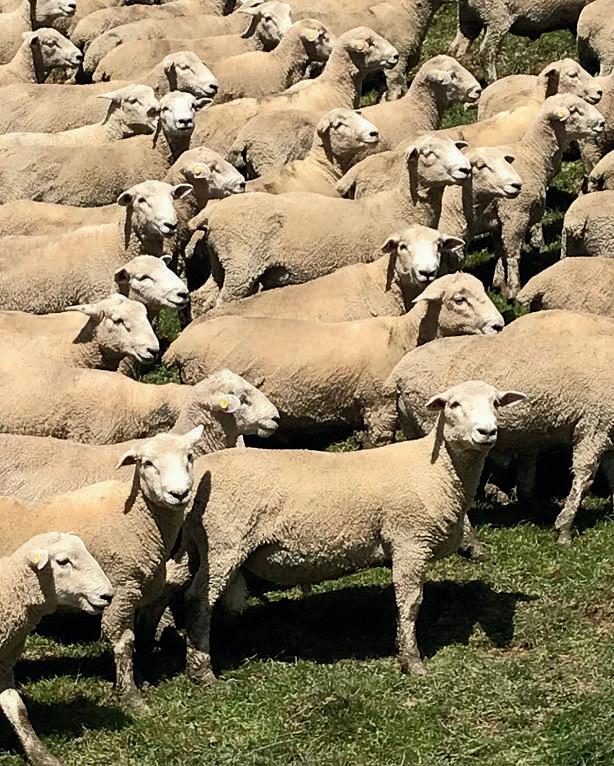
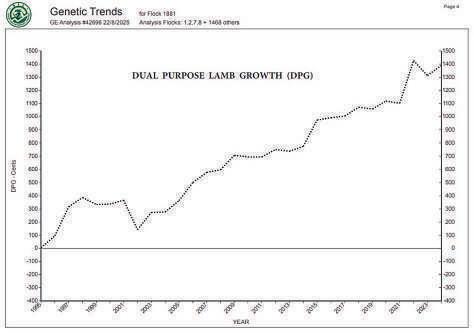
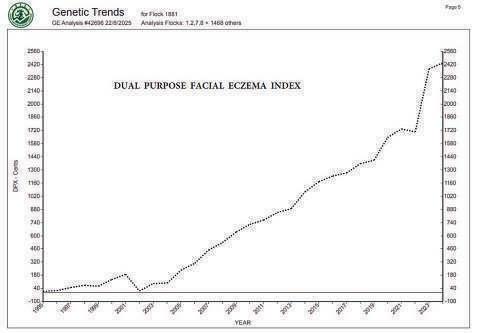
Preparing for sale day: Your checklist for success
Going to a ram sale unprepared can be a costly mistake. A successful purchase begins with careful planning long before the auctioneer’s hammer falls.
■ Define your breeding goals: What does your flock need? Are you breeding maternal replacements and need a ram with strong maternal traits like fertility and milking ability? Or is your focus on producing prime terminal lambs, requiring high growth rates and superior carcass attributes? Having clear objectives will help you filter the catalogue and focus on rams that match your system.
■ Do your homework on genetics: Get the sale catalogue early and study it. Pay close attention to the SIL breeding values. Understand what the different indexes – such as NZMW (New Zealand Maternal Worth) and NZTW (New Zealand Terminal Worth) – mean for your operation. Don’t hesitate to call the breeder beforehand to discuss their rams and your specific needs. Reputable breeders are passionate about their stock and happy to share their knowledge.
■ Set a realistic budget: Know your limit before you start bidding. While it can be tempting to chase a top-priced ram, the best value comes from a ram that delivers a solid return on your investment. Analyse the potential value a ram’s genetics will add to your lamb crop versus his purchase price. Often, the most sensible buys are found in the mid-range of the sale.
■ Knowyour ewe flock: Honestly assess the strengths and weaknesses of your ewes. If your ewes lack vigour or have conformation issues, you need to select a
ram that is exceptionally strong in those areas to drive improvement. Your new ram should complement your ewes, not amplify their faults
Key traits to look for in a ram
On sale day, combining the data with a thorough physical inspection is essential
■ Structural soundness: This is non-negotiable. A ram must be physically capable of his job. Check his feet and legs for good structure and strength. He should walk freely without any sign of lameness. Look for a straight back, good pasterns and a strong jaw. Any structural fault can be passed on to hundreds of lambs.
■ Fertilityand fitness: The ram’s core purpose is to get ewes in lamb. He should have two well-developed, firm and even testicles. He should be in good ‘working clothes’ – fit and athletic, not overfed and sluggish. An alert, healthy appearance is a good indicator of his readiness for the breeding season.
■ NewZealand-specific traits: Look for traits that matter in our farming systems. This includes evidence of resilience, such as BVs for facial eczema tolerance if you farm in susceptible North Island regions. For meat breeds like Romney, Texel or Suffolk crosses, check for BVs related to meat yield and growth. If wool is a key driver, assess the fleece for the quality, colour and character your market demands.
■ By blending careful research with a keen eye for physical quality, you can invest with confidence at the sales. The right ram is more than just a purchase; it’s a strategic tool to build a more productive, resilient and profitable flock for the future.




Meldrumhas been producing hardy, productivehill producinghardy,productivehill country Romneysfor 55 yearswith900 SIL recorded ewes countryRomneys for55years with 900SIL Robust performanceselection ensures only the Robustperformanceselection onlythe best 2thramsare available forsale 2thrams areavailablefor sale Growth rate;fertility; wool;parasiteresilience; survivability; easylambing easy lambing


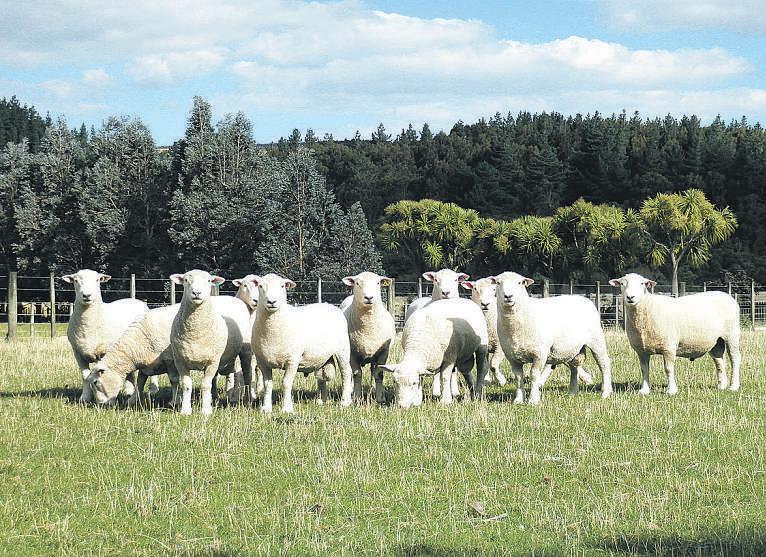


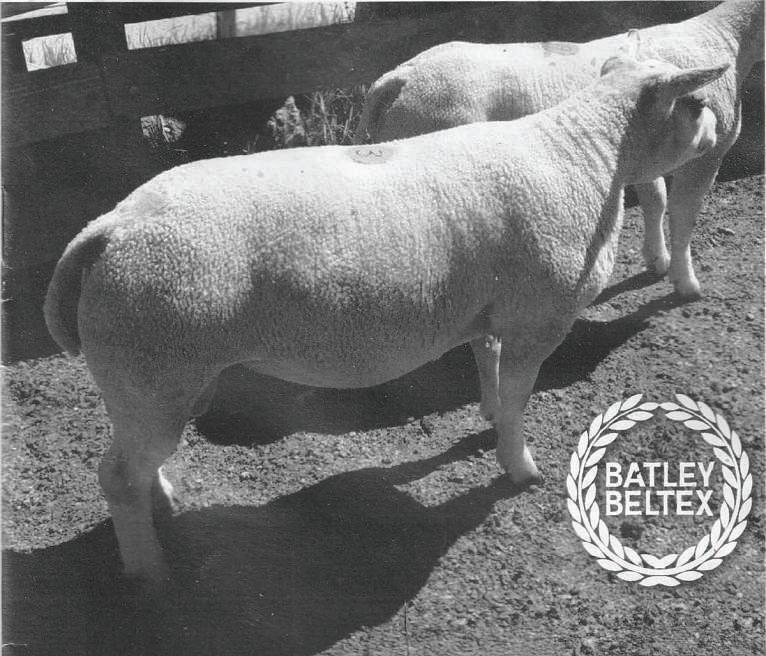
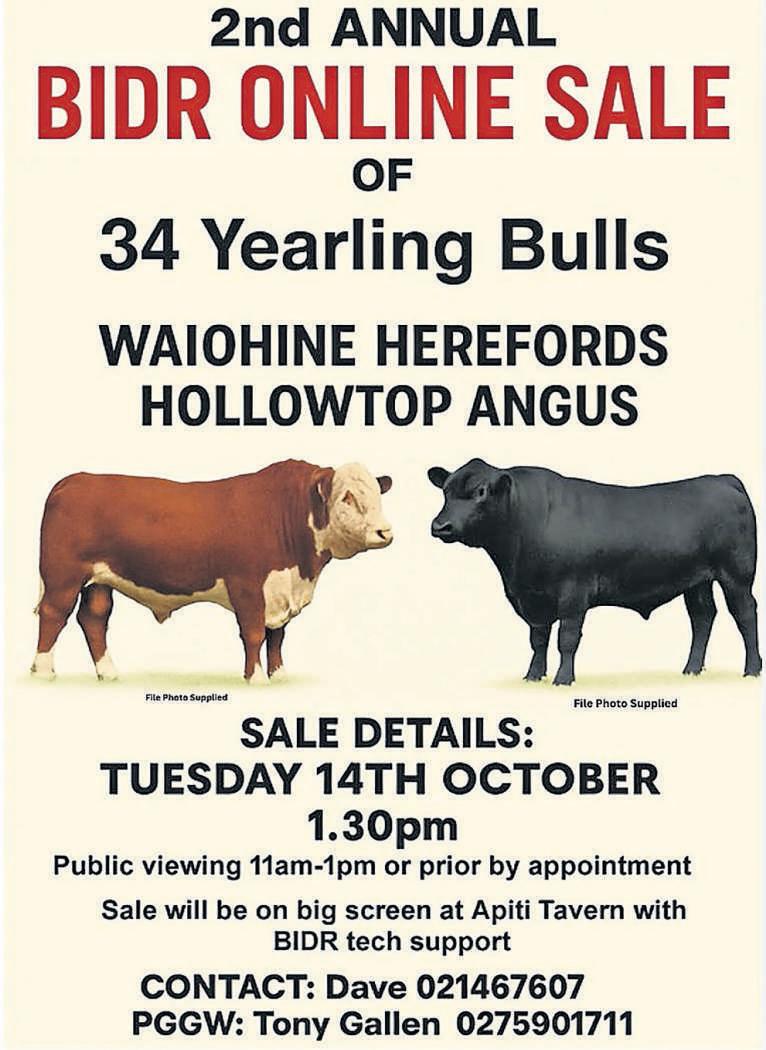






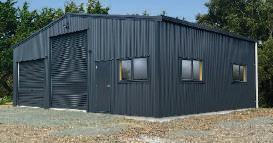
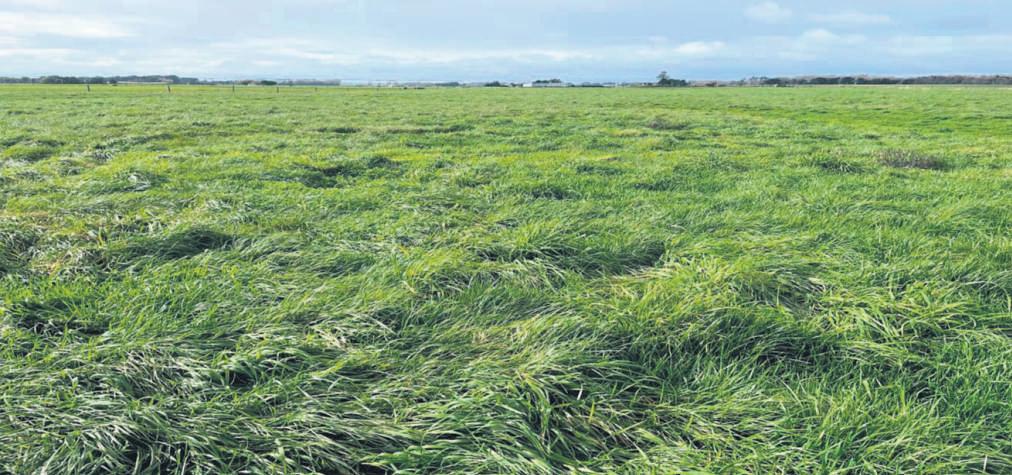
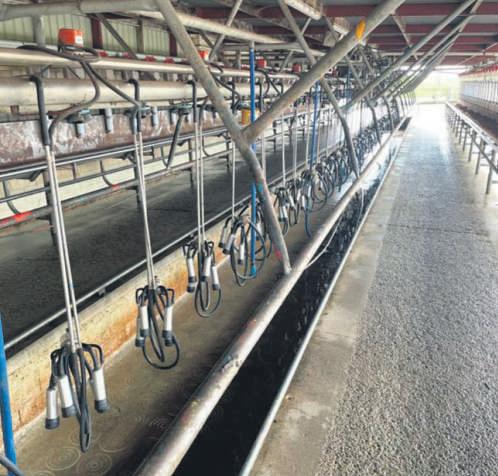
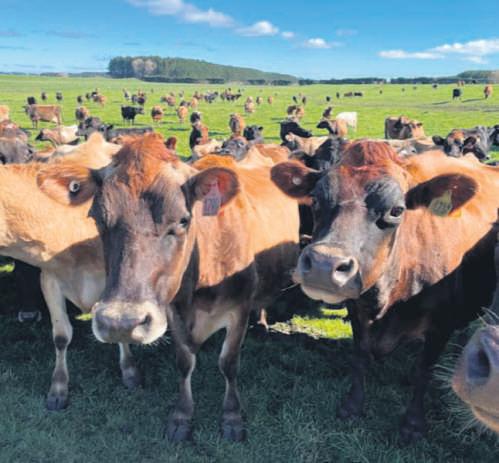

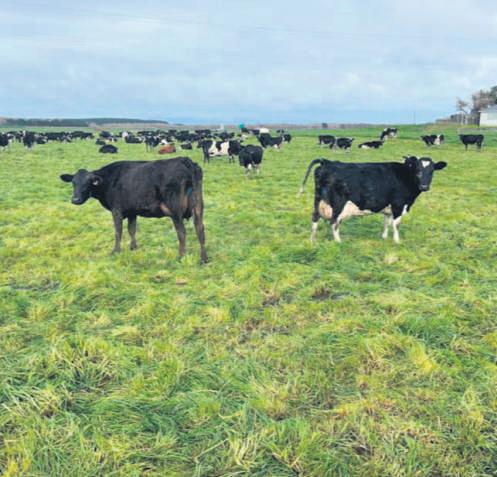
•Situated in theGlenOroua district of the Manawatuisthiswelllaidout 114Hadairy farm
•Withexcellent facilitiesincluding alovelyfourbedroom family home, 26 asideherringbone cowshed with in balefeeding and centre pivot irrigation.
•Currently milkingaround 350 cows with a production averaging around 155,000 Kg/MS.
•Ifyou arelookingfor awellperformingfarmin a good spot,then this couldbeyou.
• Priced to sell with takeover to suit
Call Lestoinspect anddiscuss your optionson0274420582
•Situatedona quietcountry road southofBulls,is this flat 214Hairrigateddairy farm
•Witha mix of strong sandyflats with some lighter country, that is well racedand laid out.
•Verygoodborewater supplies irrigators and farm
•Currently milkingover600 cows with production averaging 235,000Kg/MS,thisfarmisa consistent performer.
•Infrastructureincludes agood herringbone cowshed, four bedroom family home, and good calfrearing andmachinery sheds.
•Ifyou arelooking foranall year-round performing property andenjoy acoastal lifestyle& freshfish, then this couldbefor you.
• Priced to sell. What’s your offer? Call Lestoinspect anddiscuss your optionson0274 420 582
•Situated on some of thebestsilt country southofBulls,isthis311 Ha property compromising of 246 Ha freehold, and 65 Ha Council lease.
•Withverygood soils,along with acoastalclimateand excellent irrigation, this property could havemany options from dairy through to growingvegetables
•Infrastructureincludes plentyof housing, averygoodcowshed along with feed pad and plentyof shedding
•Ifyou arelookingfor strong silt soils,coastalclimateand allyear round production, then this property couldbefor you.
Call Lestoinspect anddiscuss your options on 0274 420582
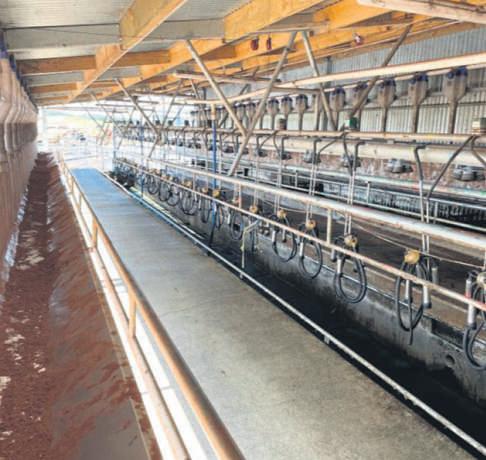



Arvidson Wiltshires -30YearsLeading theDevelopment of Shedding Sheep in NZ
•FUTURE FOCUSED -30YearsofPerformanceRecording Shedding Sheep
• FIRSTfor FACIAL ECZEMA -Ramguard™ since2006, 0.55.
•FIRST forPARASITES -Carla™antibodytestsince 2012.
•FIRST forMEAT, FERTILITY -AnimalPlan/SILrecording since1995
• TOPMEATYIELDINGRAMS -Low InputTrial Results.
•HOOF SCORING -EveryEwe and RamHogget


Slimmer &lighter than the Precision Series
2x clamp widths and 4levels of abrasion
Indexed rotating knife clamp for excellent accuracy

www.scarysharp.co.nz
Contact us: 0800 175 720 sales@scarysharp.co.nz
30 RegentStreet,Hawera|New Zealand
Manufactured by:Specialist Stainless Steel Products Limited


Freight free anywhere in NZ www.sisballcock.co.nz 0800175 720

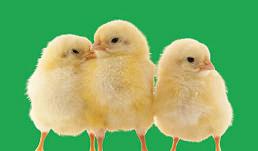


Only availabledirect from manufacturer
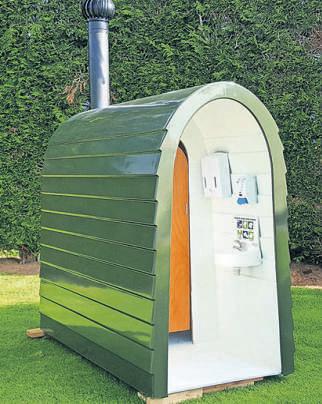



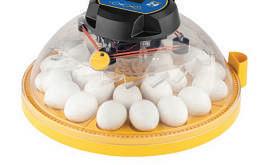


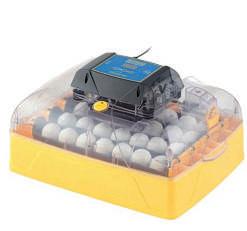



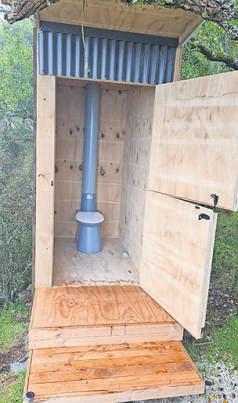
Drontal™ Tasty Bone provides New Zealand farmers with the same trusted worm controland treatment for Giardia*asthe Drontal™ for Dogs Flavoured Allwormer tablets it replaces.
Drontal™ Tasty Bone is aunique, bone-shaped tablet, made from 100% pork livermeal. Thereal meat flavour makesworming moreappealingtodogs, taking the hassle outofdeworming for farmers and their hardworking dogs.
Now available from yourpreferredwholesaler.









